Gallery
-
Weavers Down walk on 23rd November 2022
The rain had been heavy overnight but thankfully stopped by 10.00am and we had bright sunshine for our walk over the Weavers Down area. Starting out from The Deers Hut in Griggs Green we headed across the common to the north of Forest Mere, before turning south to skirt the renowned health spa. A couple of days may be a bargain at £630, and it may or may not include the " tension-relieving hot stone back massage and deeply relaxing scalp & foot massage." We resisted the temptation to spoil the walk and instead found a pleasant spot under the trees to have a short picnic, which, if not quite so relaxing, was definitely cheaper. After a walk alongside the Liphook Golf Course, we turned into Foley Manor and a wander down the drive to find a magnificent statue of Lord Strathnairn. It was in storage for 33 years after being found to be in the way of a new subway for Knightsbridge underground station. Eventually Westminster Council gave it/sold it to Foley Manor on condition it would be accessible to the public. Lord Strathnairn died aged 84 in Paris, was buried in Christchurch, Hants and never married. A heroic leader and strategist, he walked from Mount Lebanon to Beirut so that some of the elderly American missionaries he had rescued could be carried on his horse. When in command of the Central Indian Forces of 1,540 men, he routed 20,000 men of Tatya Tope's army. Guns captured by him during this period were later melted down to be used for his statue. After this we continued through the Foley Estate until we reached the path below Holly Hills, this path eventually leading us back to our start point. The Deers Hut was serving some excellent food, especially the bacon and brie baguette! The walk was about 4 miles.
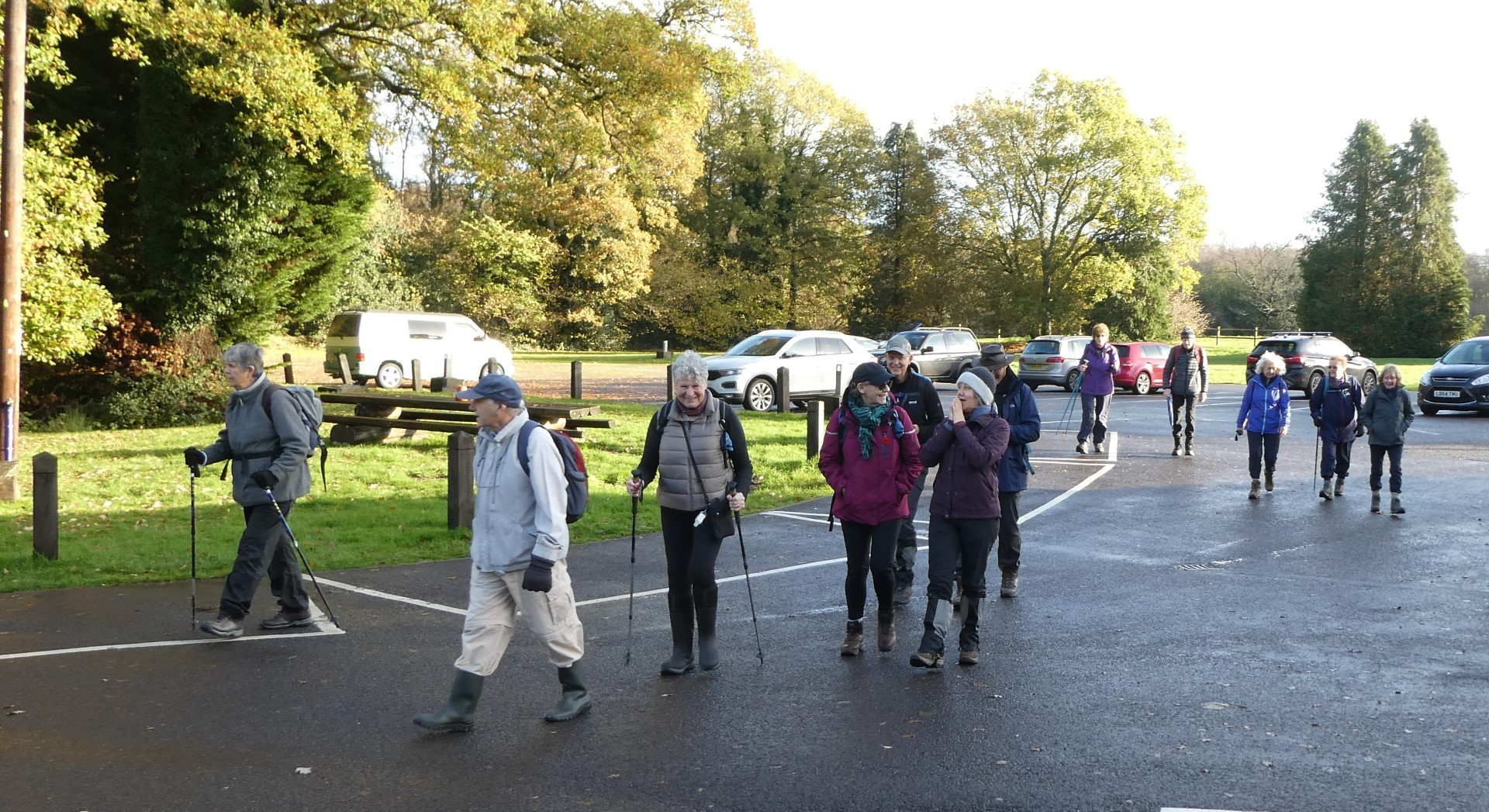
Starting out
.jpg)
Early morning rain hasn't quite all soaked away into the sand of Weavers Down
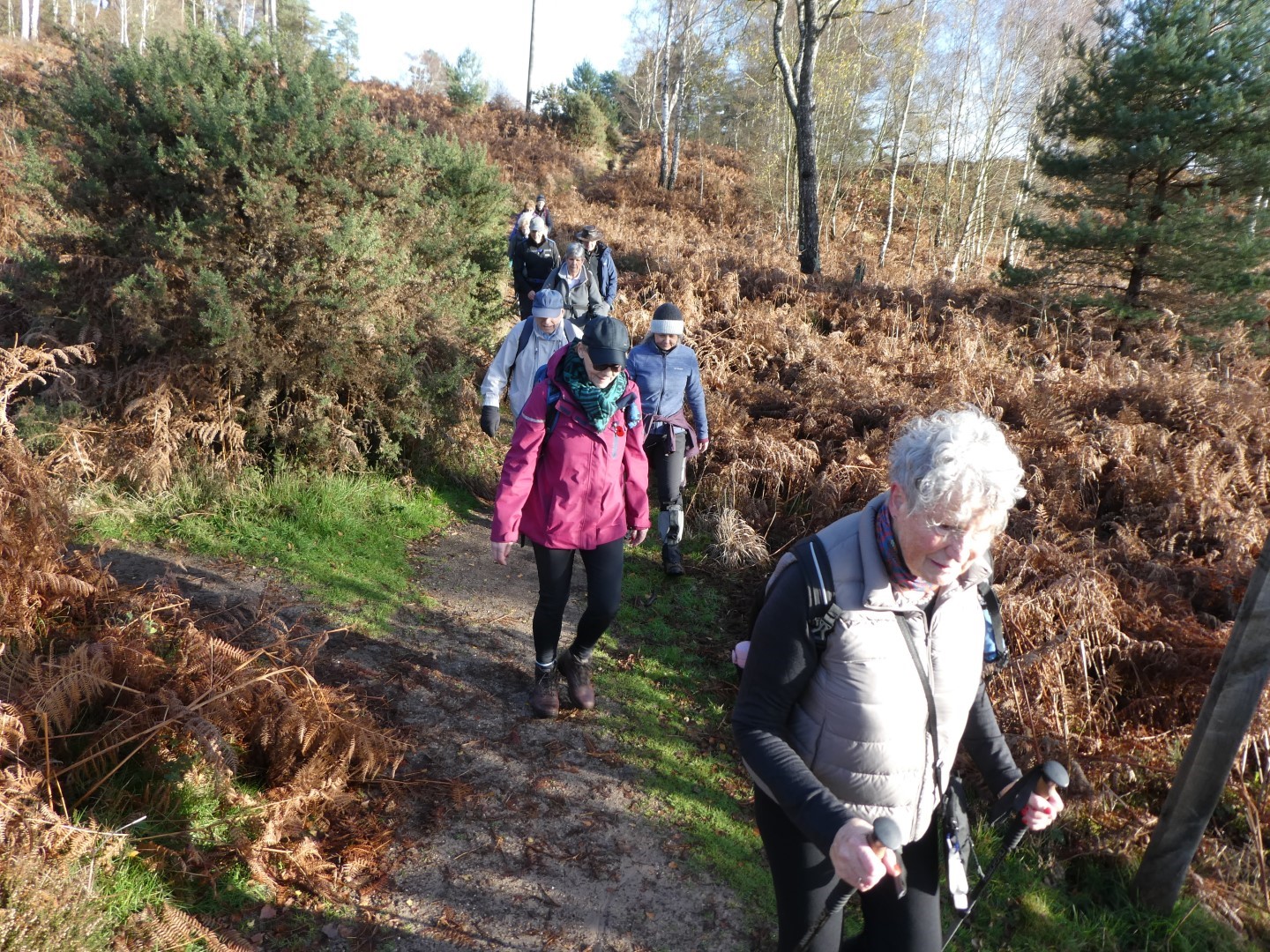
Bright sunshine was very welcome
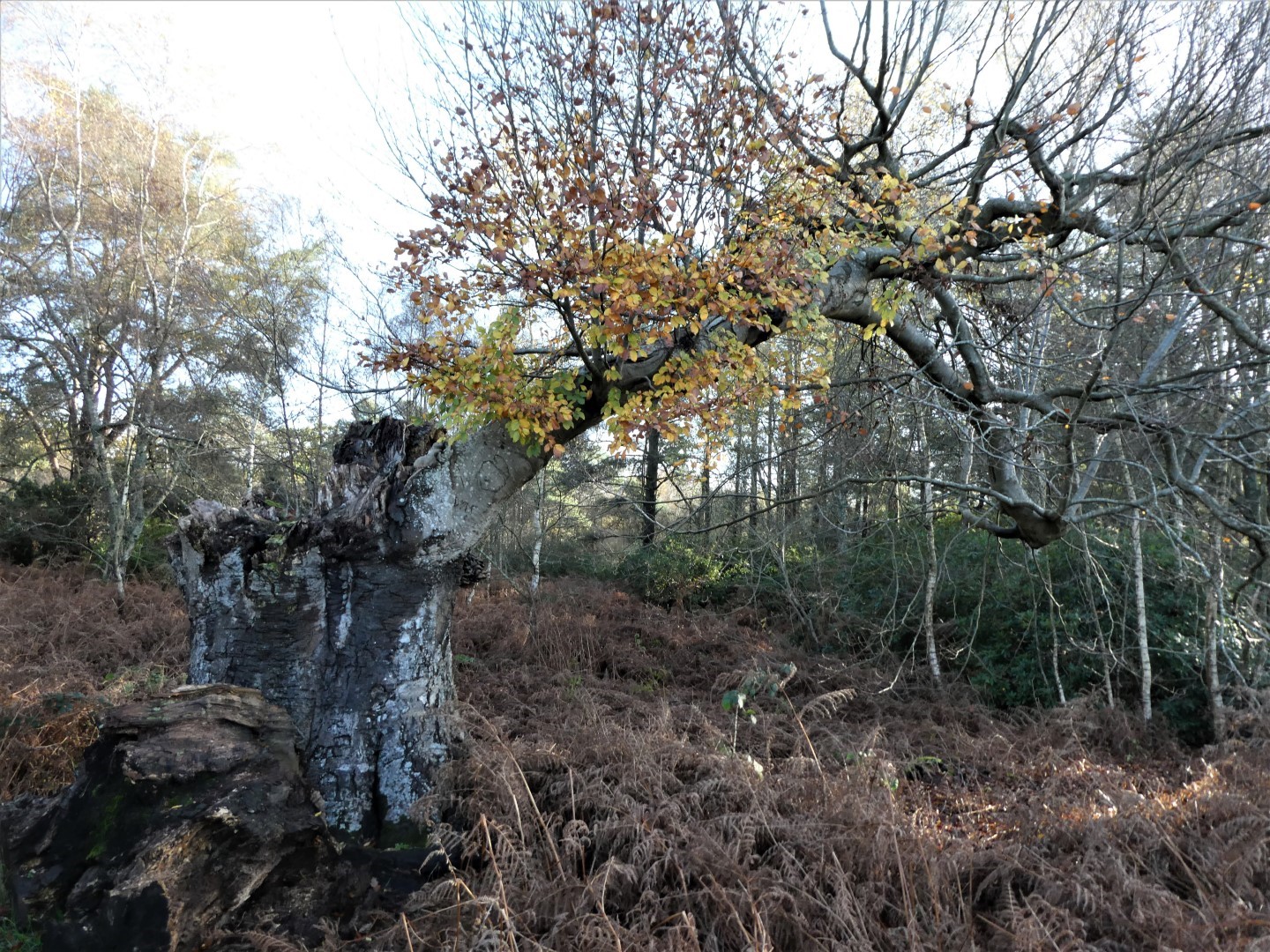
One branch struggling to survive
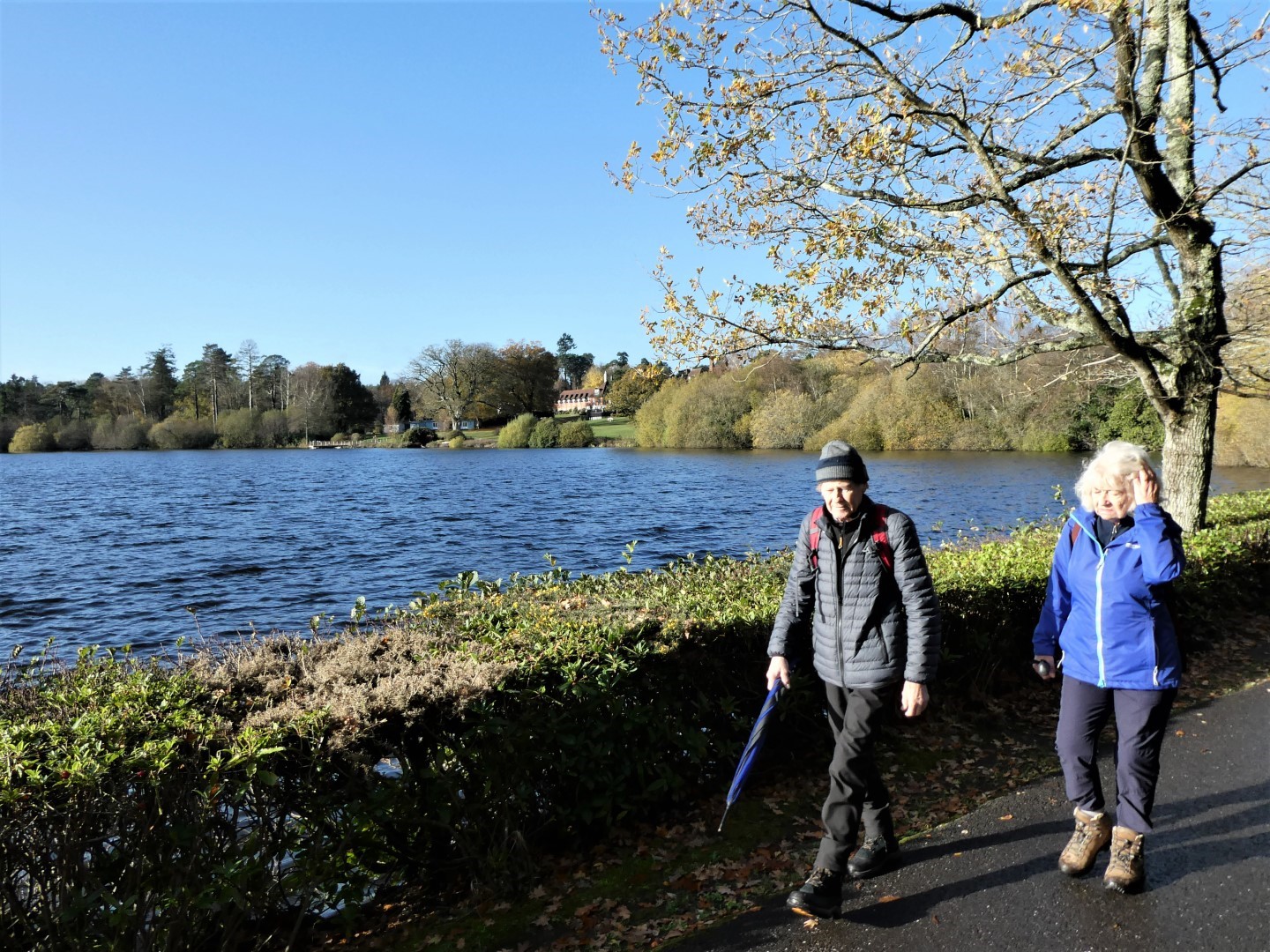
Forest Mere in the distance
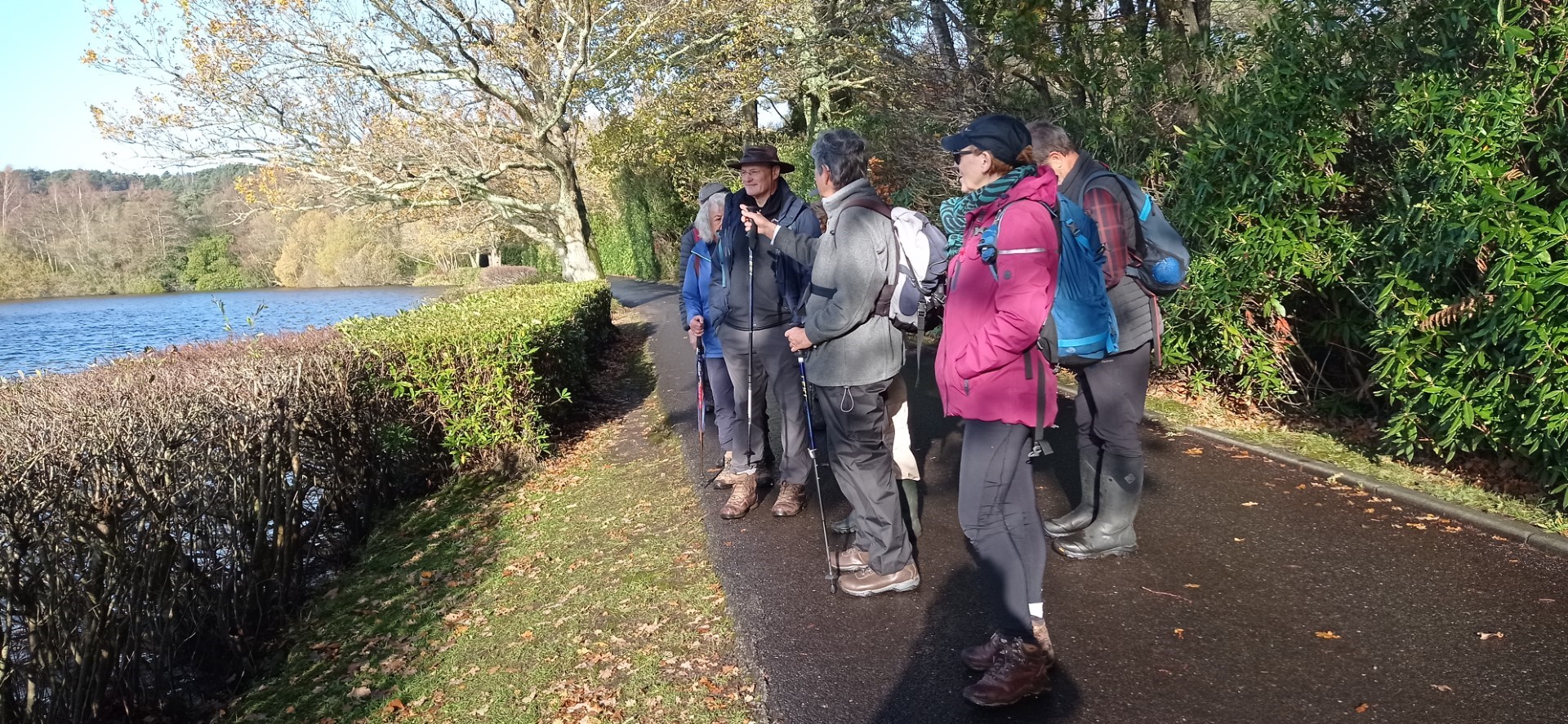
Bit too chilly for a swim
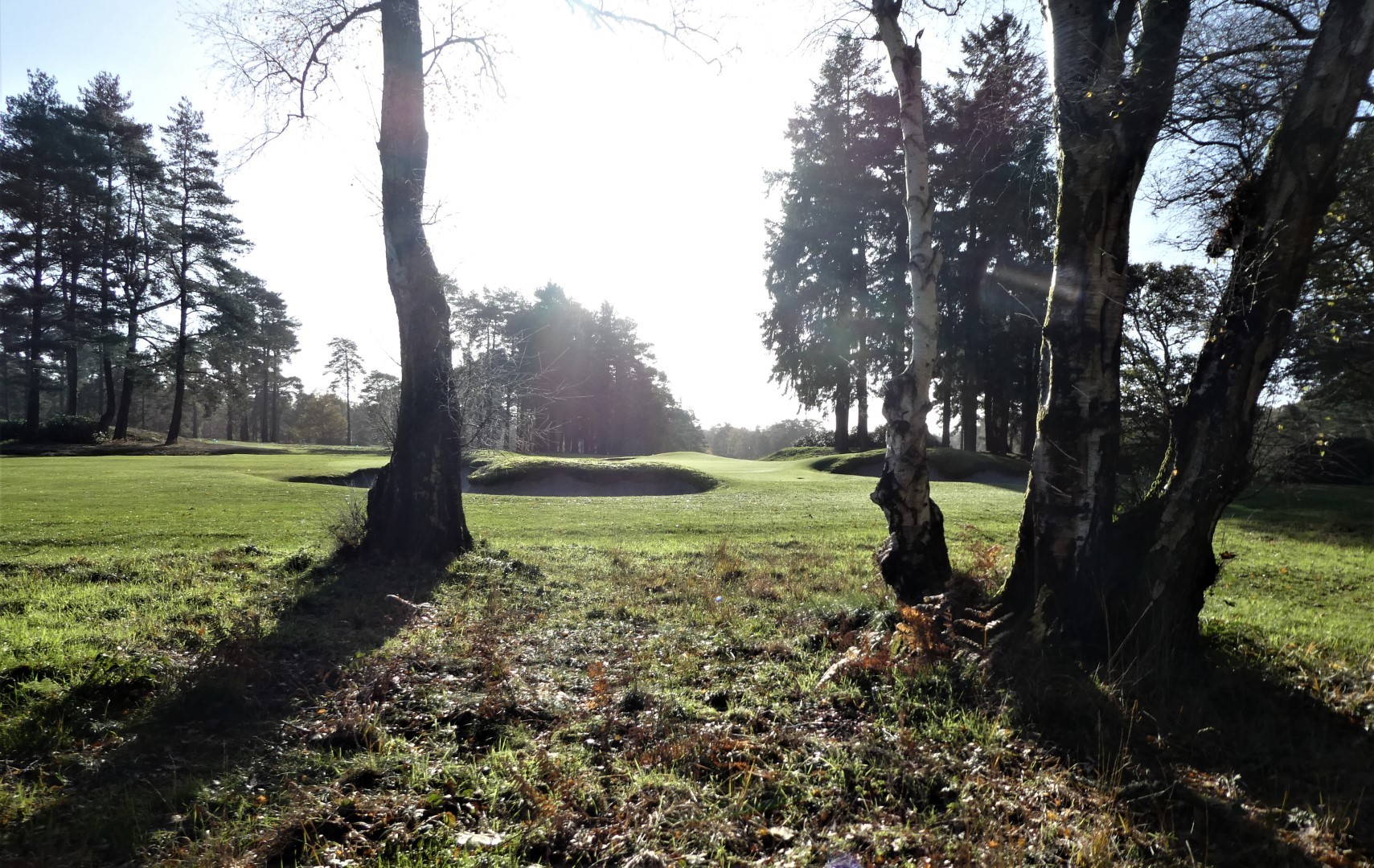
Liphook golf course, site of iron/bronze age tumulus (burial site)
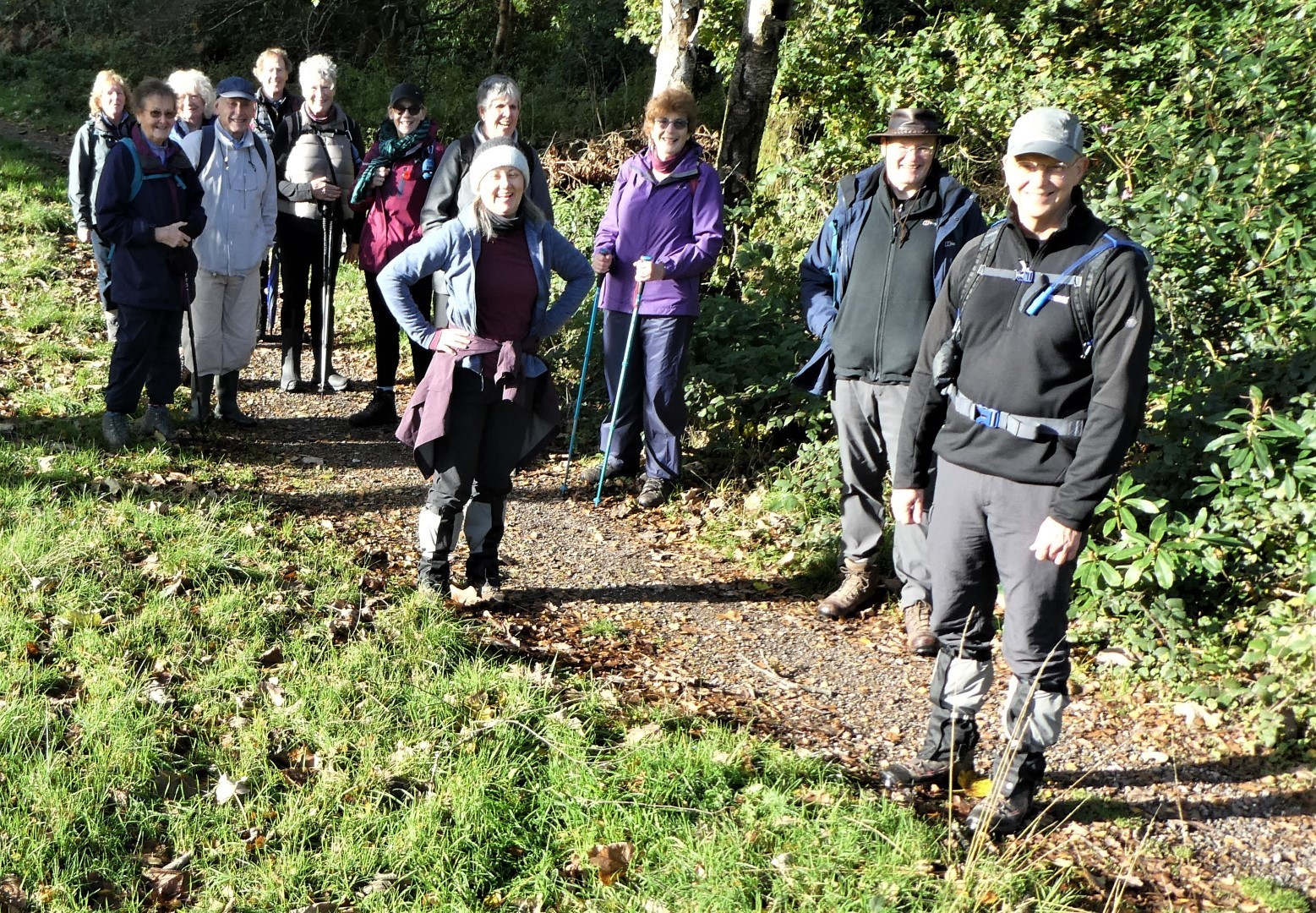
Walkers, no golf clubs in sight
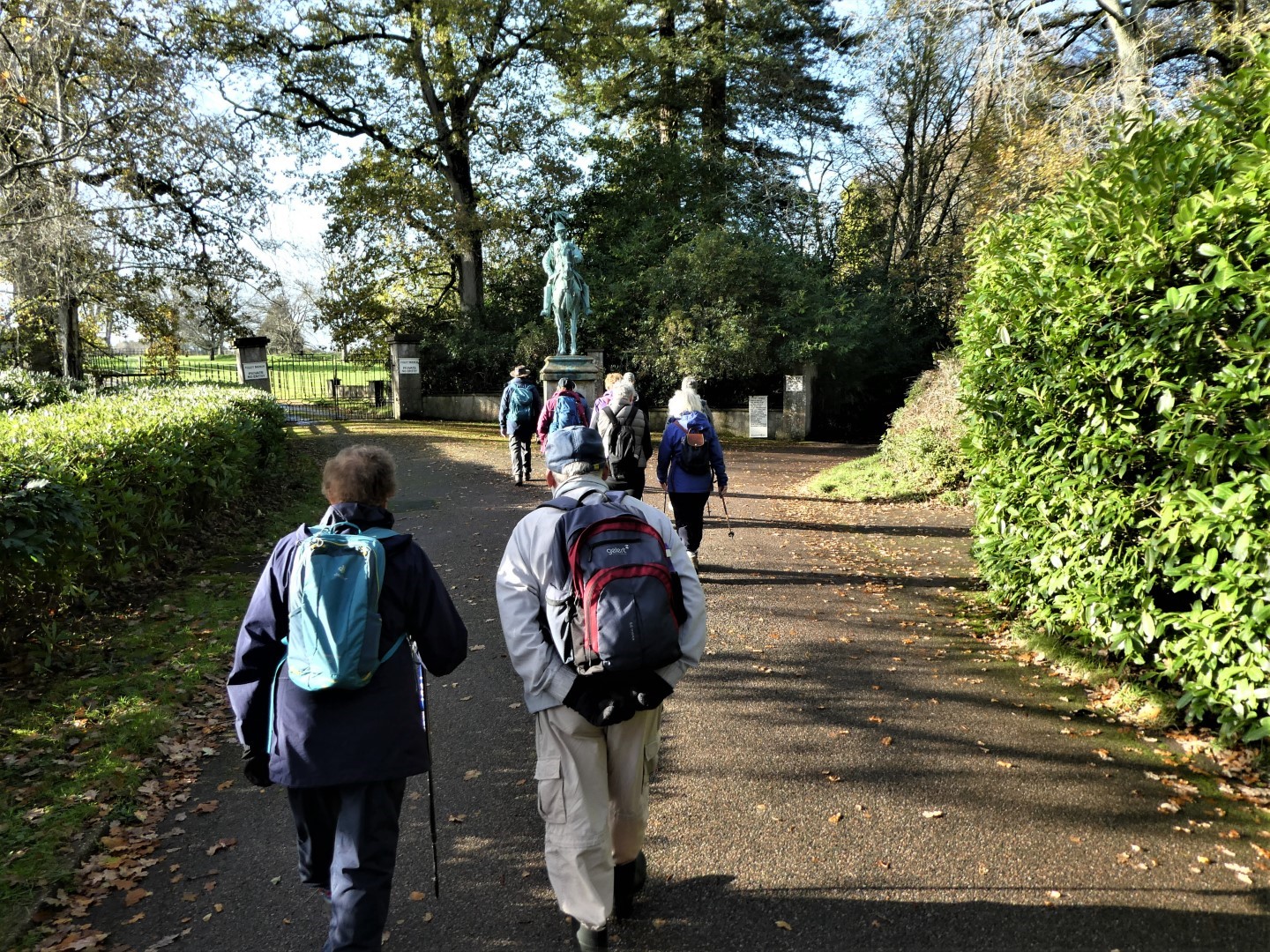
Foley Manor drive.
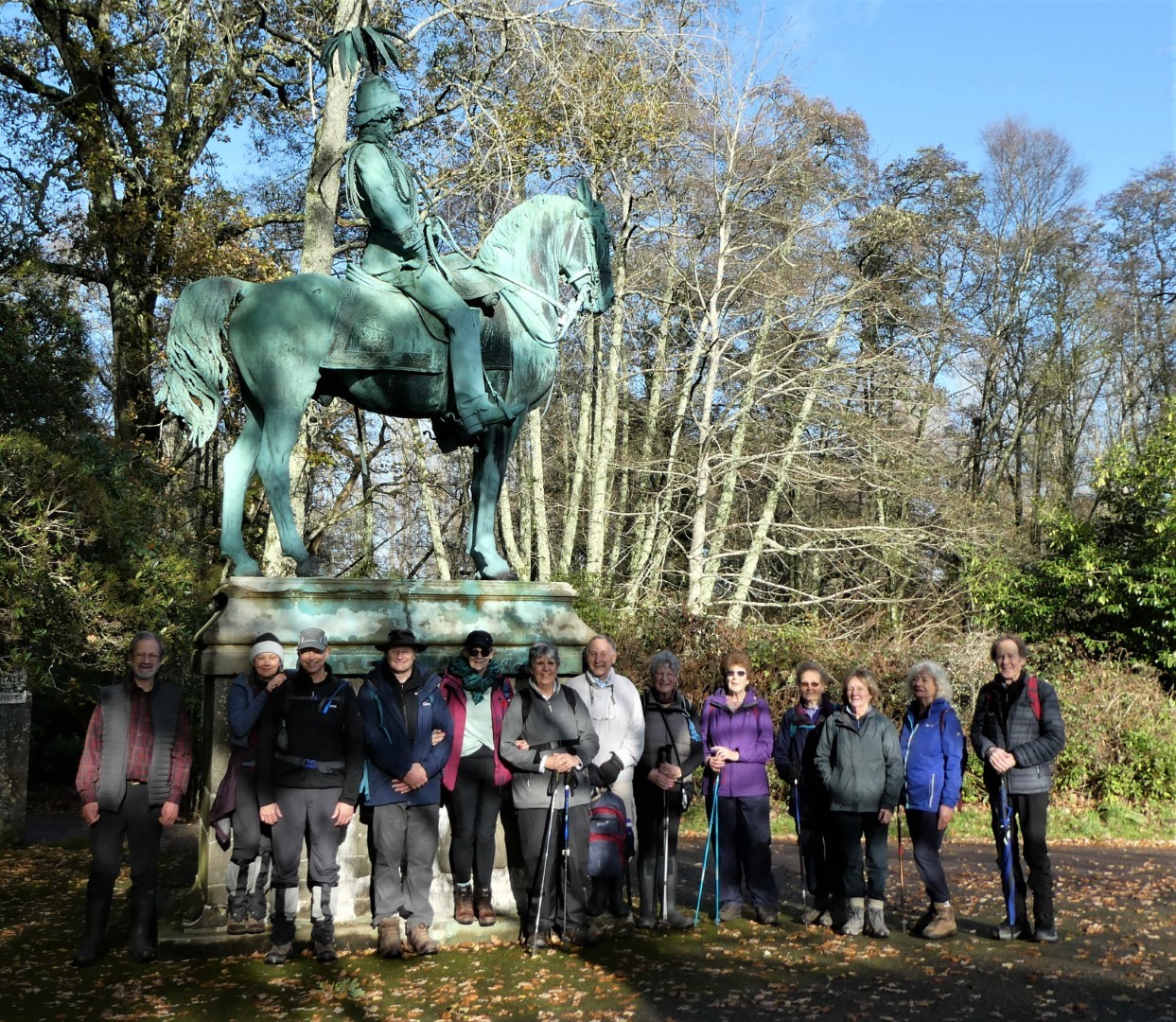
Lord Strathnairn and friends.
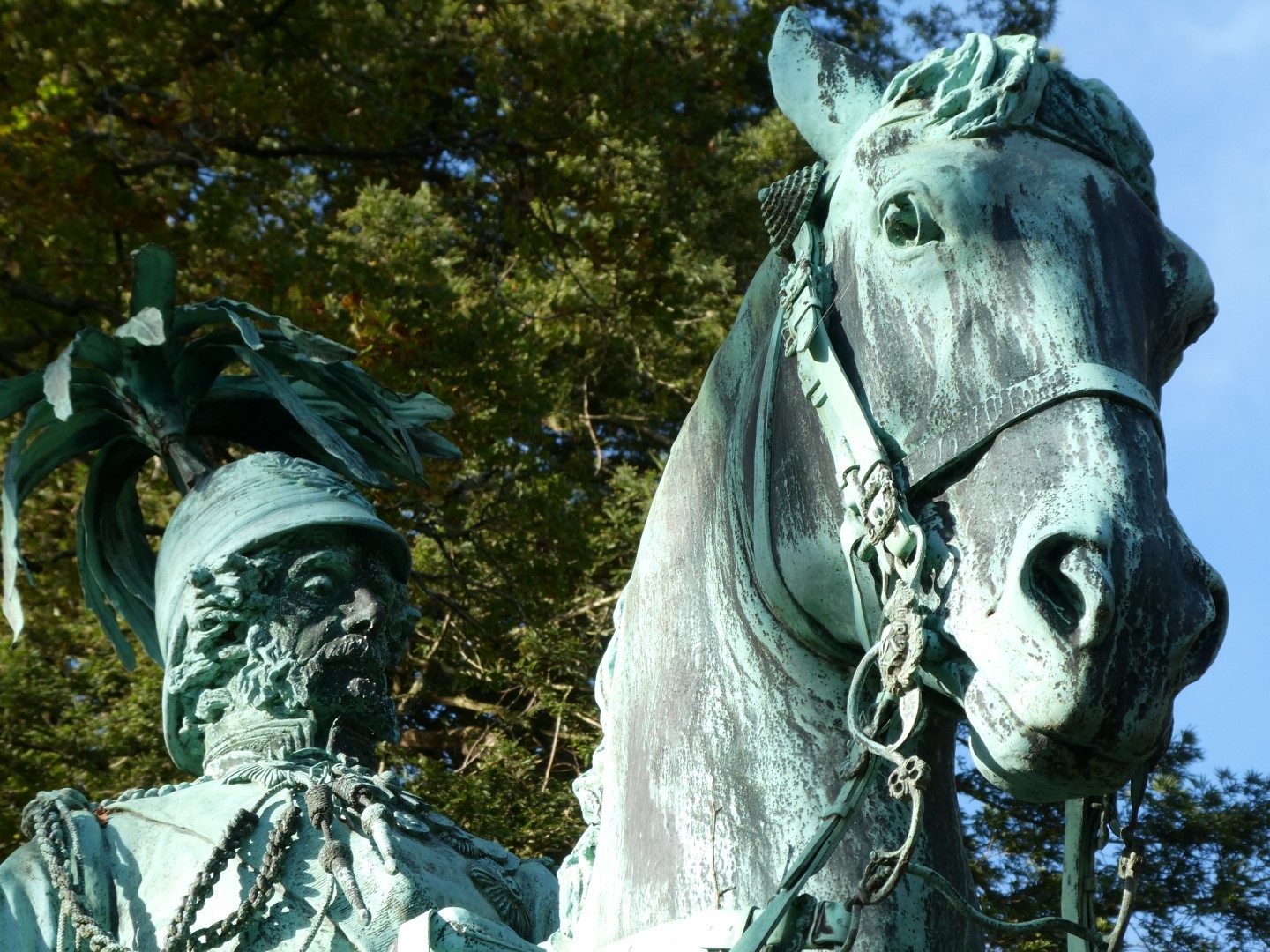
Statue made from captured guns, bronze being stronger than early iron and steel.
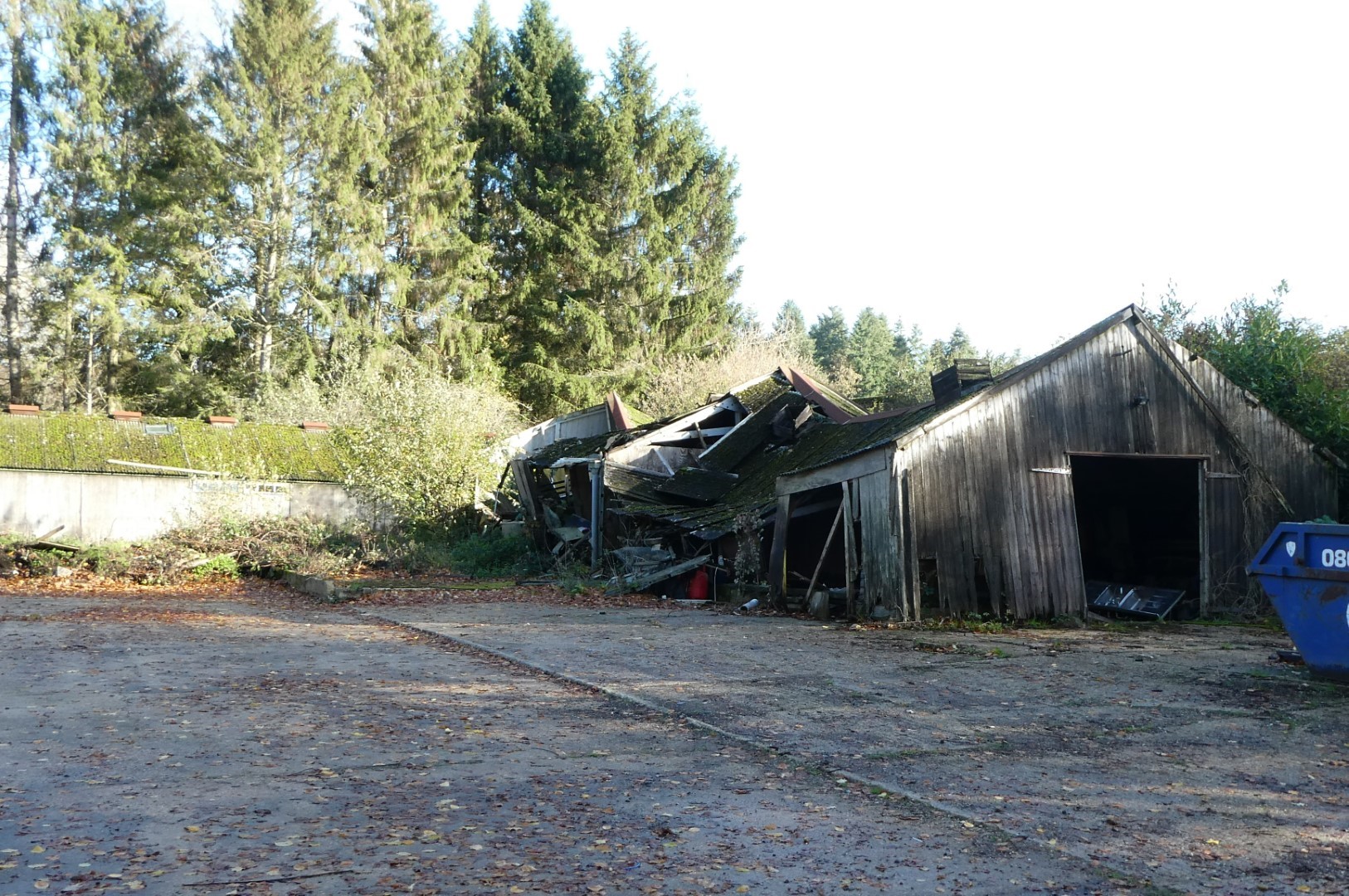
A bit of pollyfilla and paint is all it needs for a complete restoration
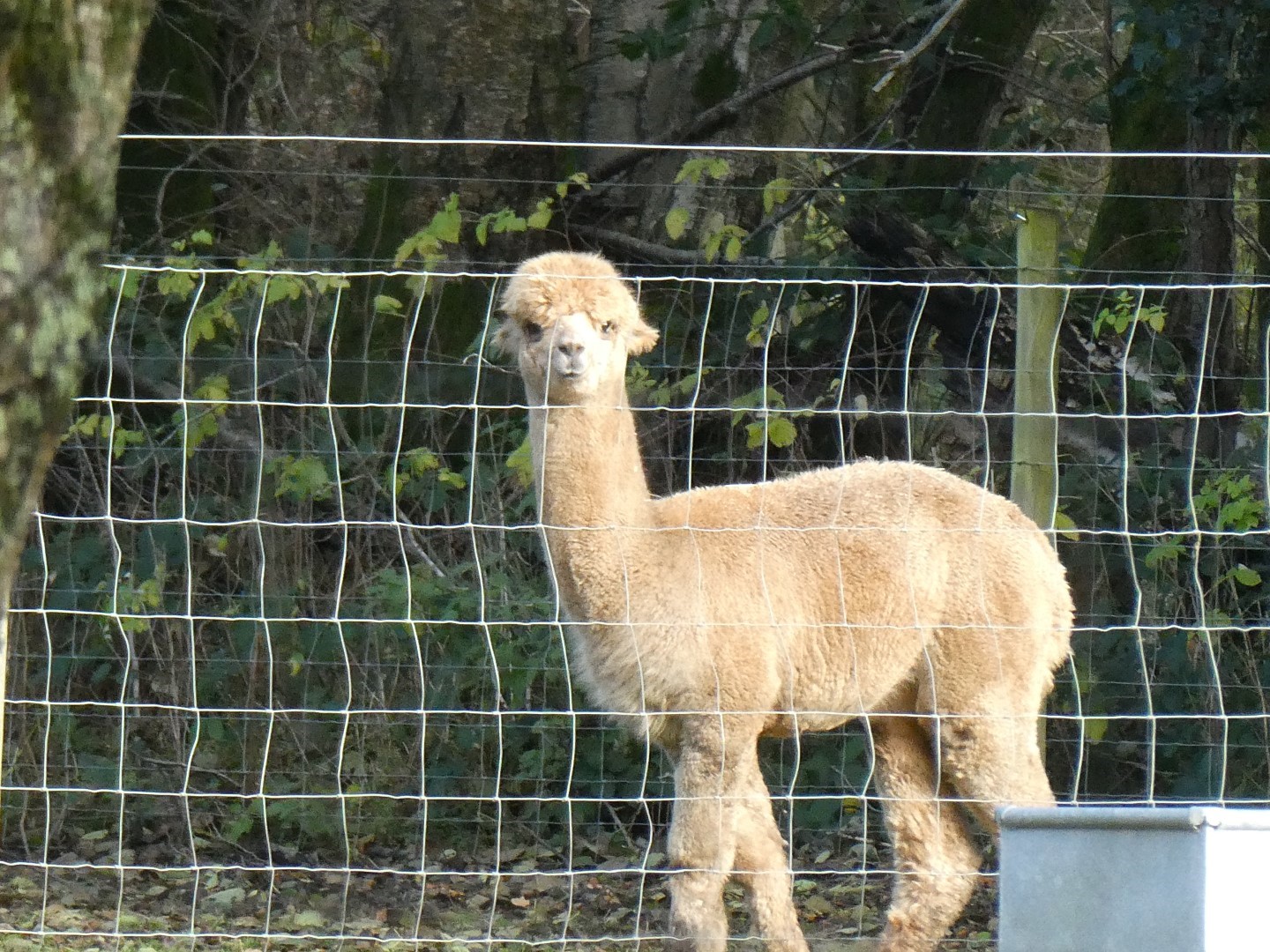
Young alpaca wondering what those people are doing over there
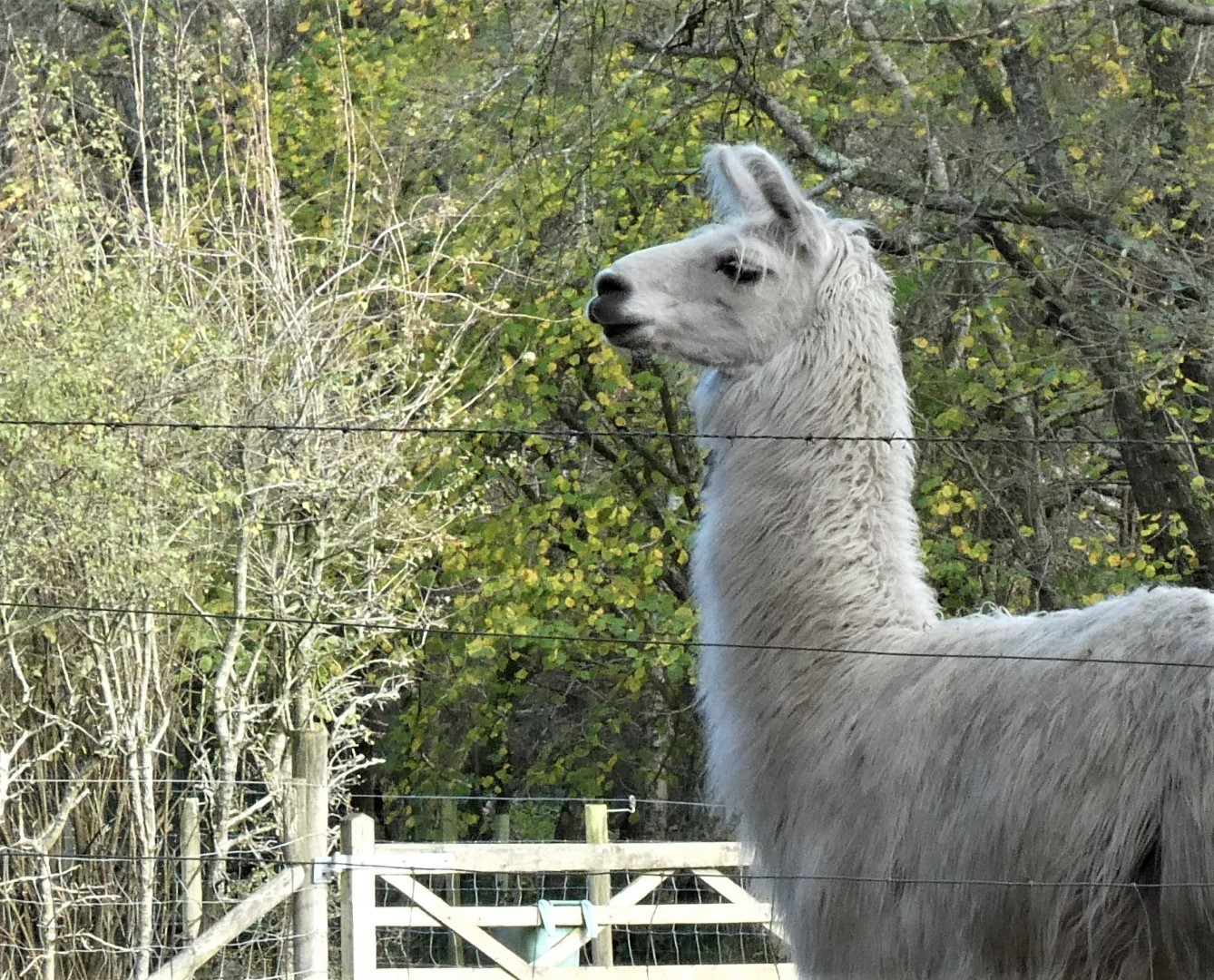 #
#
Adult llama knows they're just walkers
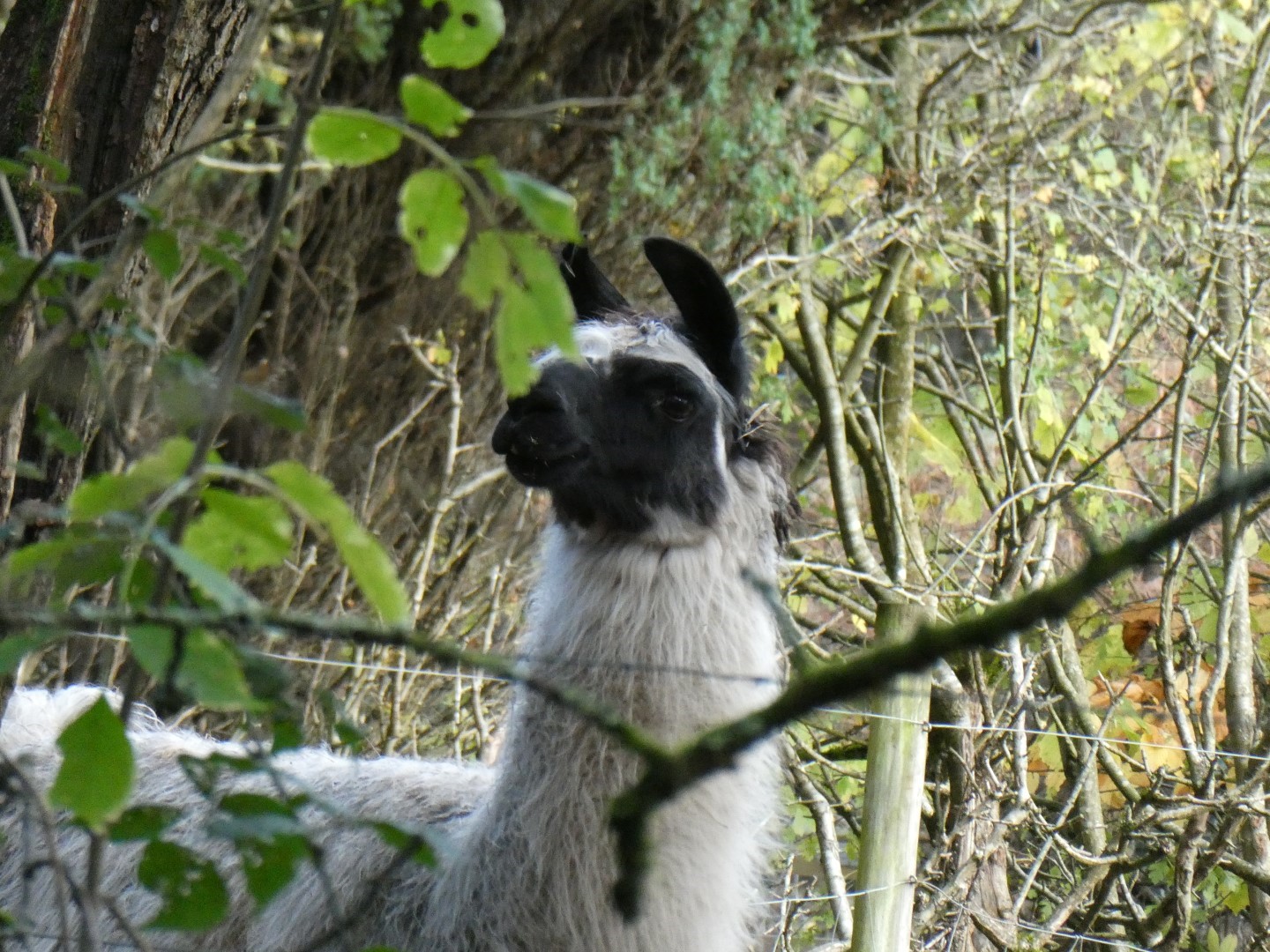
Never trust a llama wearing a mask
.png)
About 4 miles
Byworth Walk on 16th November 2022
The 4.6 mile walk promised a fountain, picturesque woodland and great views of the South Downs and rolling countryside up to Black Down based on the pre-walk. The weather was not promising as we started at The Welldiggers Arms at Low Heath, slid down the mudslide to Hallsgate Farm where we encountered the Tardis that the blue paint had burnt off during re entry before walking up to the picturesque houses of Byworth. The path cut behind The Black Horse Inn where the promised fountain was not working, but a double rainbow lifted our spirits. Descending the hill revealed a new tributary that was absent on the pre-walk to the bridge over the stream. This new tributary competed with the stream for width and depth requiring some acrobatics to access the bridge. From here, the rise through the woodland and open heath to Petworth were uneventful. The Serpentine Trail was picked up near the Grade II listed Sacred Heart Church and the sun greeted us as we walked down the valley and up the other side where we were rewarded with fine views across to Black Down. Ascending again through a copse to Brinkshole Heath where we stopped for a coffee break and a discourse on mushrooms. After crossing Riverhill Lane a right turn took us off the Serpentine Trail down the edge of Flexham Park to Riverhill and onto a path bounded by electric fences to Little Bognor where we were met by enthusiastic horses. The Victorian post box and historic houses were admired before we crossed a field with great views of the South Downs. Our final leg was through Egdean Common and Low Heath back to The Welldiggers Arms where we were treated to a well-earned lunch.

Ready for the start, hoping the rain holds off

Tardis made a poor landing
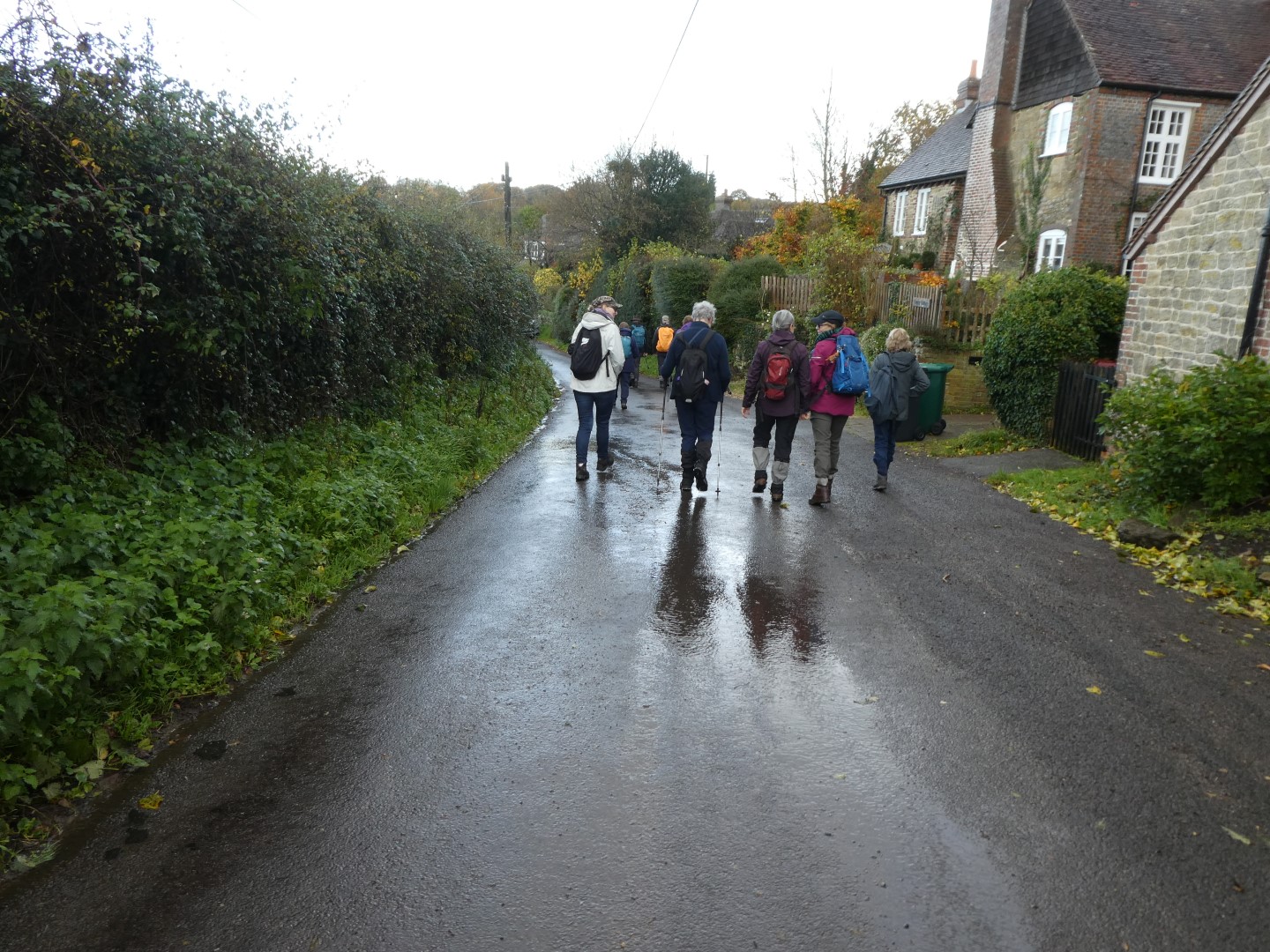
Walking in to Byworth
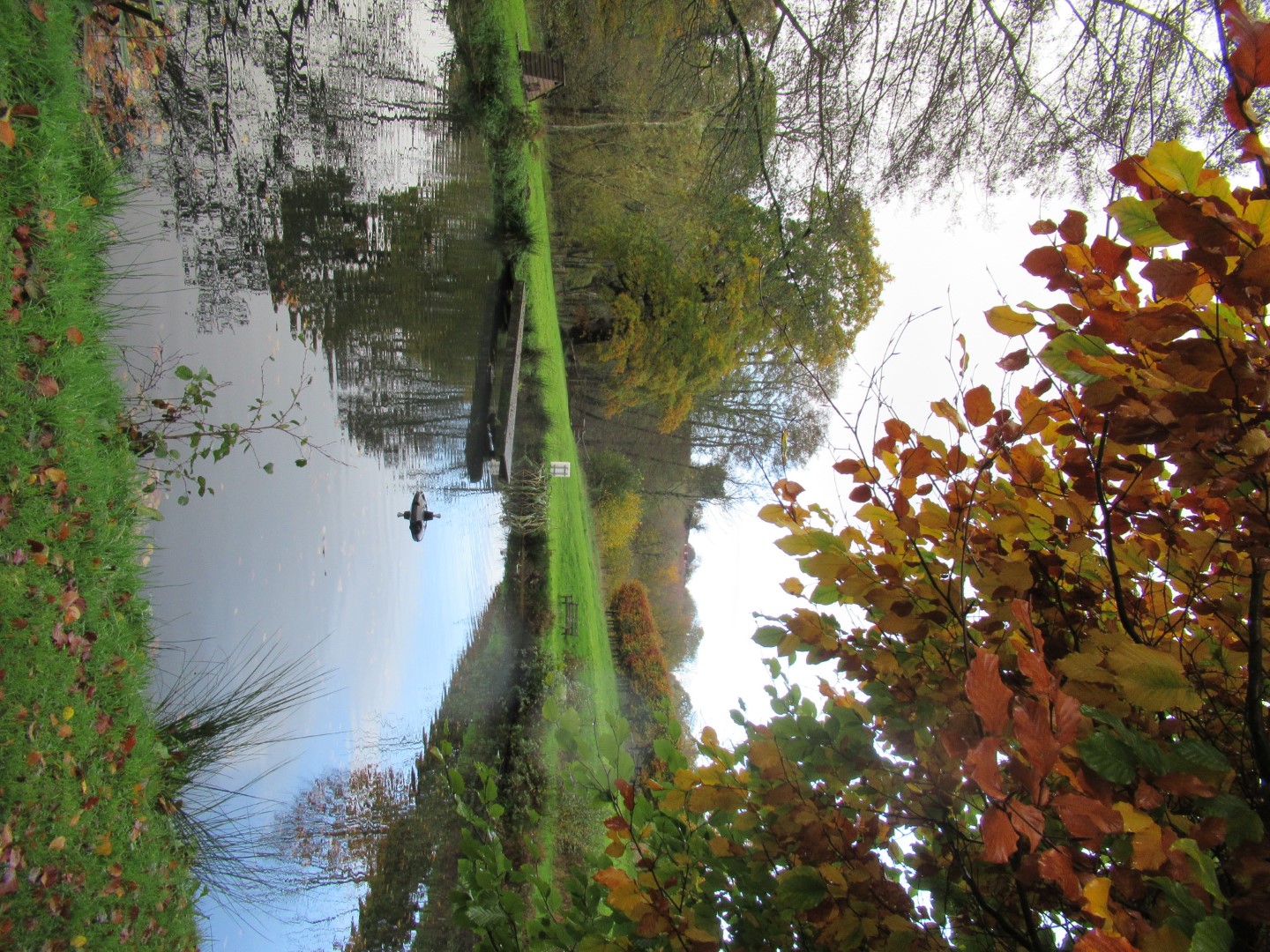
The fountain of youth spluttered out
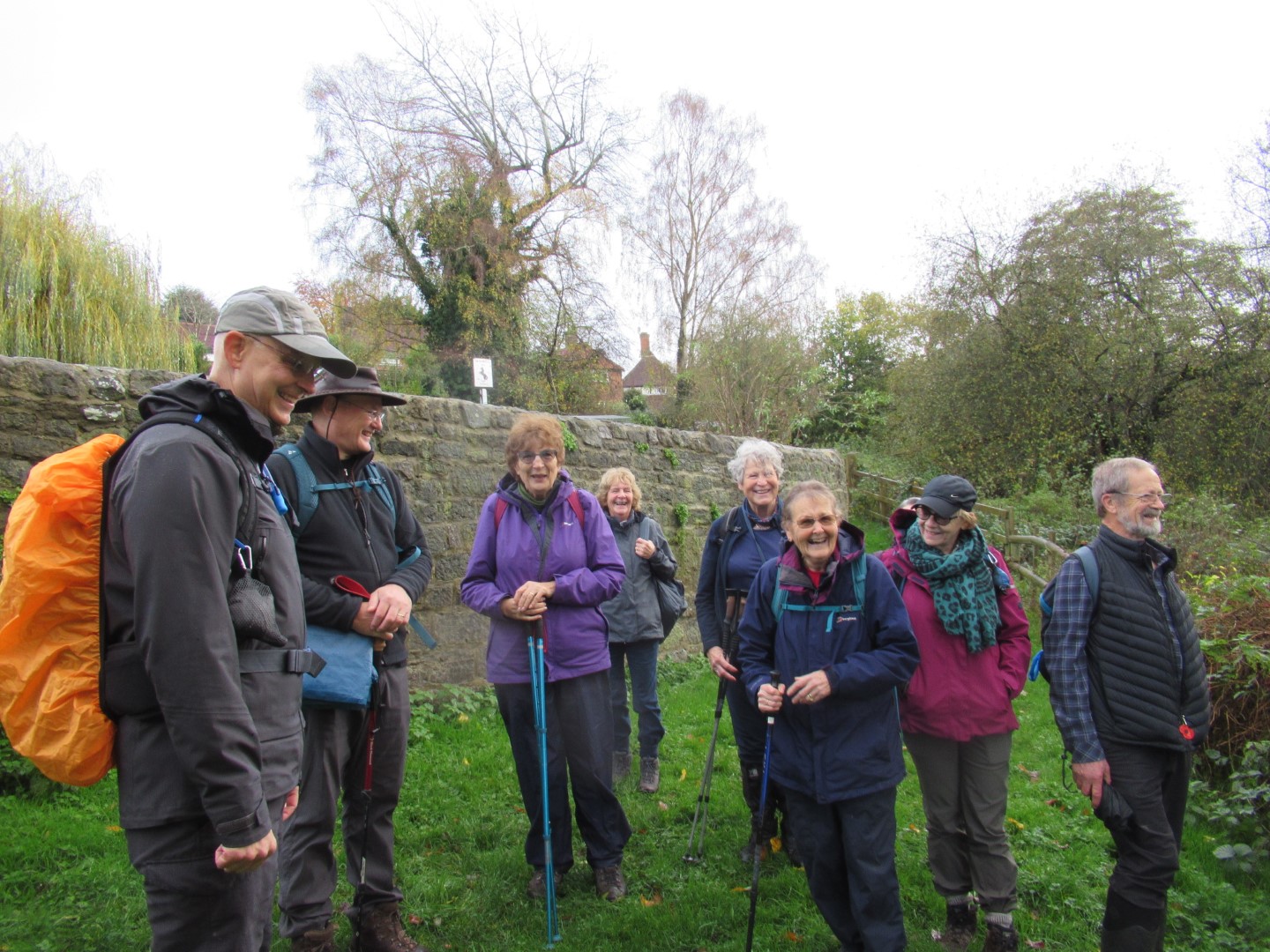
So we’ll have to wait until next time
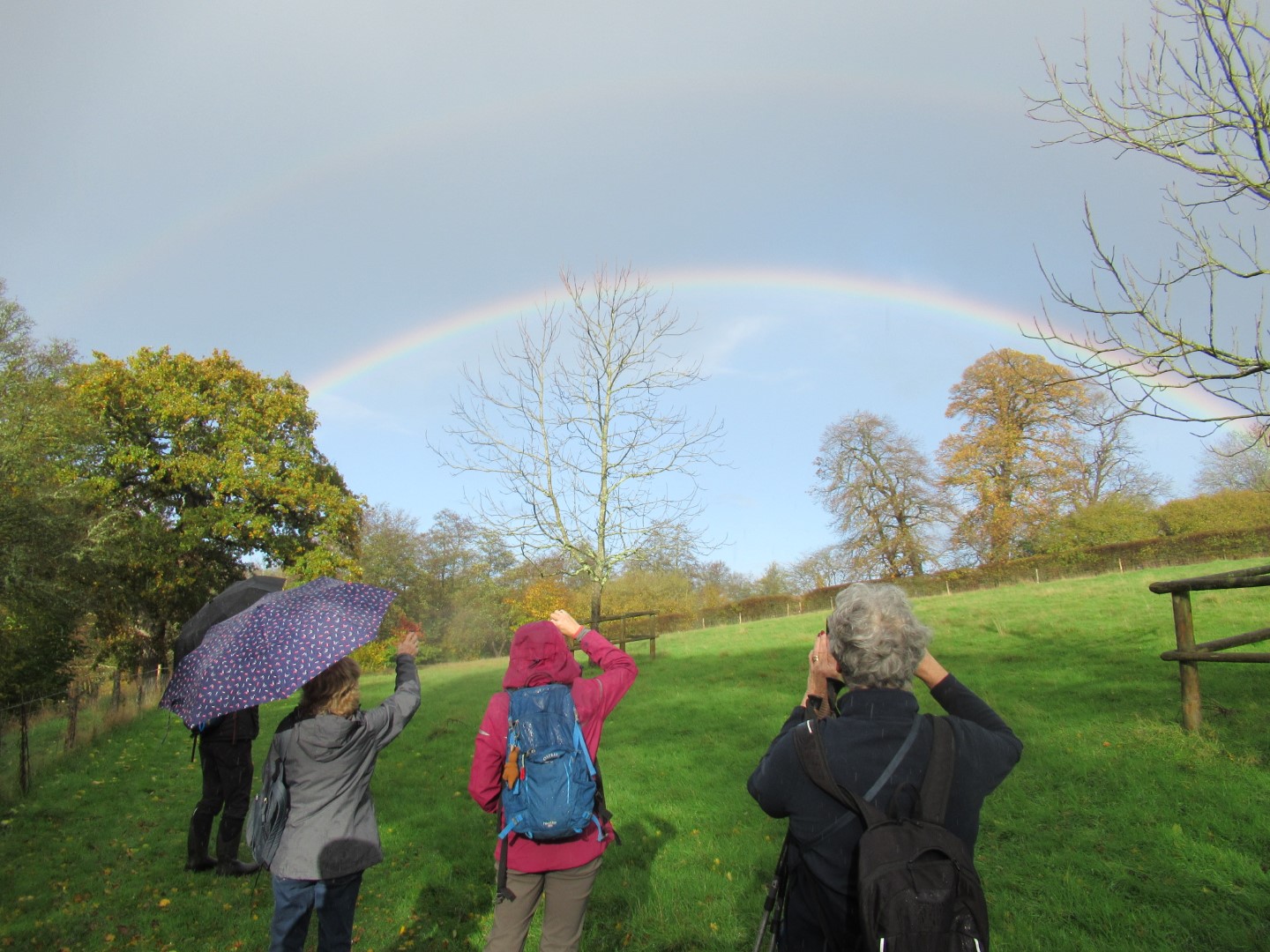
But the double rainbow made up for it

Here comes the rain and a new tributary, time to break out the Ark.
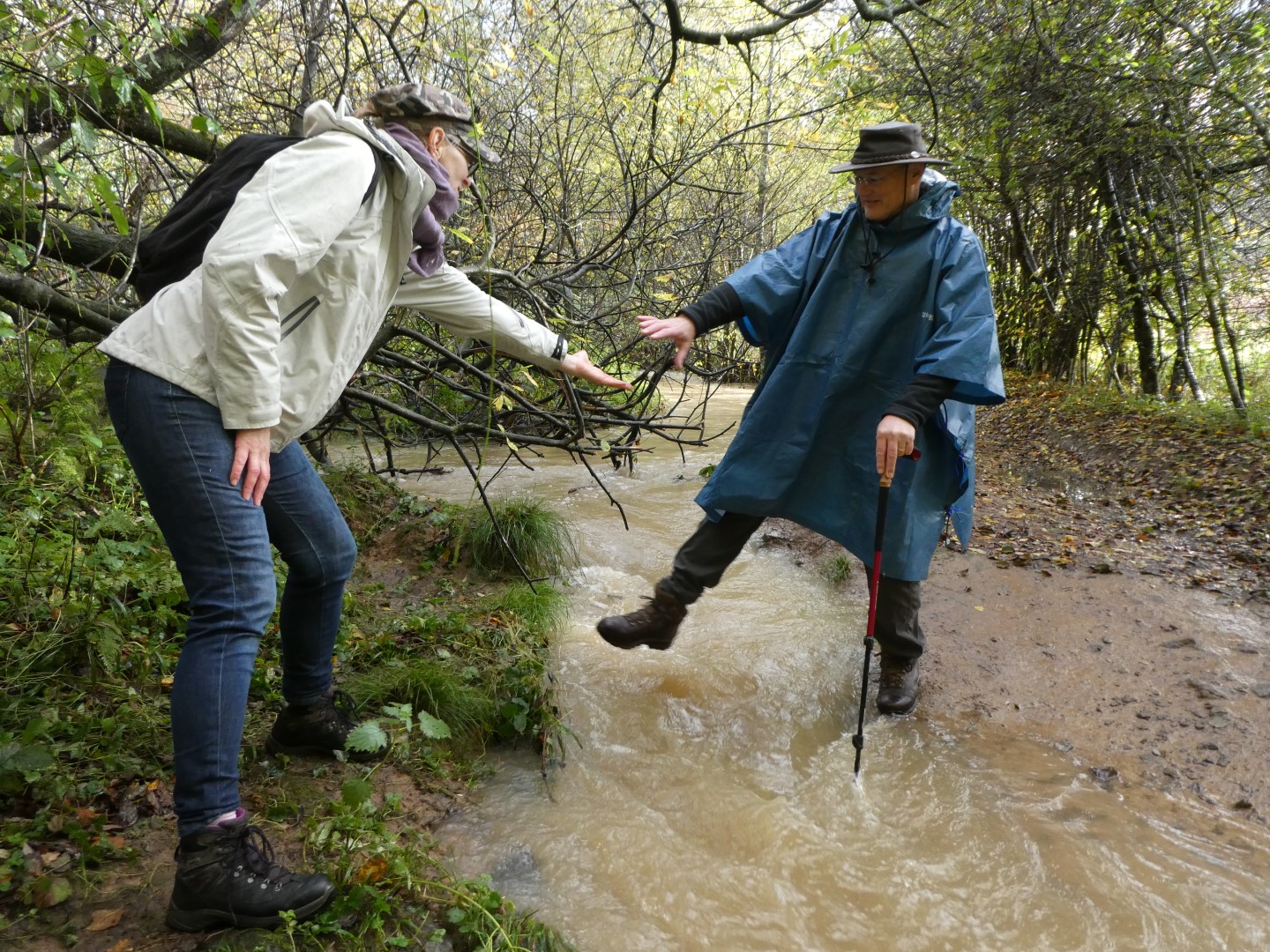
Argh.... I think I'll make it?!

That’s more like it
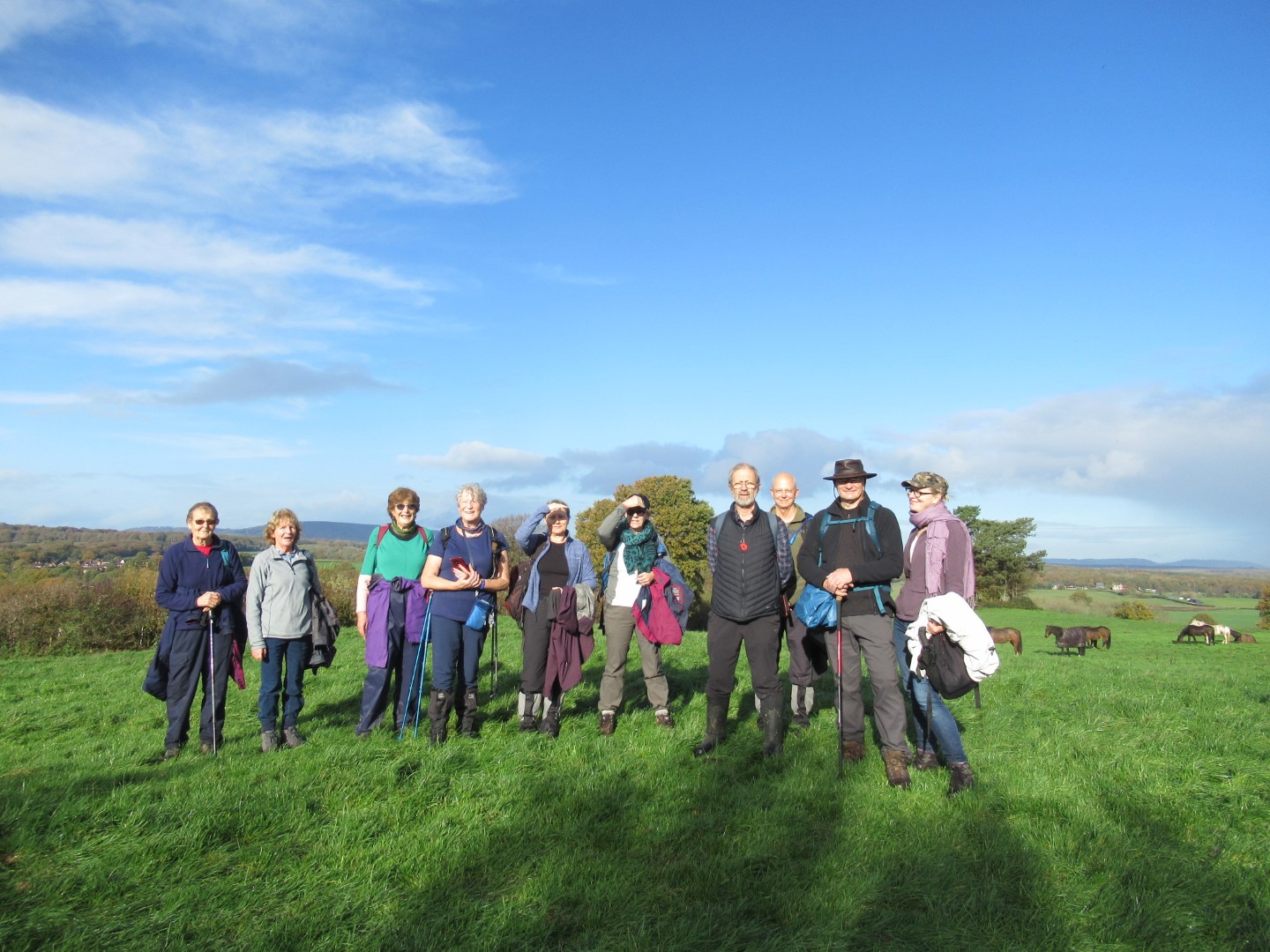
Enjoy the view or pose for a photo?
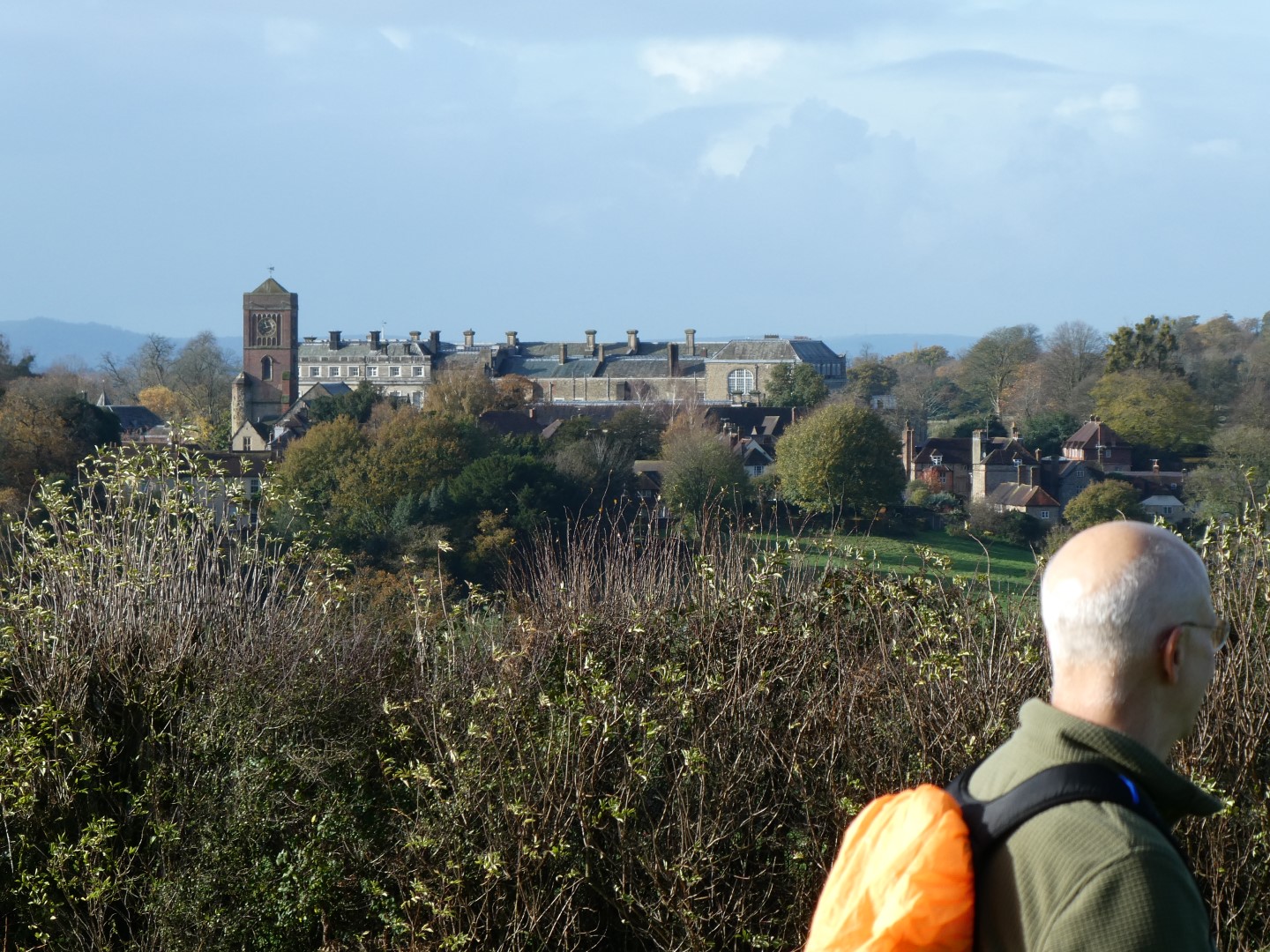
Petworth House about 3/4 of a mile away
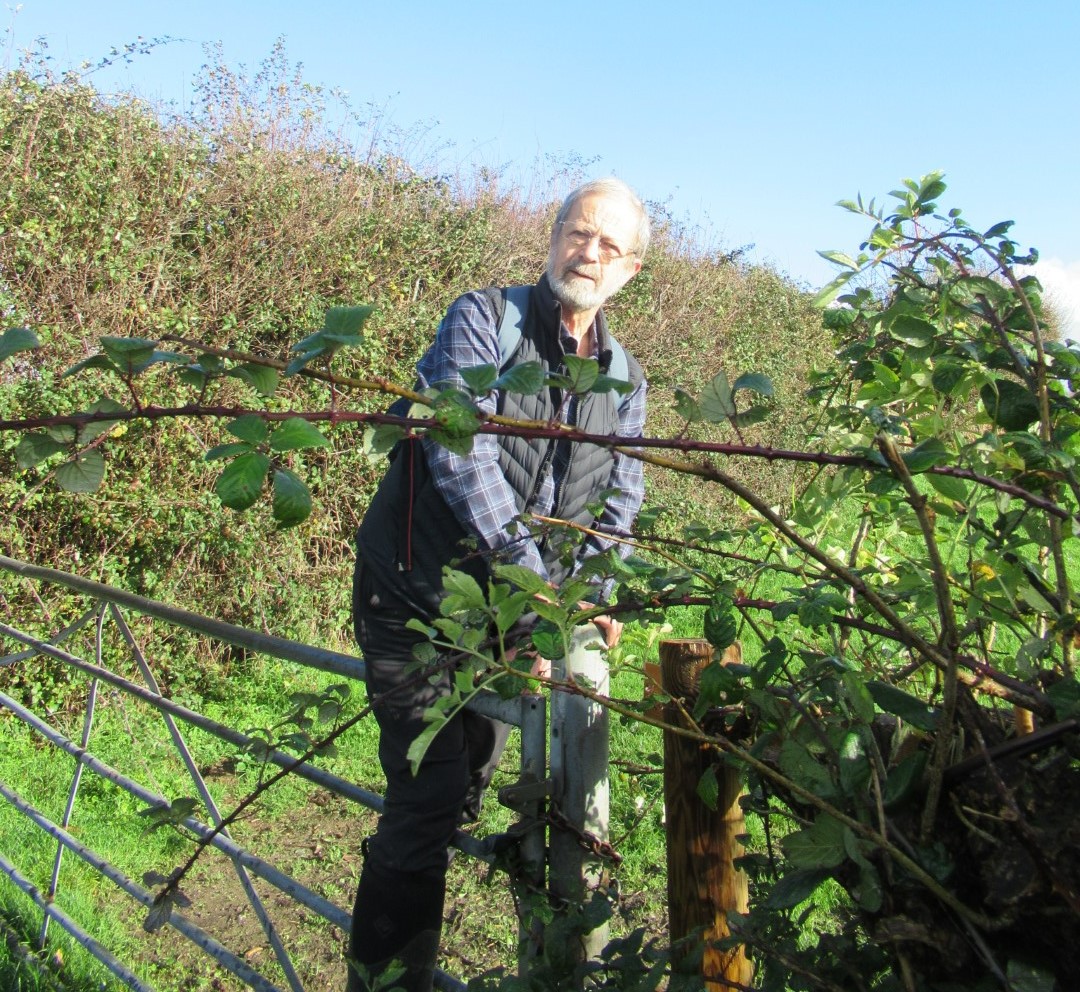
Glad the brambles stopped before the gate
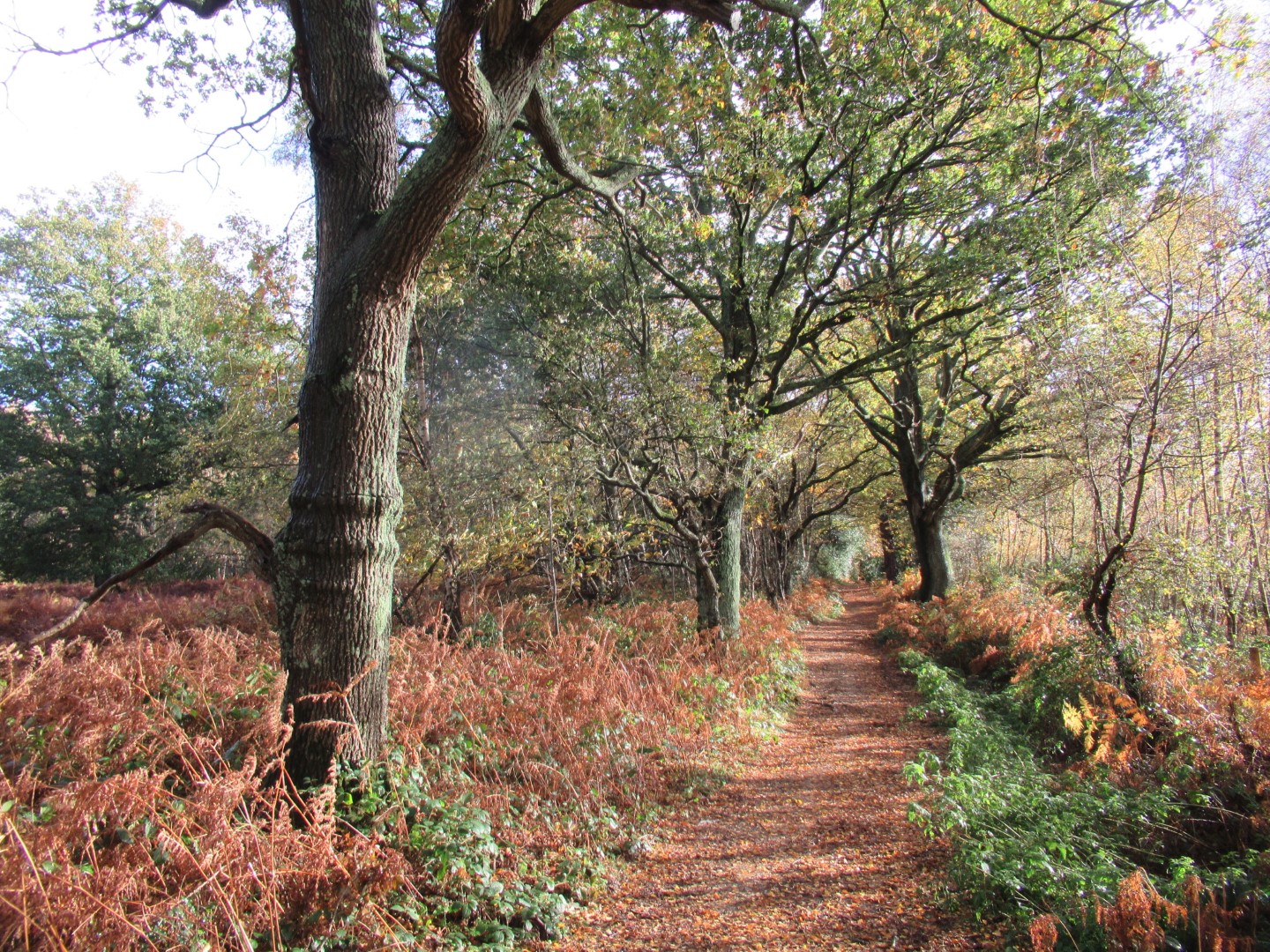
Brinkshole Heath
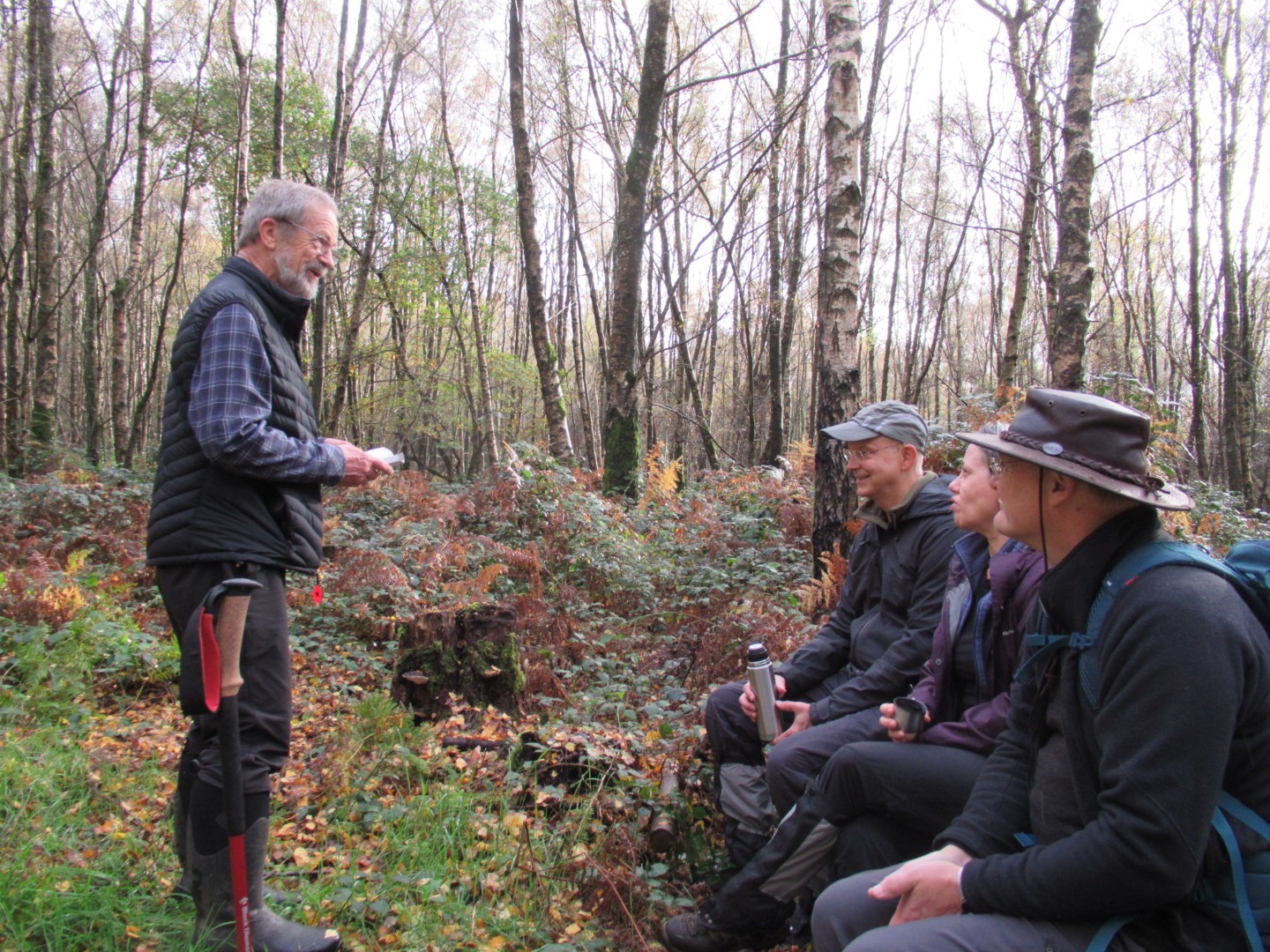
Are you sitting comfortably? Then I’ll begin…..Once upon a time, there was a mushroom….

I like cameras and phones, they're really tasty.

Little Bognor
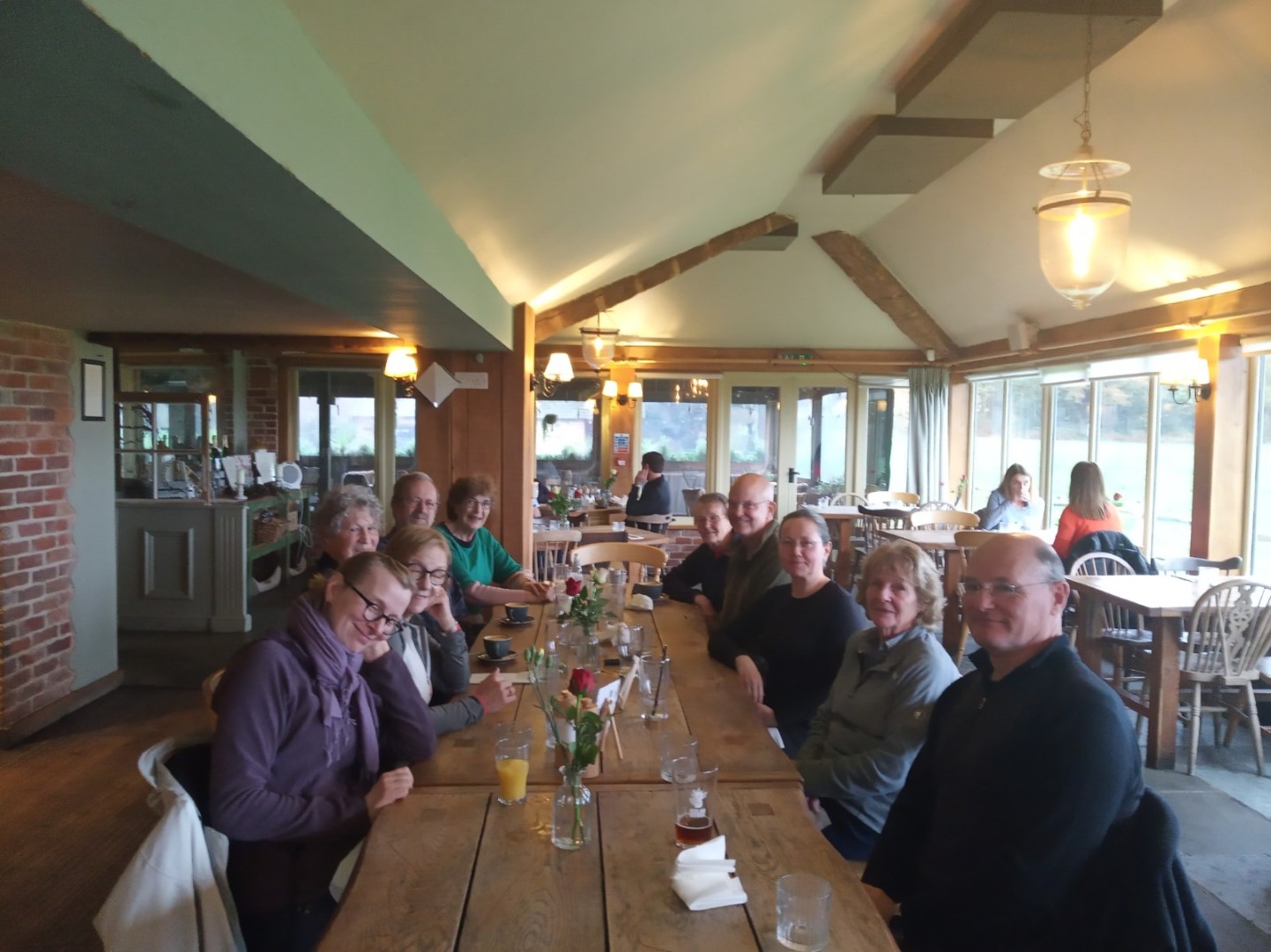
Dining in the Welldiggers Arms.
.png)
About 5.1/2 miles
Walderton walk on 9th November 2022
Denis started his walk from the car park of The Barley Mow in Walderton village. The roads to reach the walk had been flooded in many areas from overnight rain but the weather was now clear and bright. After a bit of road walking to avoid some muddy spots, we headed towards Manor Farm and then eventually turned onto the Monarch's Way towards Inholmes Wood. Once in the wood we turned down towards Piglegged Row before climbing up again, hoping for a break on a nicely placed bench. However we had been beaten to it so we carried on to another rest spot, which turned out to be much better! This was above the Watergate Estate. With a view over towards Hayling Harbour and the sea, we could just about see the Isle of Wight. A large object seemed to be in the sea and the general conclusion was that it was probably a container ship (later sleuthing showed it was probably "Ever Lucky" a container ship capable of carrying over 100,000 tons, on its way to Amsterdam from Southampton). Once refreshed we passed behind Watergate House and on into Watergate Hanger before turning into Watergate Park for a final stroll into the village and a welcoming Barley Mow. The walk was about 4.1/2miles.
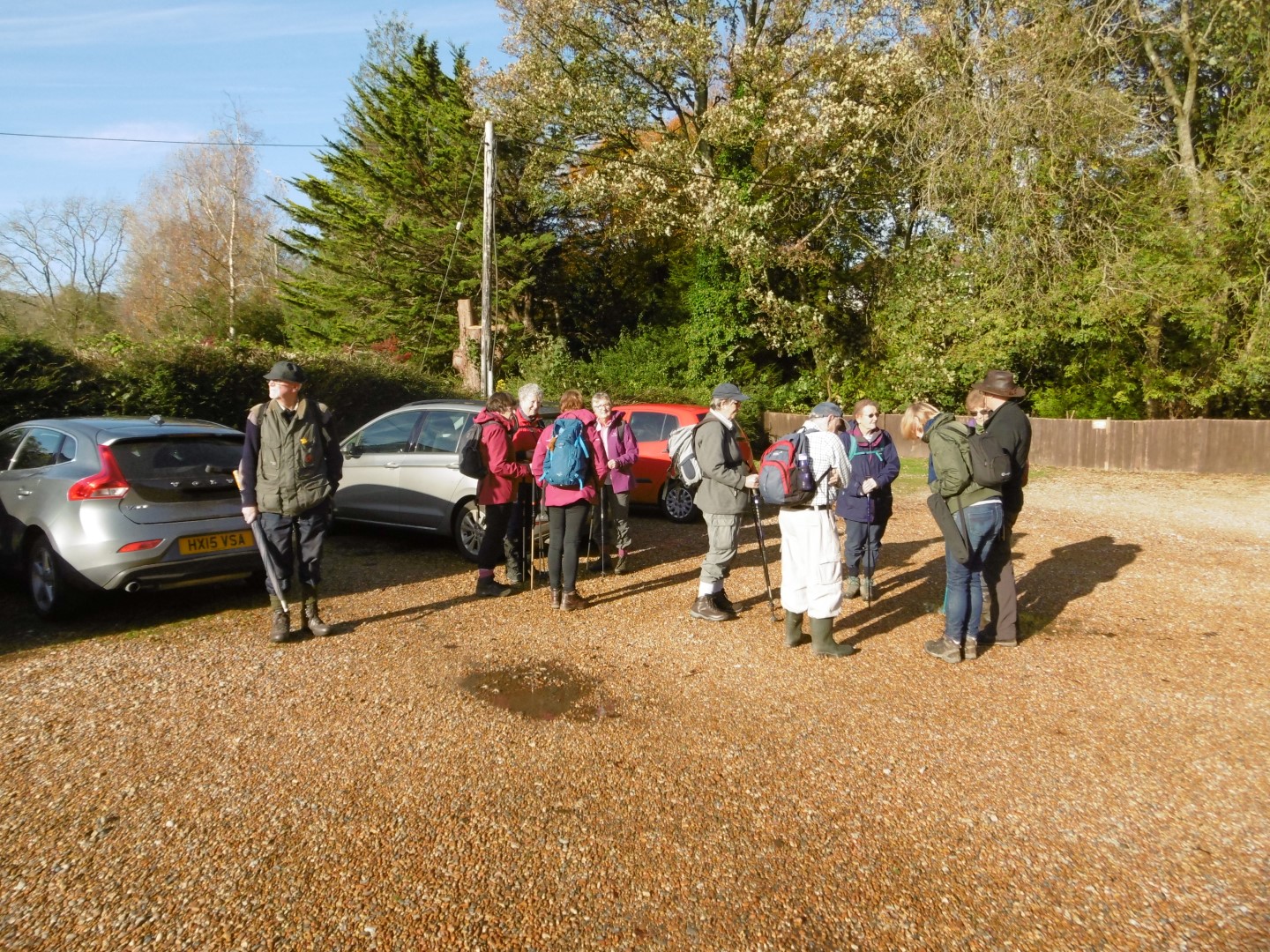
Car park assembly

Heading up Monarchs way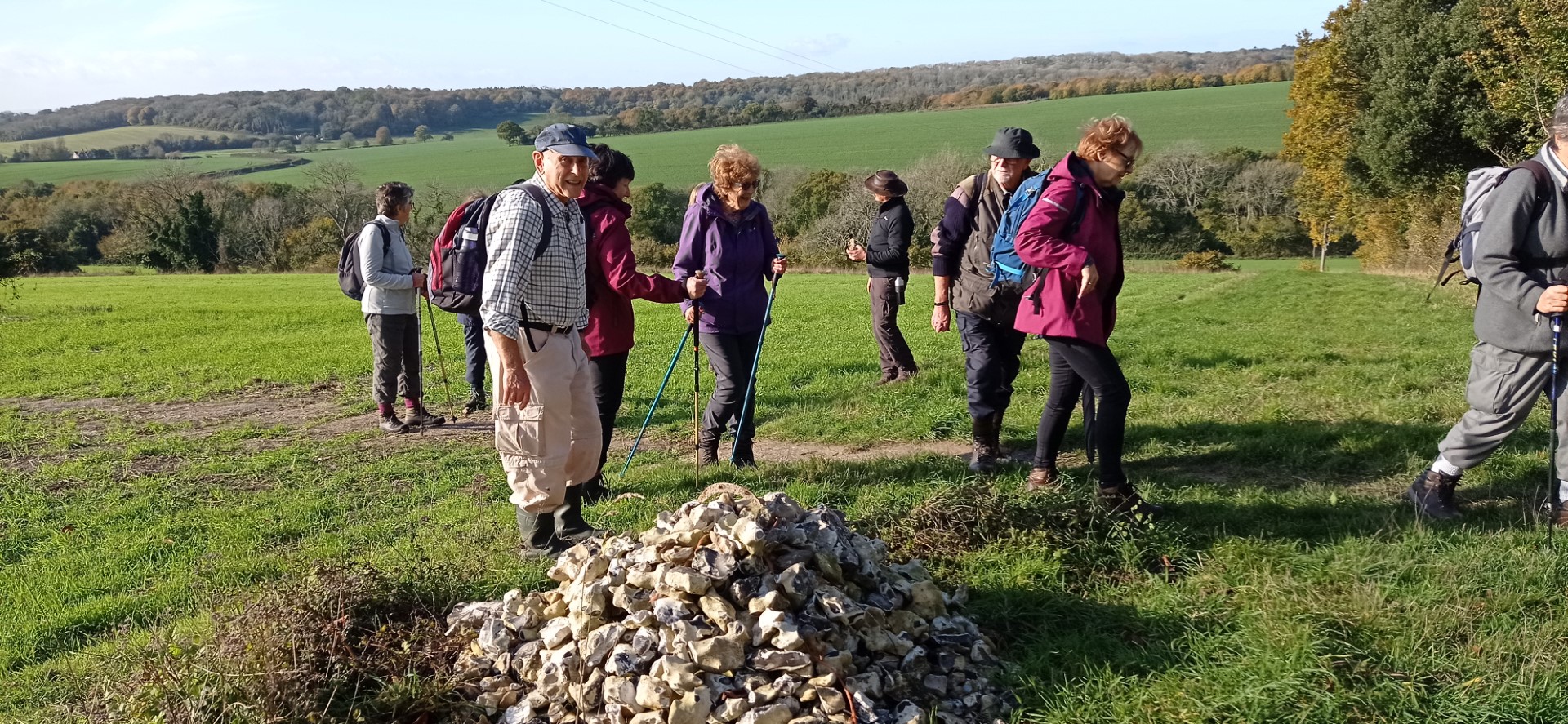
Stone cairn with half a horseshoe on top - there must be some luck in there?
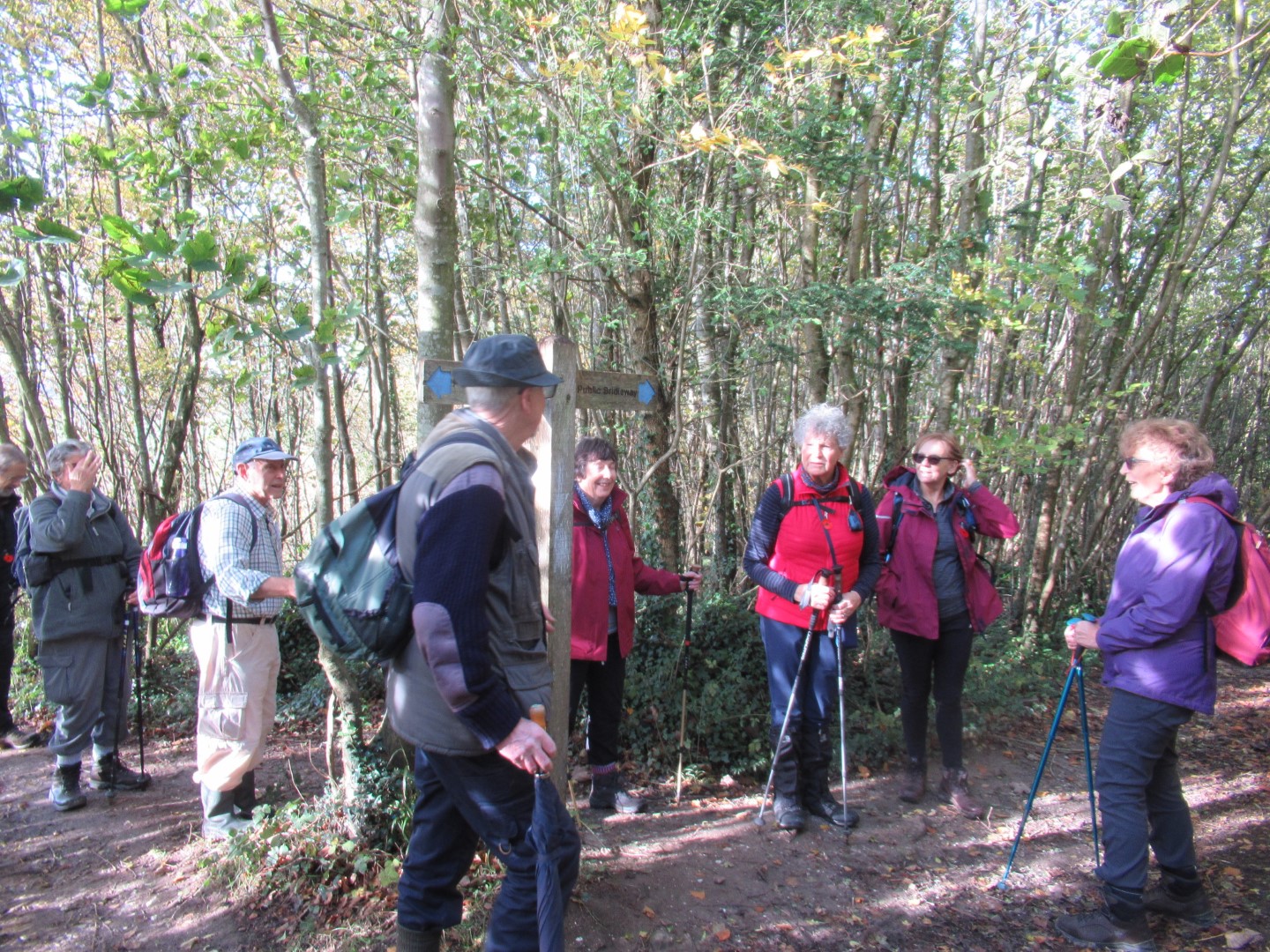
Inholmes Wood
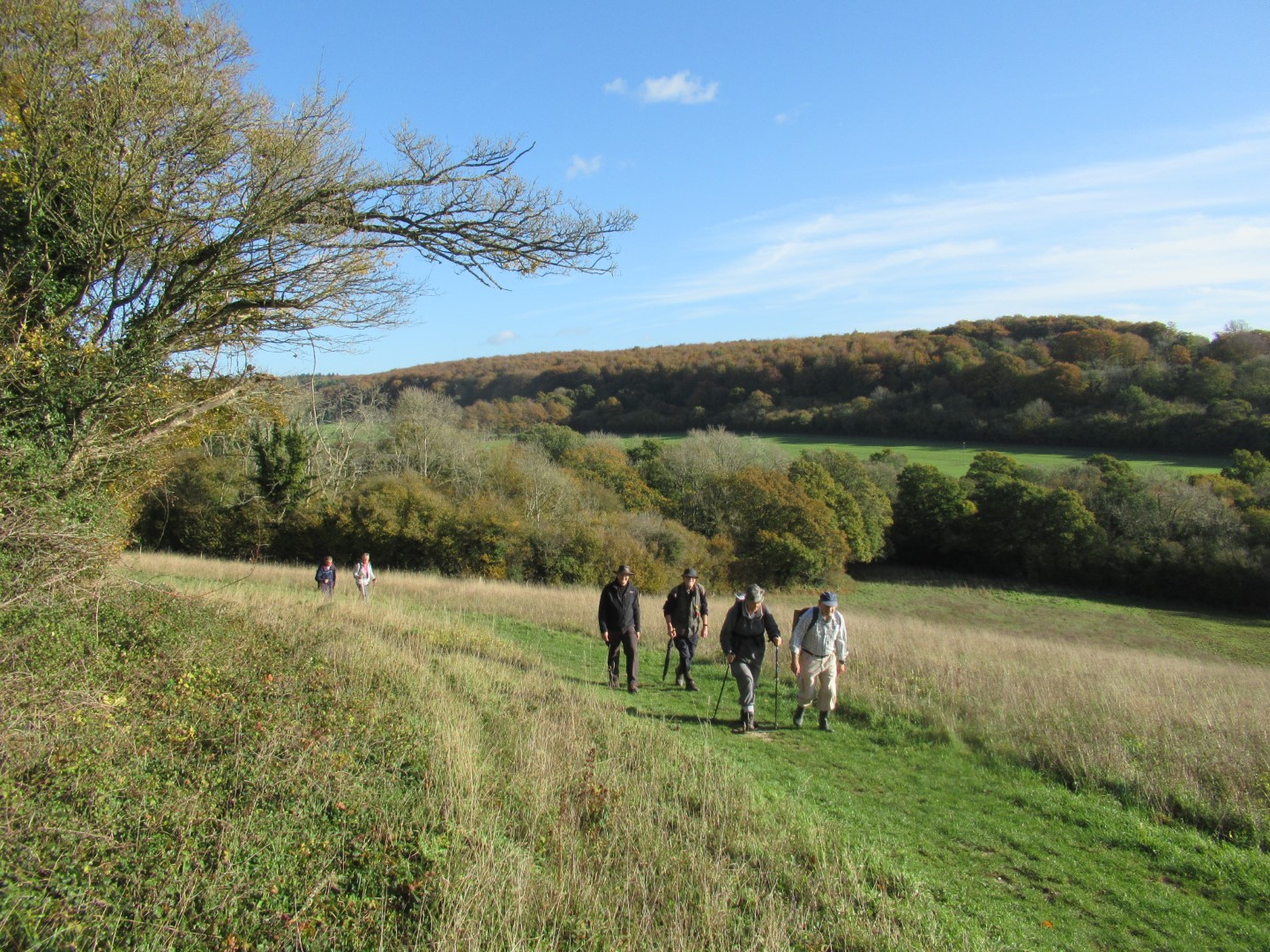
Just above Piglegged Row

Coffee stop at last - and bonus sweeties!
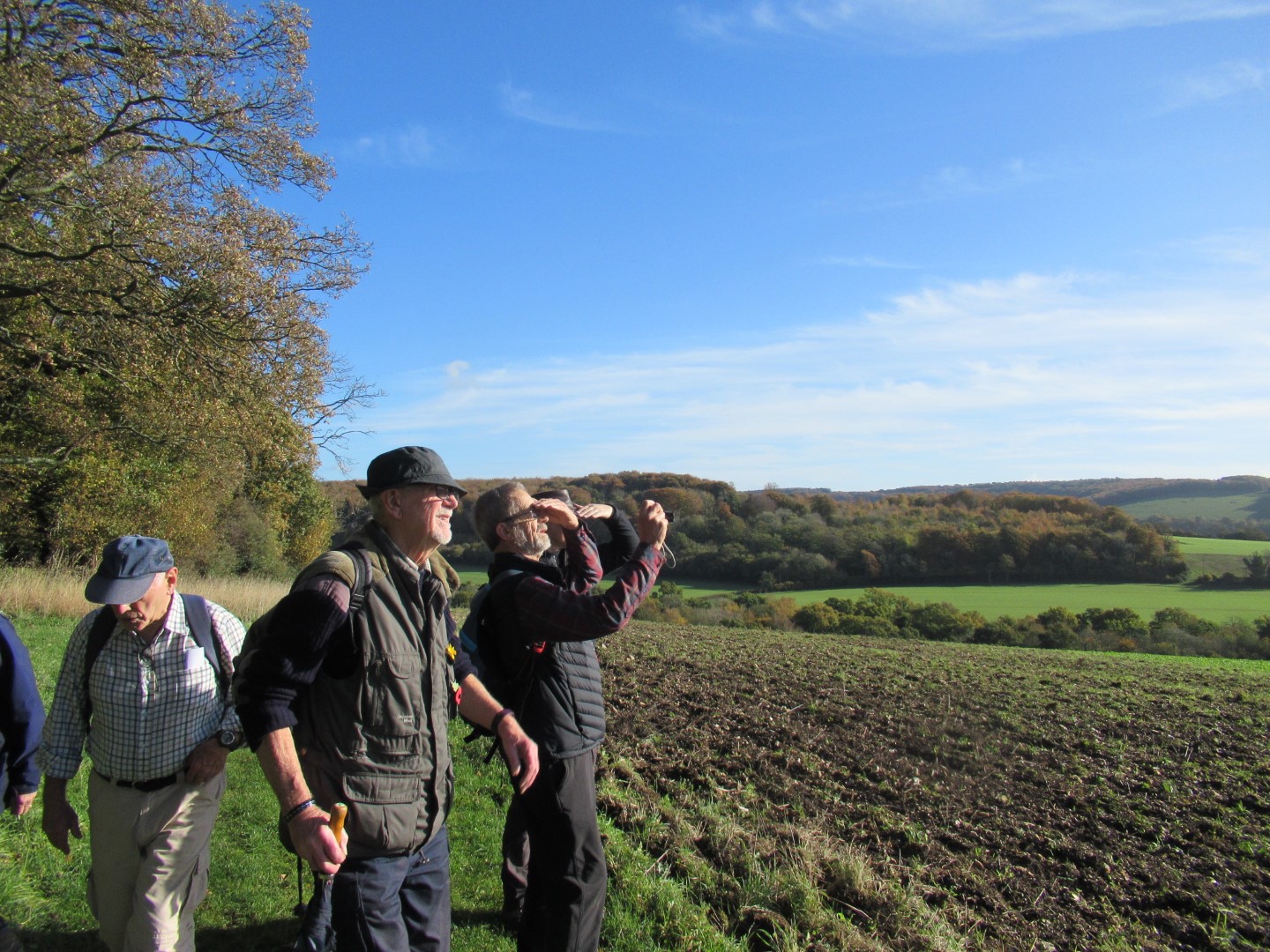
"So, what is that dark blob out on the sea?"
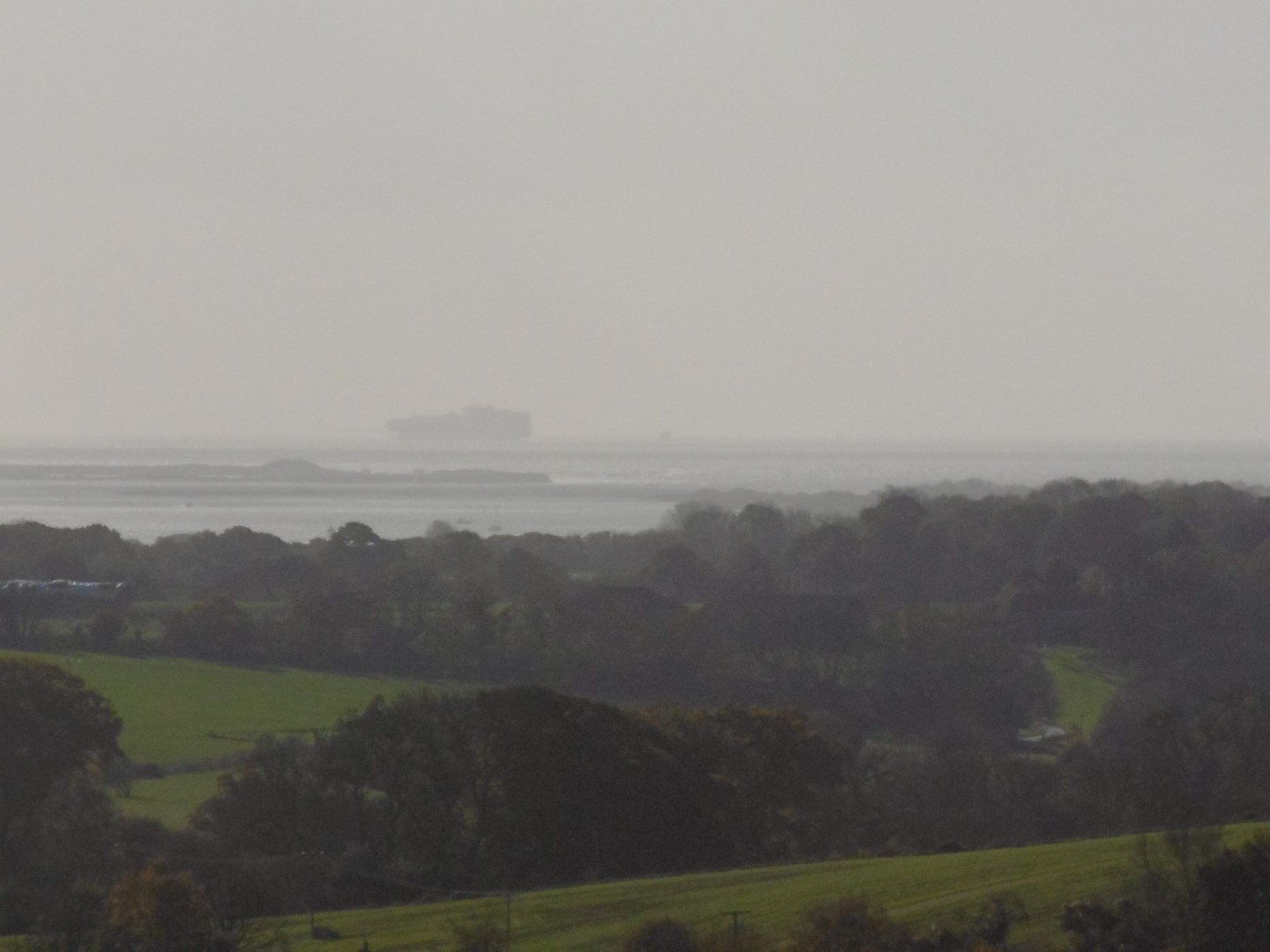
Probably a container ship on its way to Amsterdam

Drive at the back of Watergate House
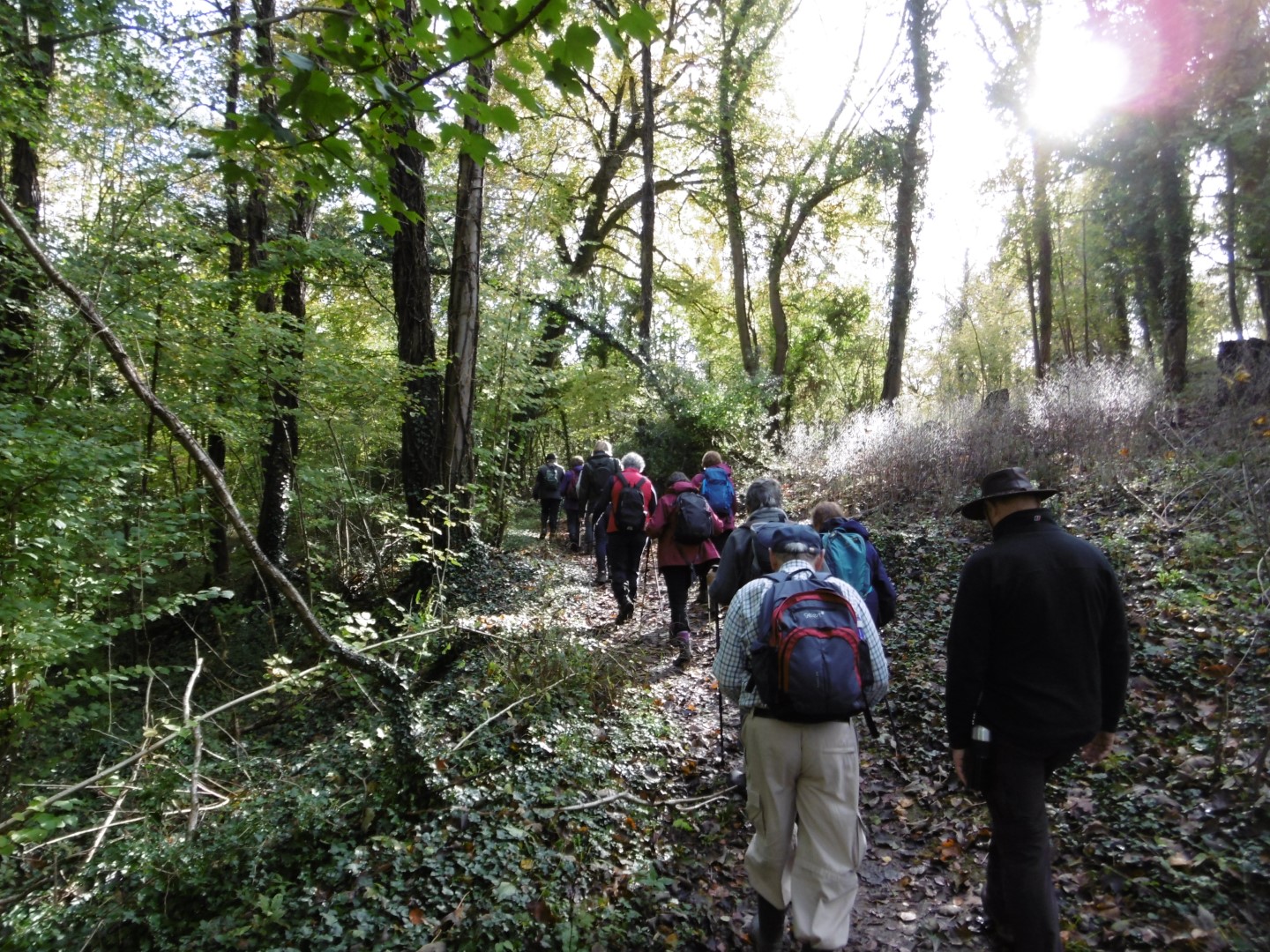
Watergate Hanger
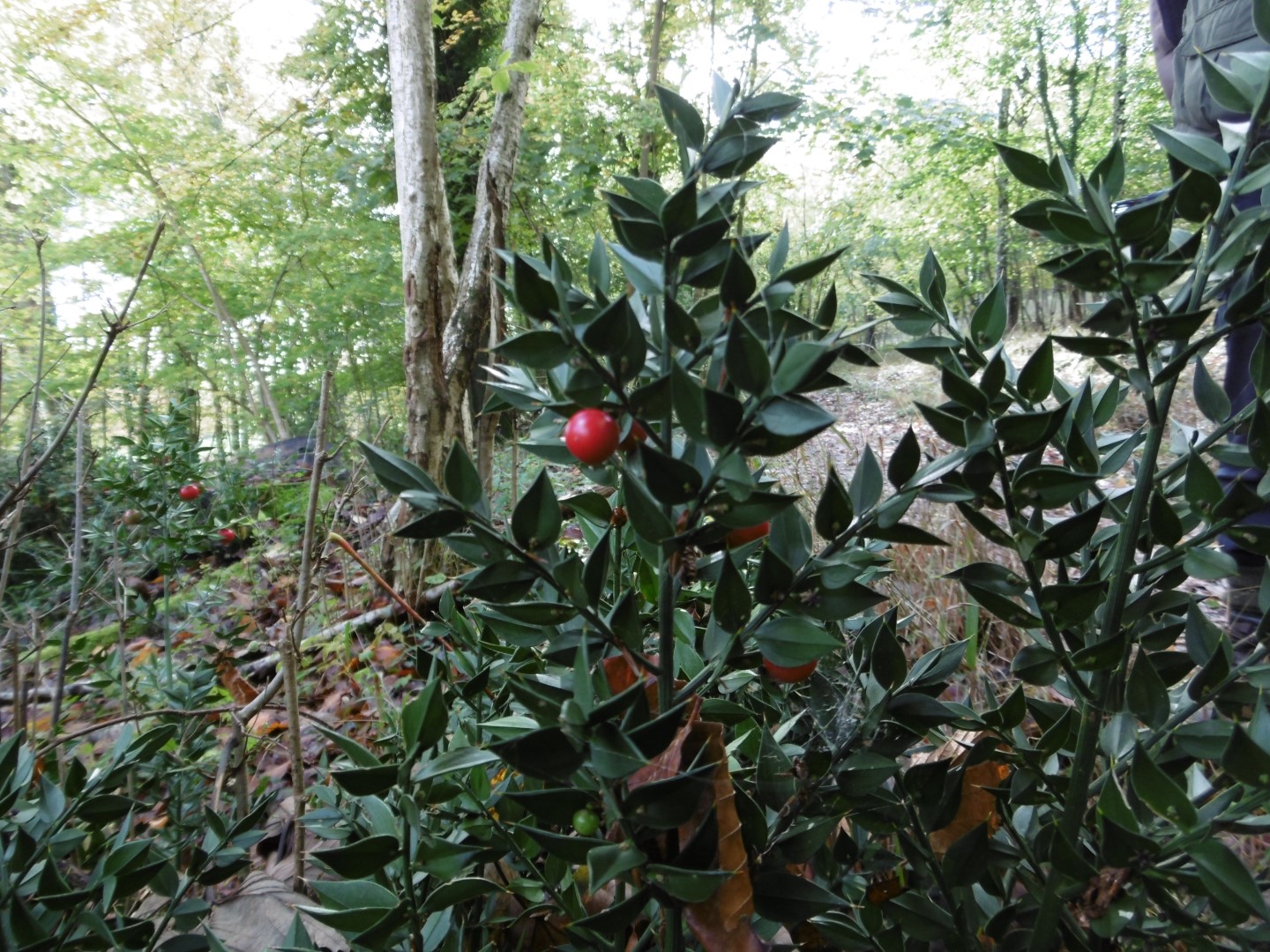
Butcher's broom - historically used to sweep down butchers boards with its tough foliage. Berries are poisonous.
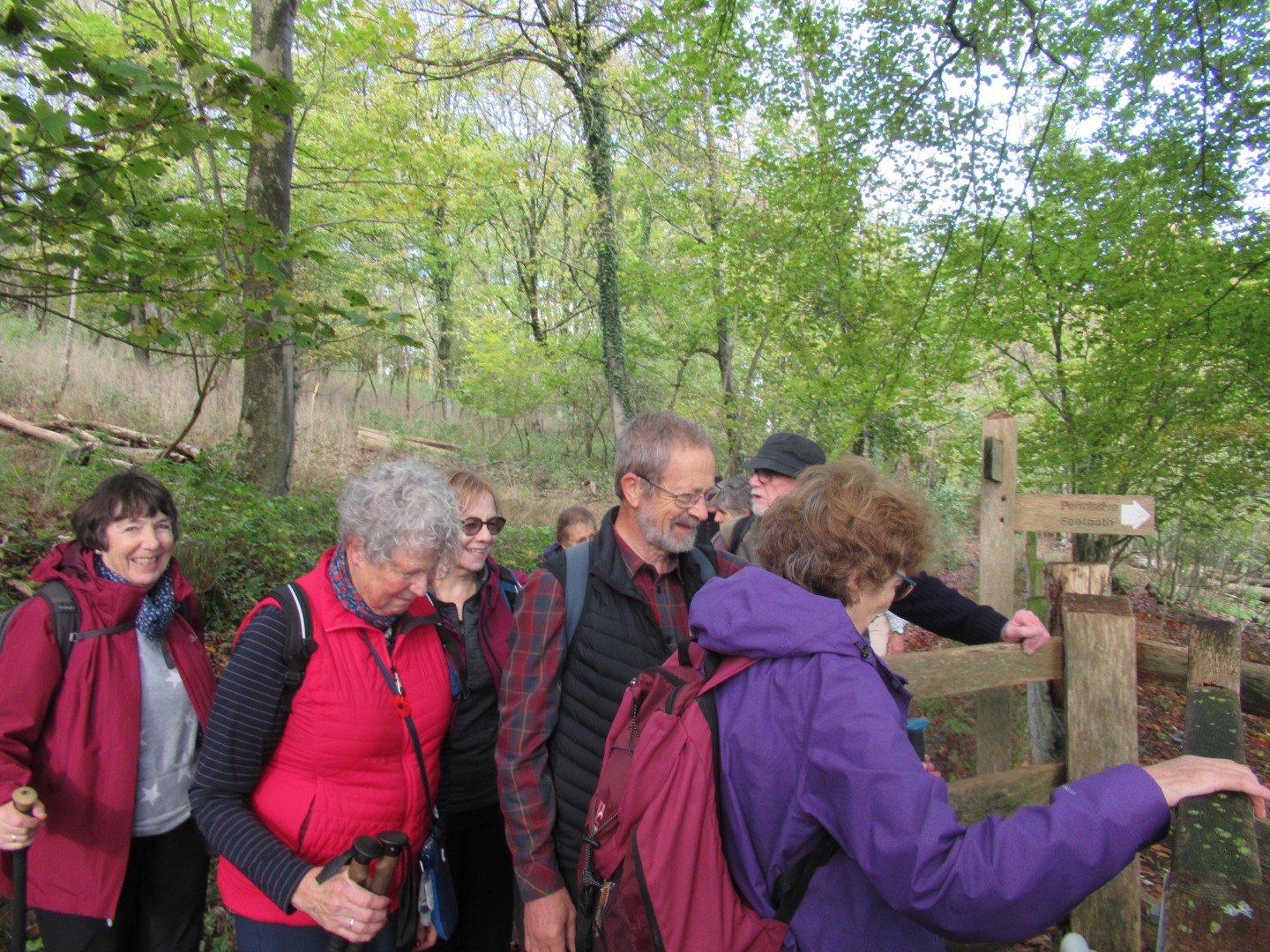
Crowding at the gate
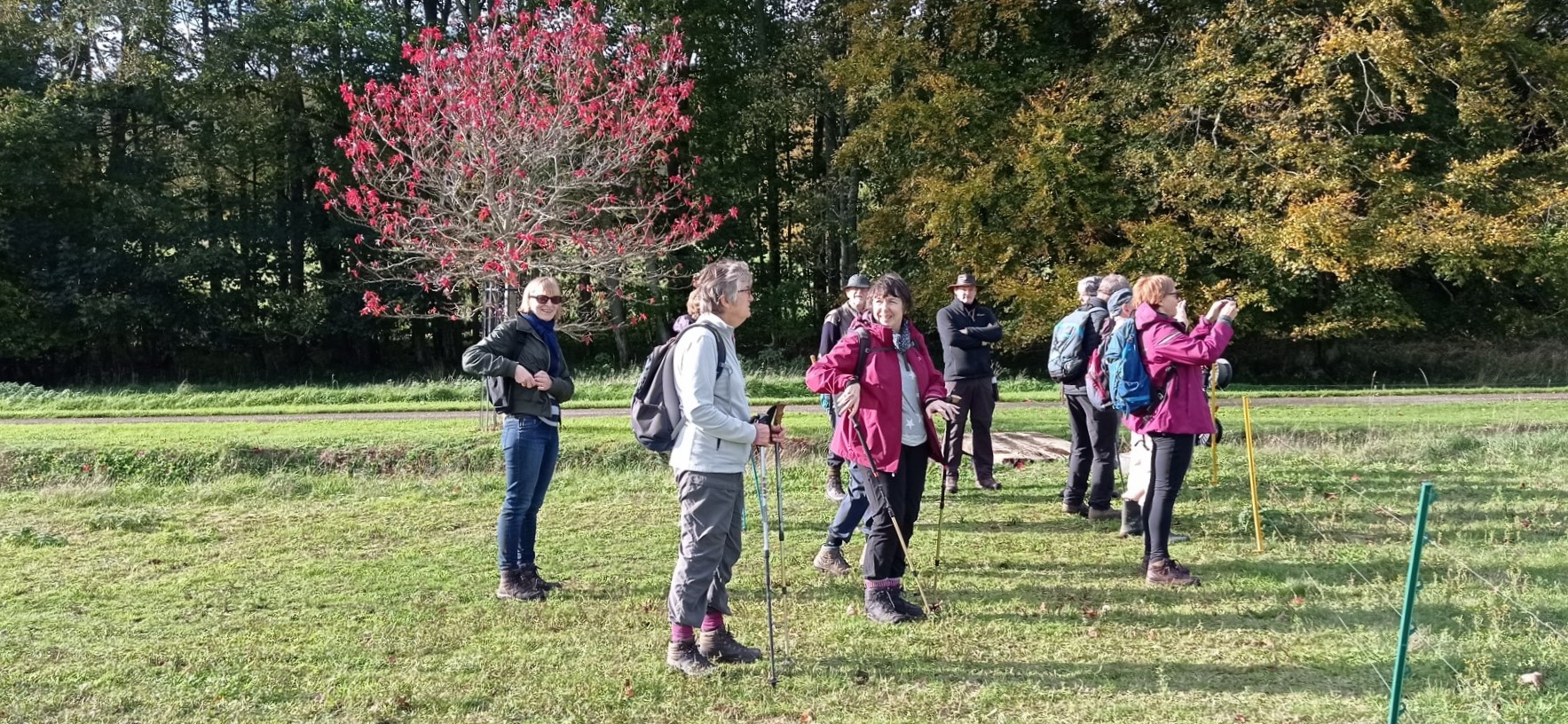
"What's so interesting?"
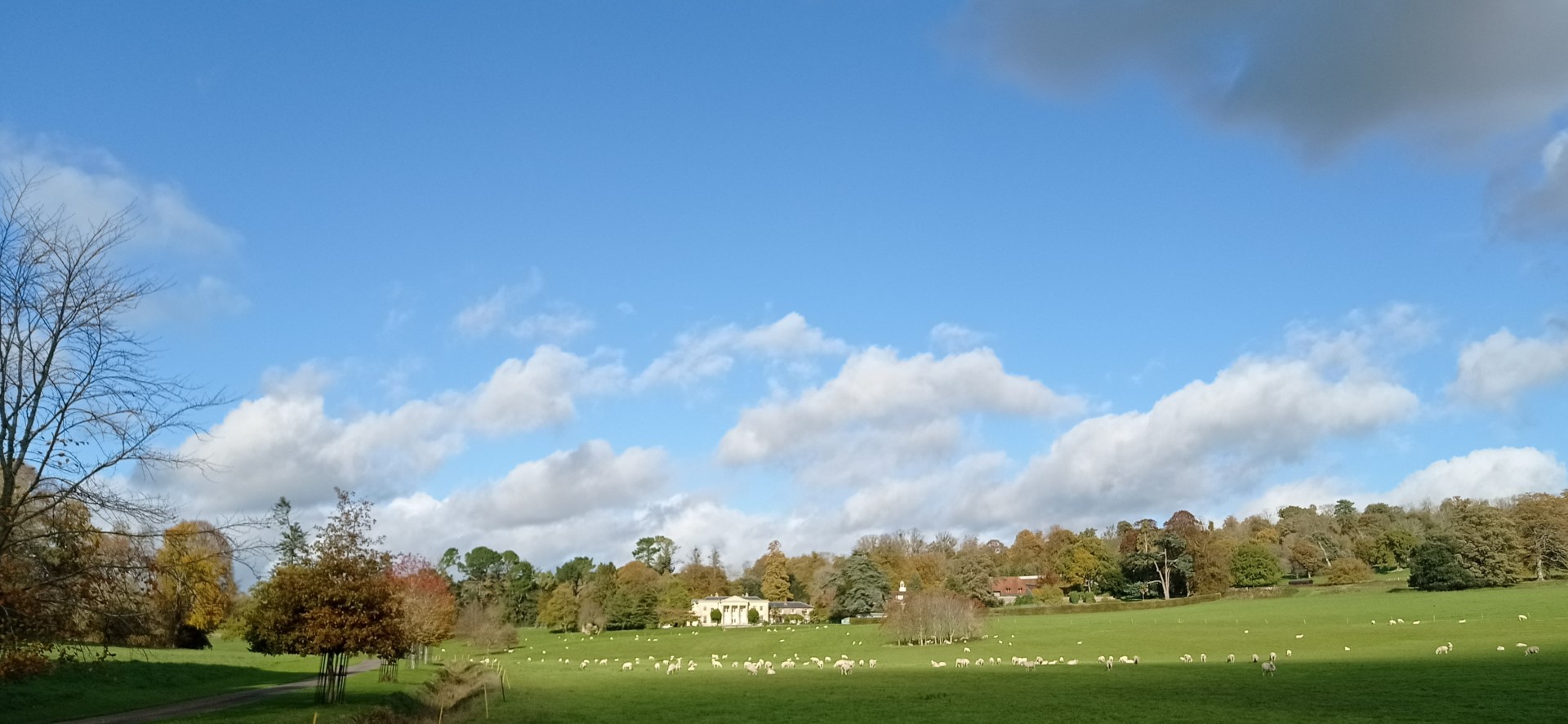
Watergate House, once the residence of John White. His father was a slave owner in
St Kitts and in his will he left annuities of £10 p.a. to '"two mulatto women named Sarah
and Frances whom I made free before I left St Christopher's(St Kitts)" He also
"declared his enslaved people 'heirlooms', so that they could not be sold"
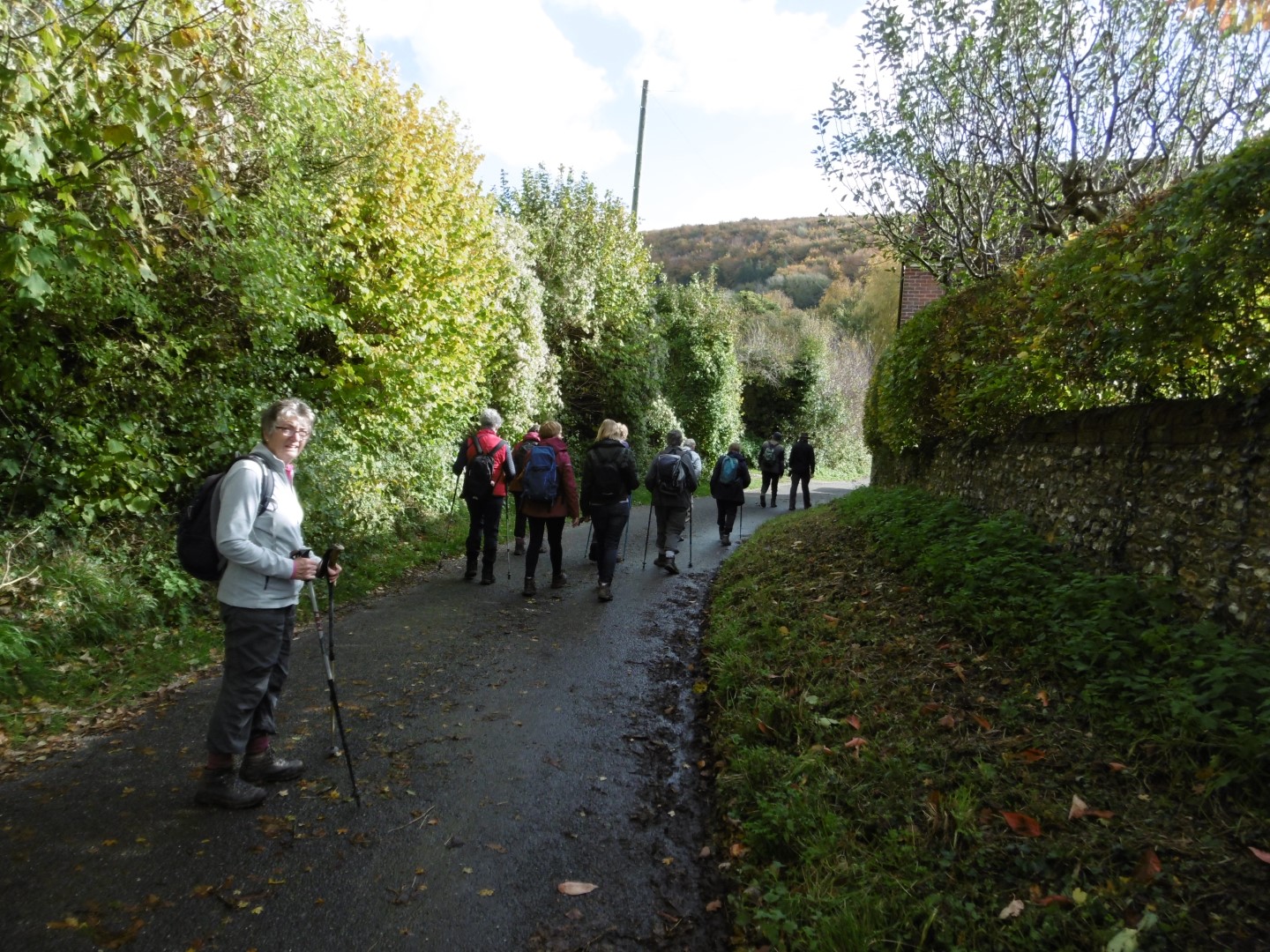
We quickly made our escape before enslavement and headed for the pub.
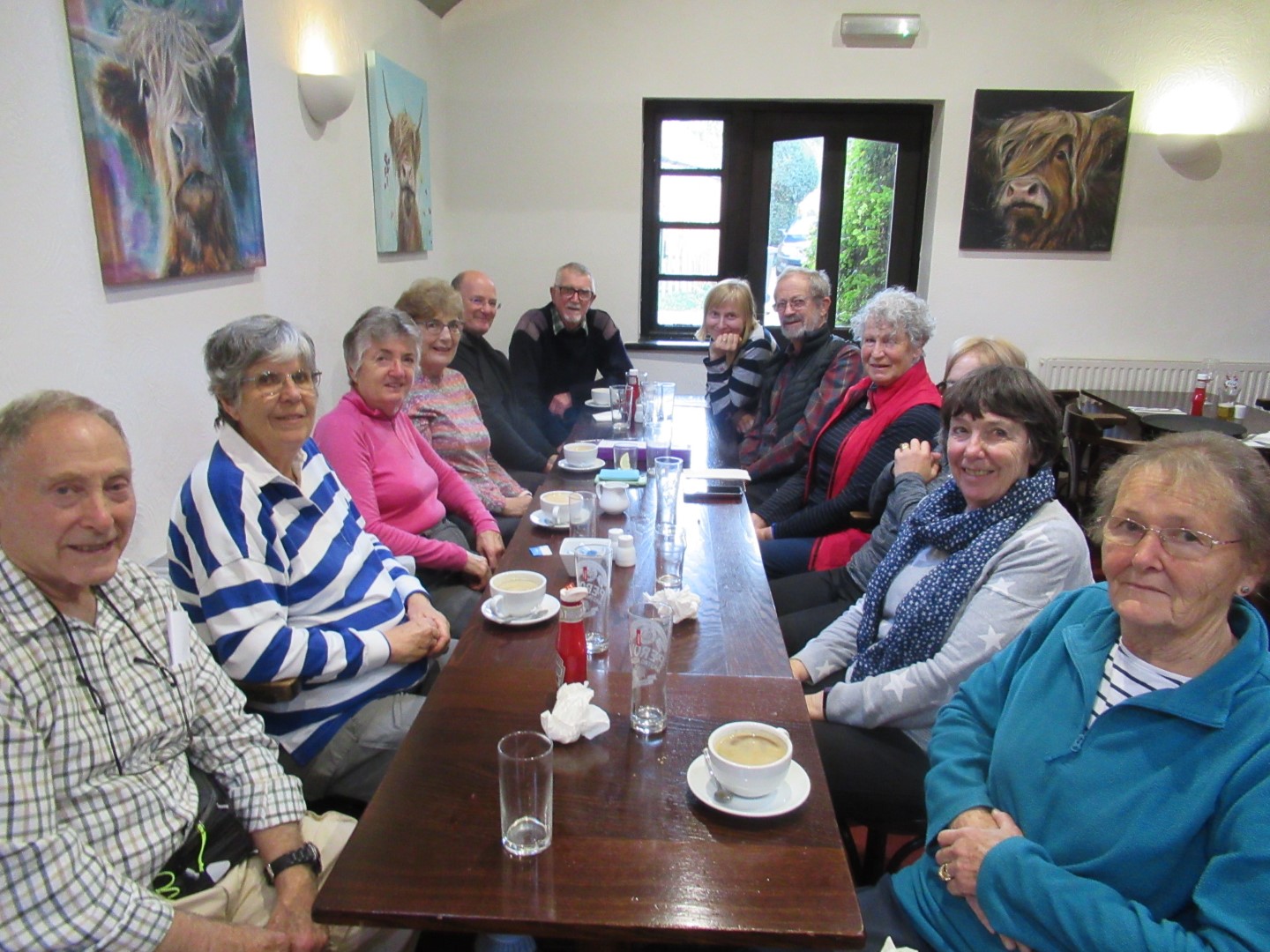
Well fed and watered after about 4.1/4 miles
.png)
Five Hills long walk on 8th November 2022
The weather forecast from three Apps was promising, sunny intervals with light showers for the 18 mile jaunt from the car park at Older Hill. The rainbow at the viewpoint at Older Hill we felt was a portent that the weather deities were with us. The walk leader, Paul suggested we start at 09:00 to ensure we finished in daylight. In the team esprit of total belief everyone brought a torch. The first hill of Older Hill conquered, we set off north through Heathfield Rough, skirting round the Hollycombe Steam Collection for our second peak at Parkgate Copse before disrobing excess layers due to the heat whilst enjoying the views. No sooner than we had reduced our attire, the ‘light showers’ commenced necessitating a raingear stop before manfully striding our way across Stanley Common dropping down the valley to start the climb to Linchmere Common picking up the Sussex Border Path. We crested the third peak at Marley Common slightly behind schedule but stopped for a coffee and Polish fudge break in the sunshine. The route plunged off the common down to Bell Road to facilitate the next ascent to Black Down, the fourth peak following the Sussex Border Path. The weather was being good to us as we looked forward with eager anticipation to our well earned lunch. Our leader took the opportunity to show us the distant hills we had traversed, but being shrouded in mist we took his word for it. The smugness of our exploits to that time proved to be our downfall. The short distance to the Temple of the Winds on Black Down gave the Temple of the Winds time to call up their friends ‘heavy rainfall’ for a demonstration storm dance together. The lack of wind and rain shelter made the Temple uninviting for our lunch break, so we scurried down the hill to take shelter under trees for lunch. Driving rain did its best to dampen the lunchtime spirit, but the welcome Polish sausages banished thoughts of misery and discussions about the meaning of ‘light showers’ in meteorological circles. The efficacy of our waterproof attire was proven to each of us by this point. The inducement of the weather to tarry over lunch returned us to our leader’s time schedule. Descending to Blackdown Farm saw the sun break out to warm and dry us as we skirted the vineyards to Verdley Woods for the climb to Bexleyhill. The continued sunshine at Bexleyhill gave the encouragement to remove raingear, have a tea break and demolish a communal bar of decidedly foreign chocolate. The final leg of the walk took us along roads south of Henley past the King Edward VII Estate to pick up the Serpentine Trail back to the car park at Older Hill. It was still daylight when we finished.
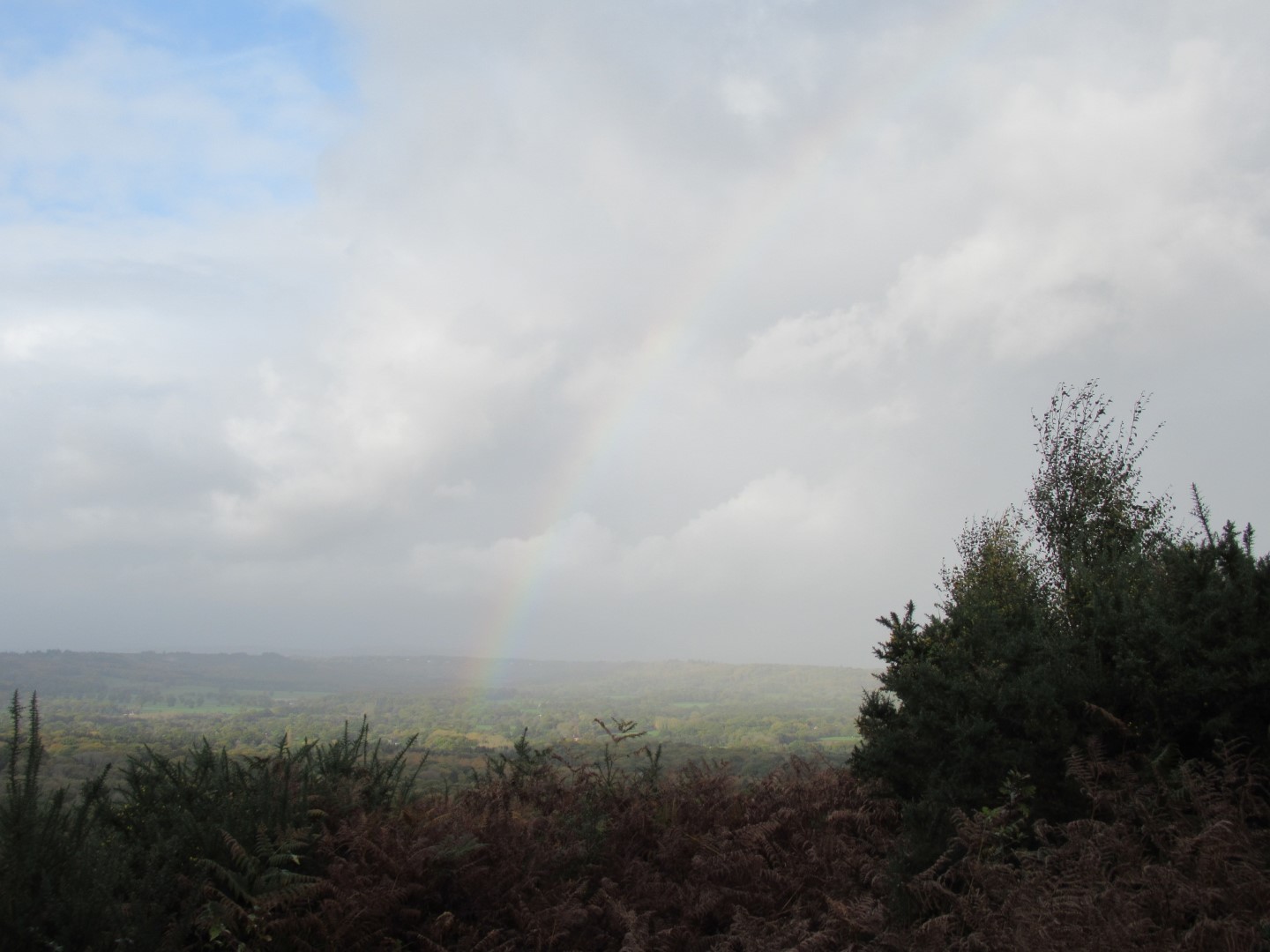
The rainbow at Older Hill: portent of a good walk
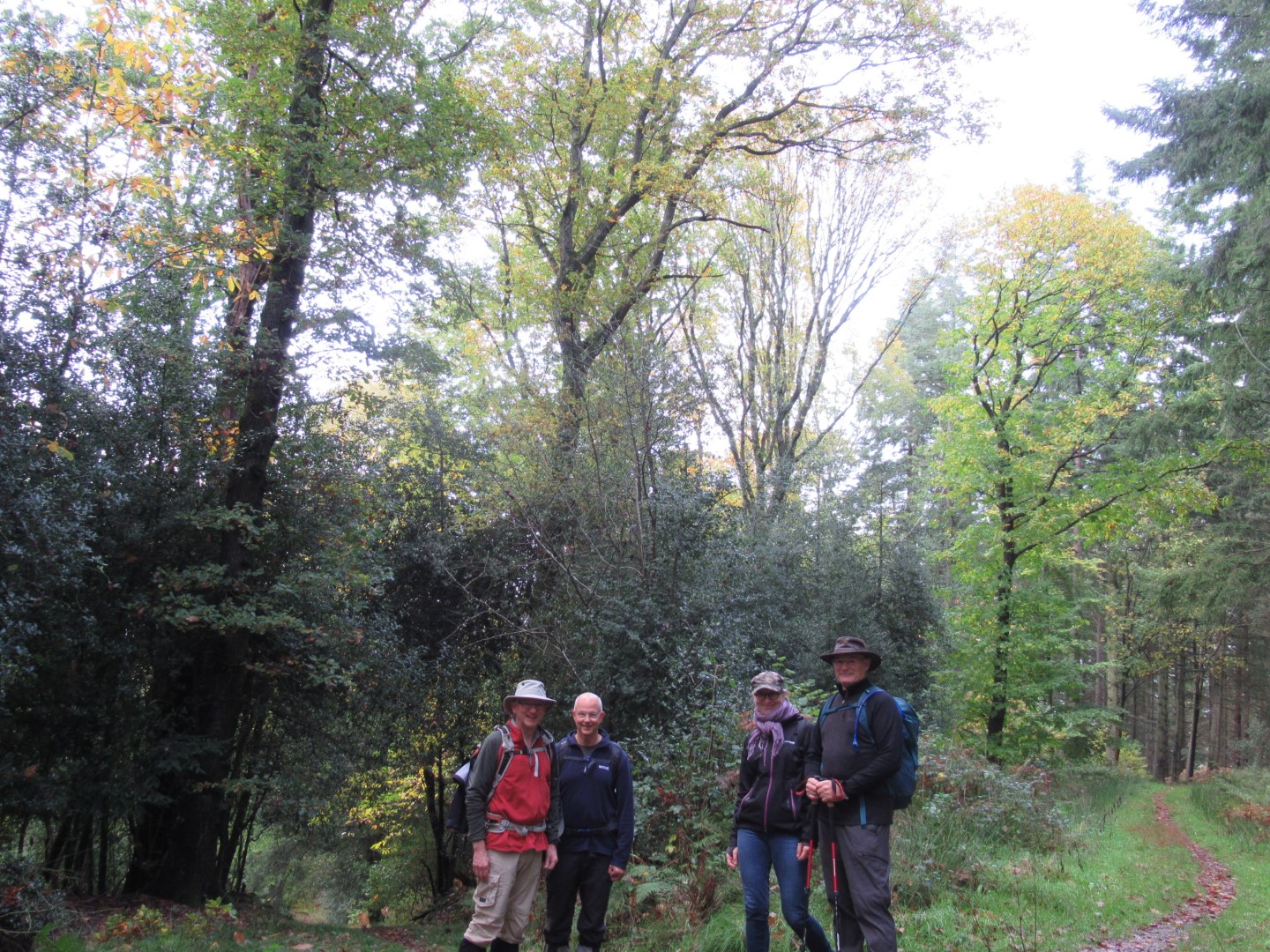
The intrepid team
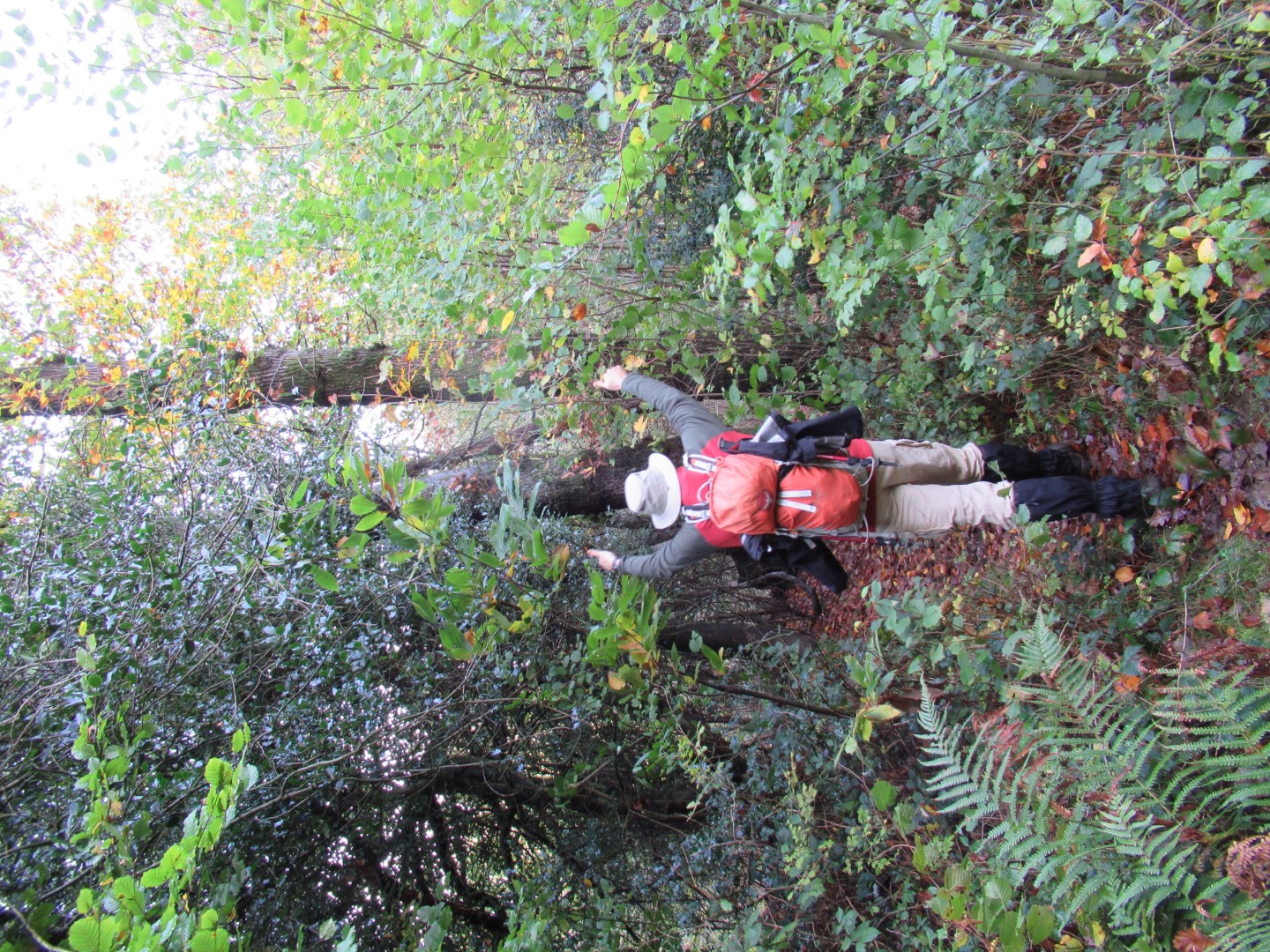
Everything is going to plan
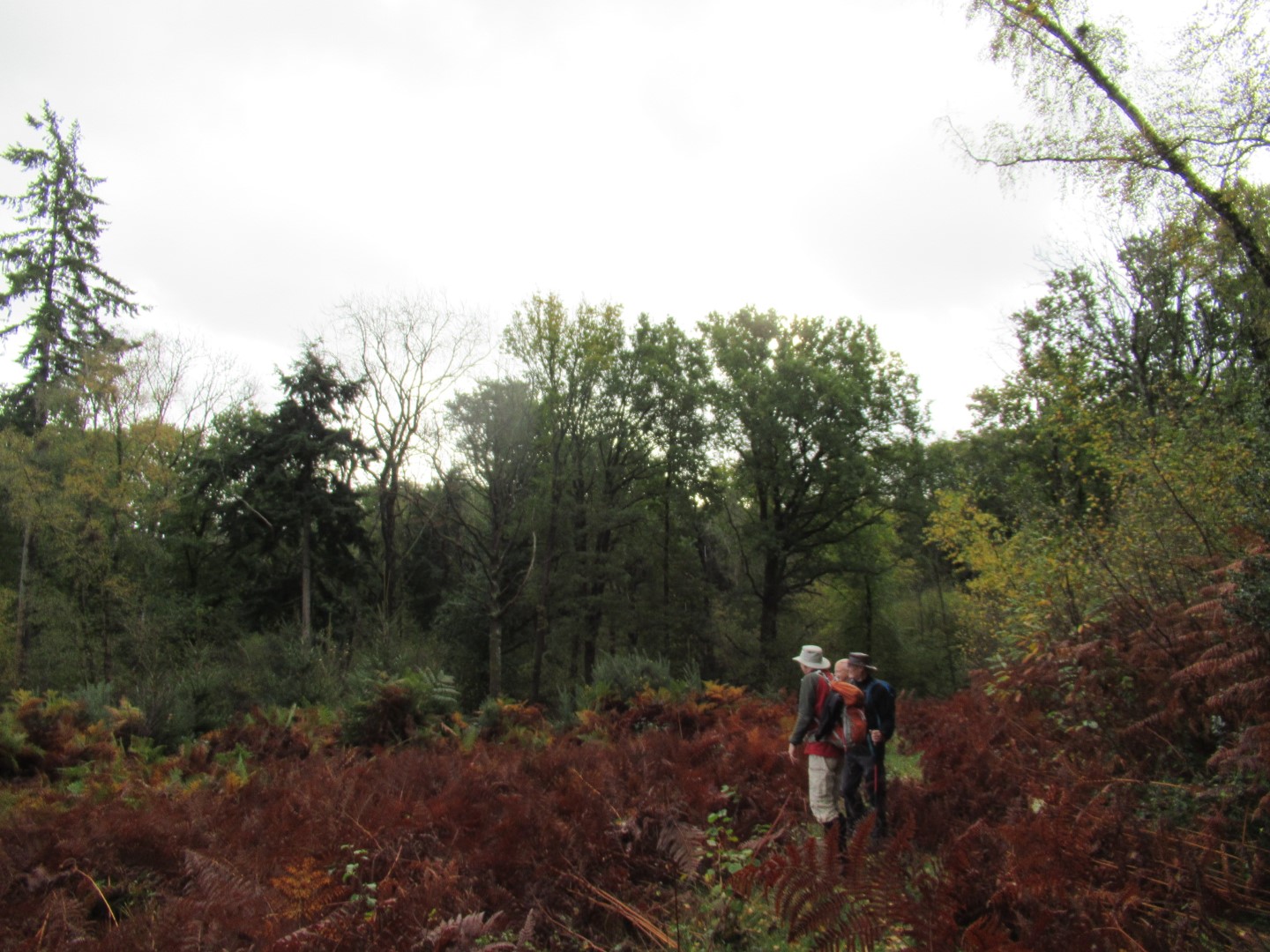
The view across Ploughgate Rough
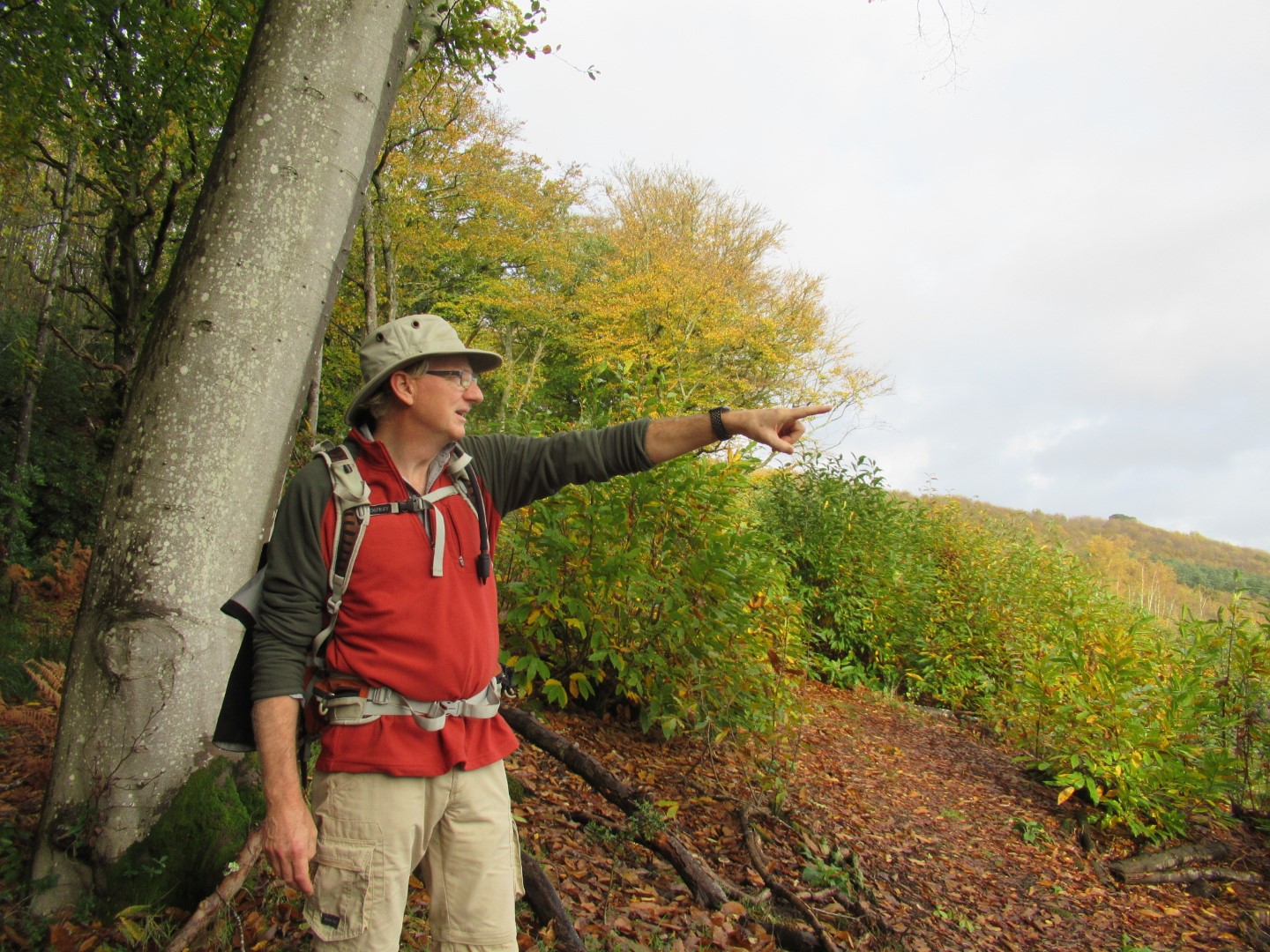
Yes, we are going to be over there for lunch

The lunch venue is over there

It’s getting a bit warm folks
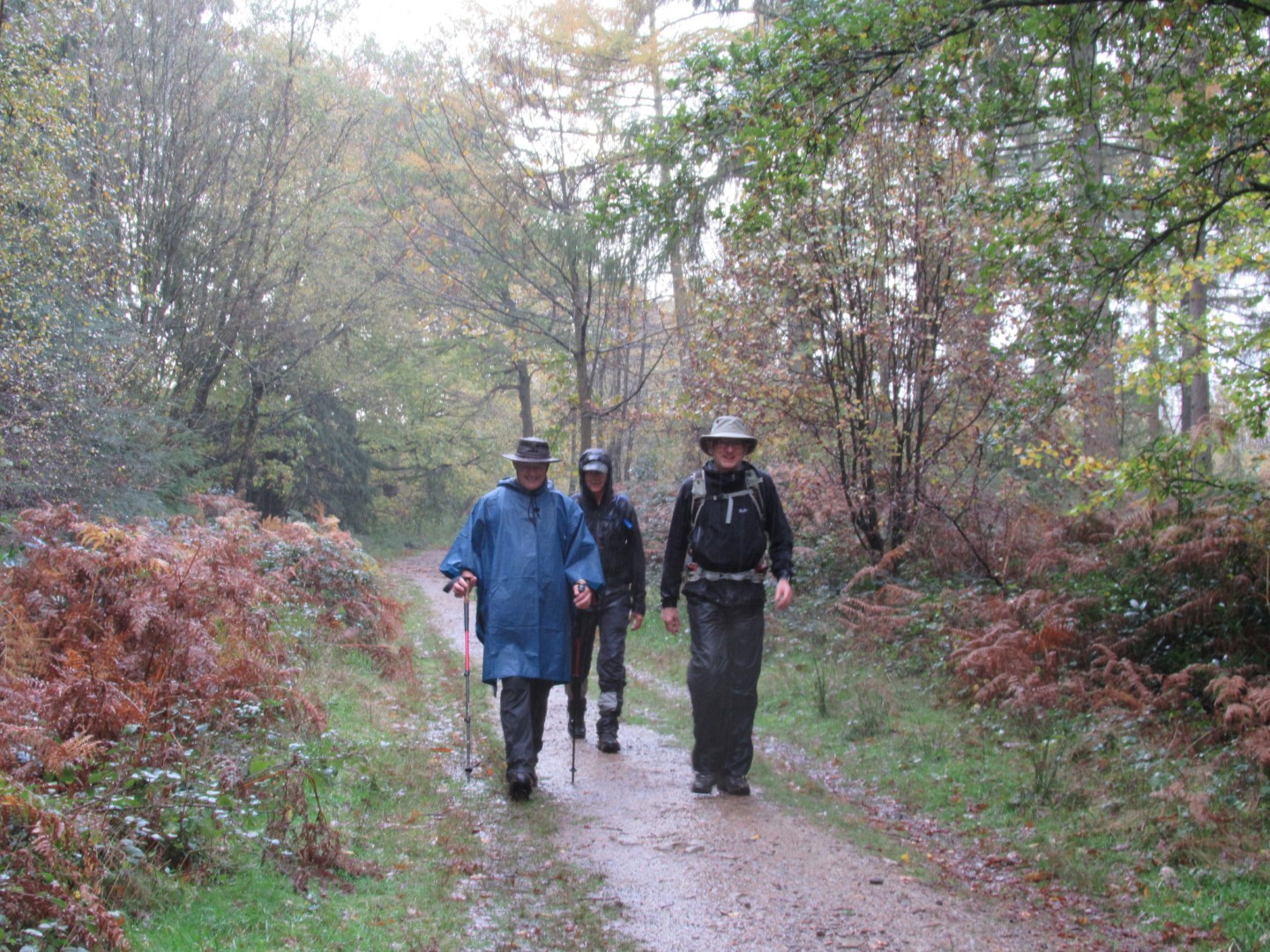
Errr, actually now it’s a bit wet
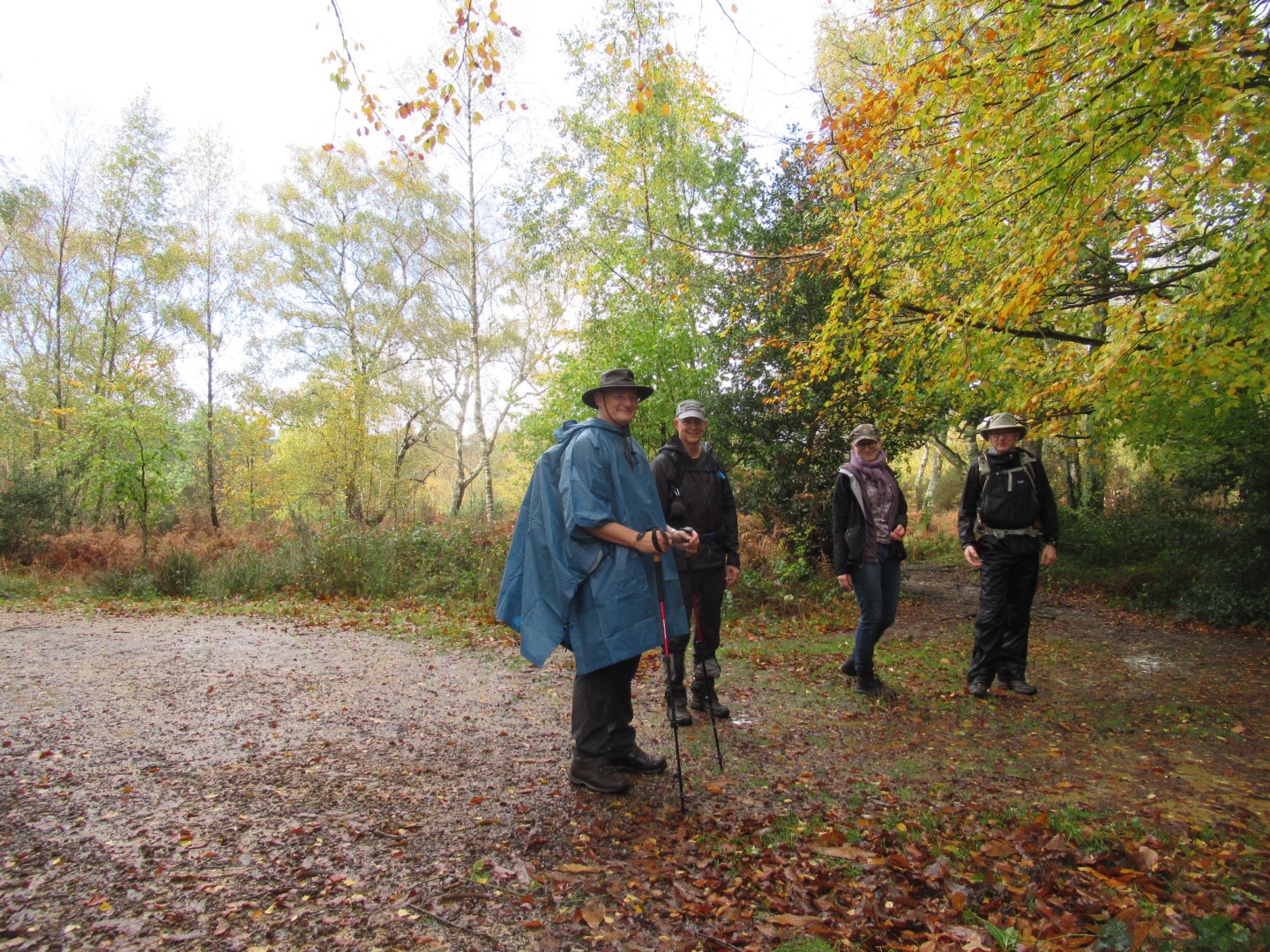
But we can still pose, even in the rain
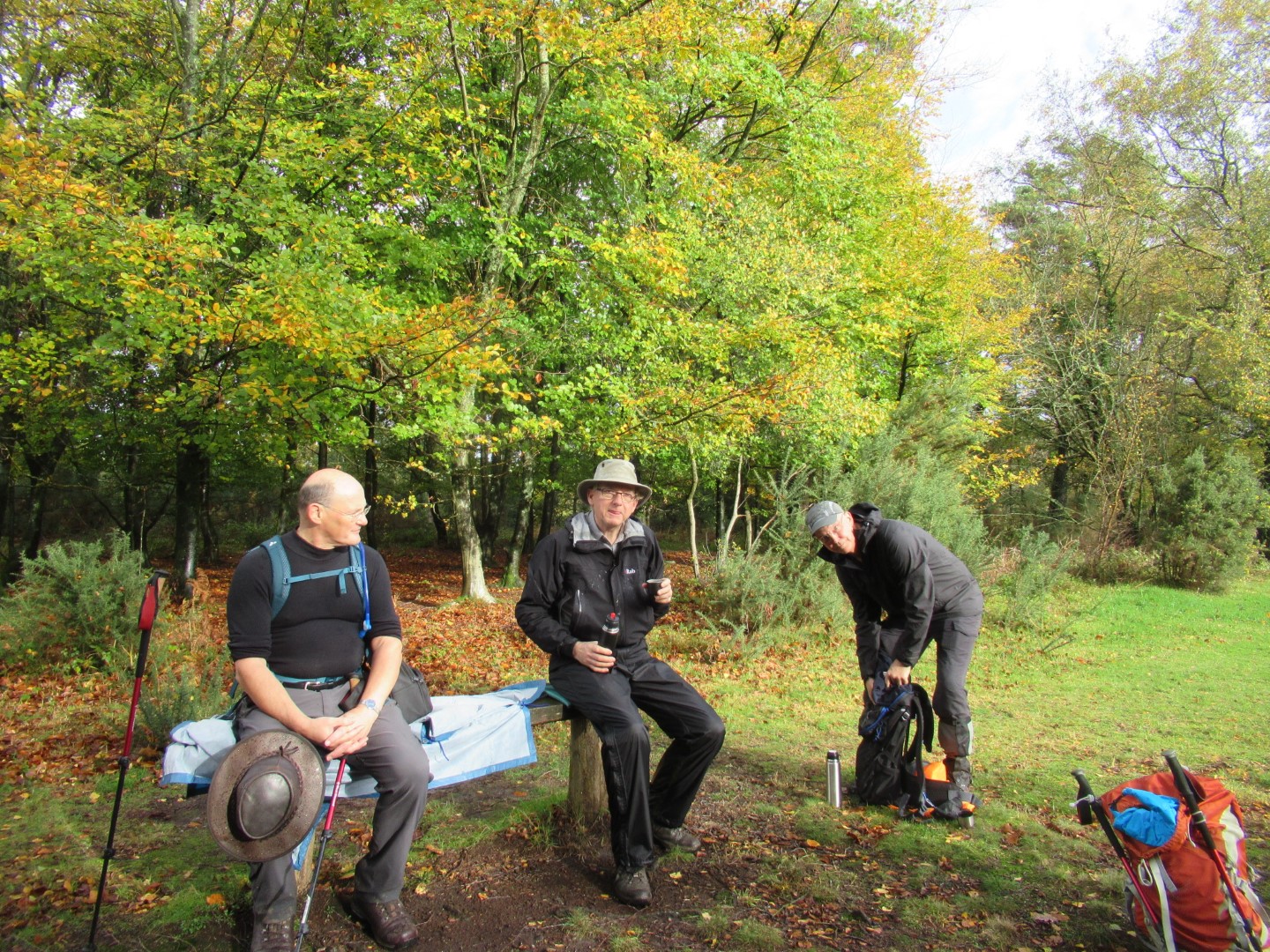
Morning coffee break
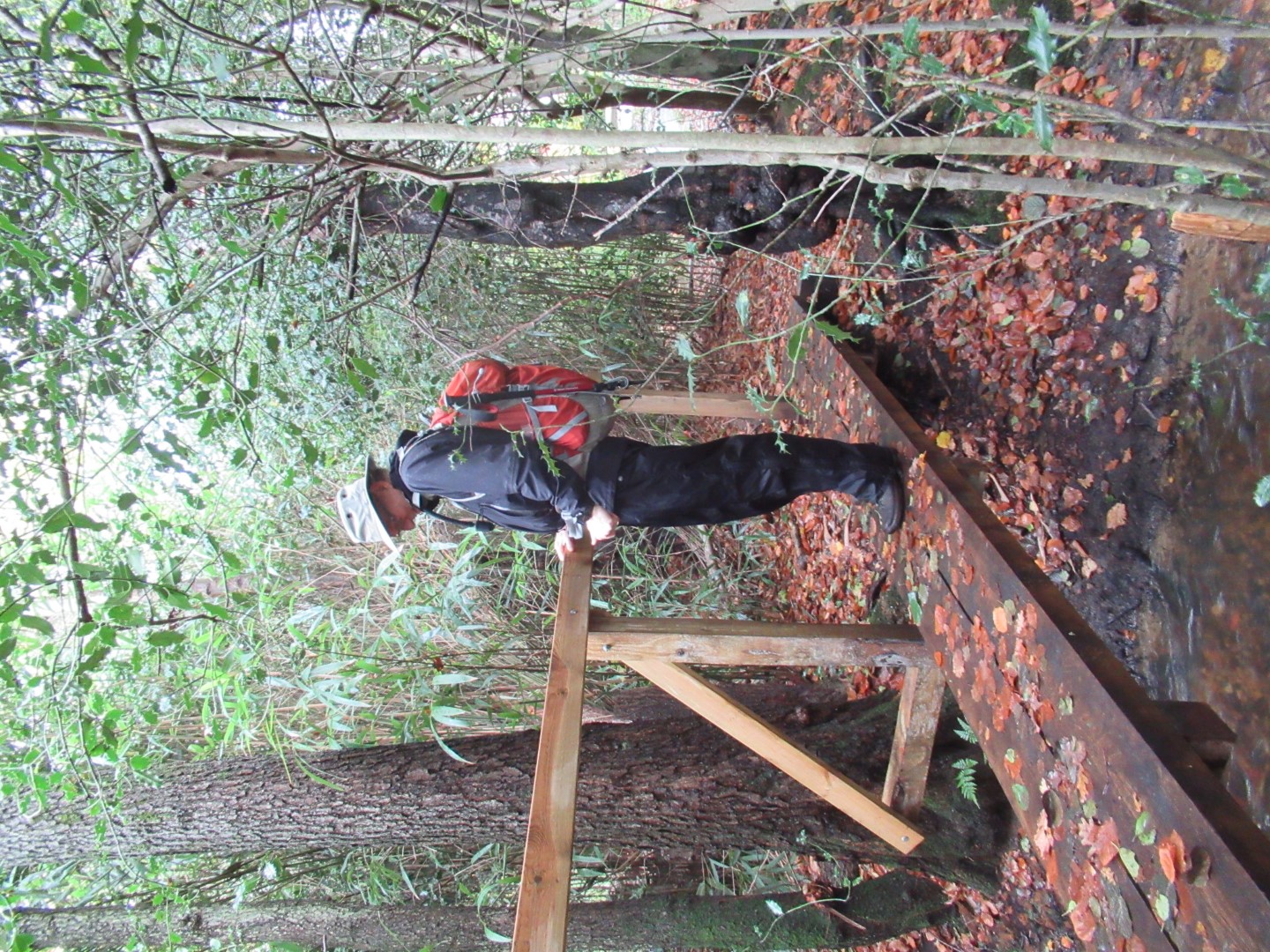
There was no handrail when I pre walked, so I quickly knocked this up and it’s still here
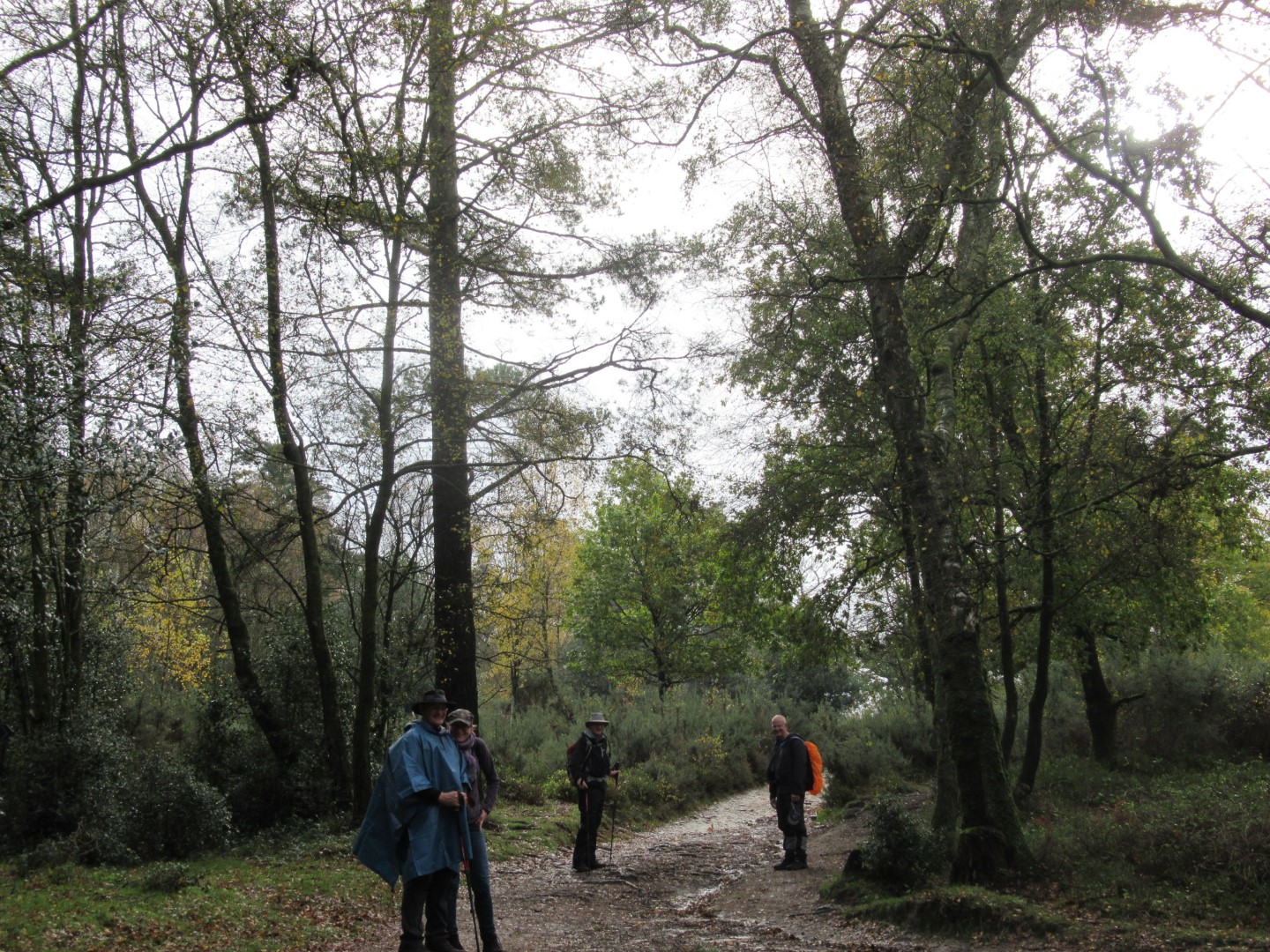
We’re going this way
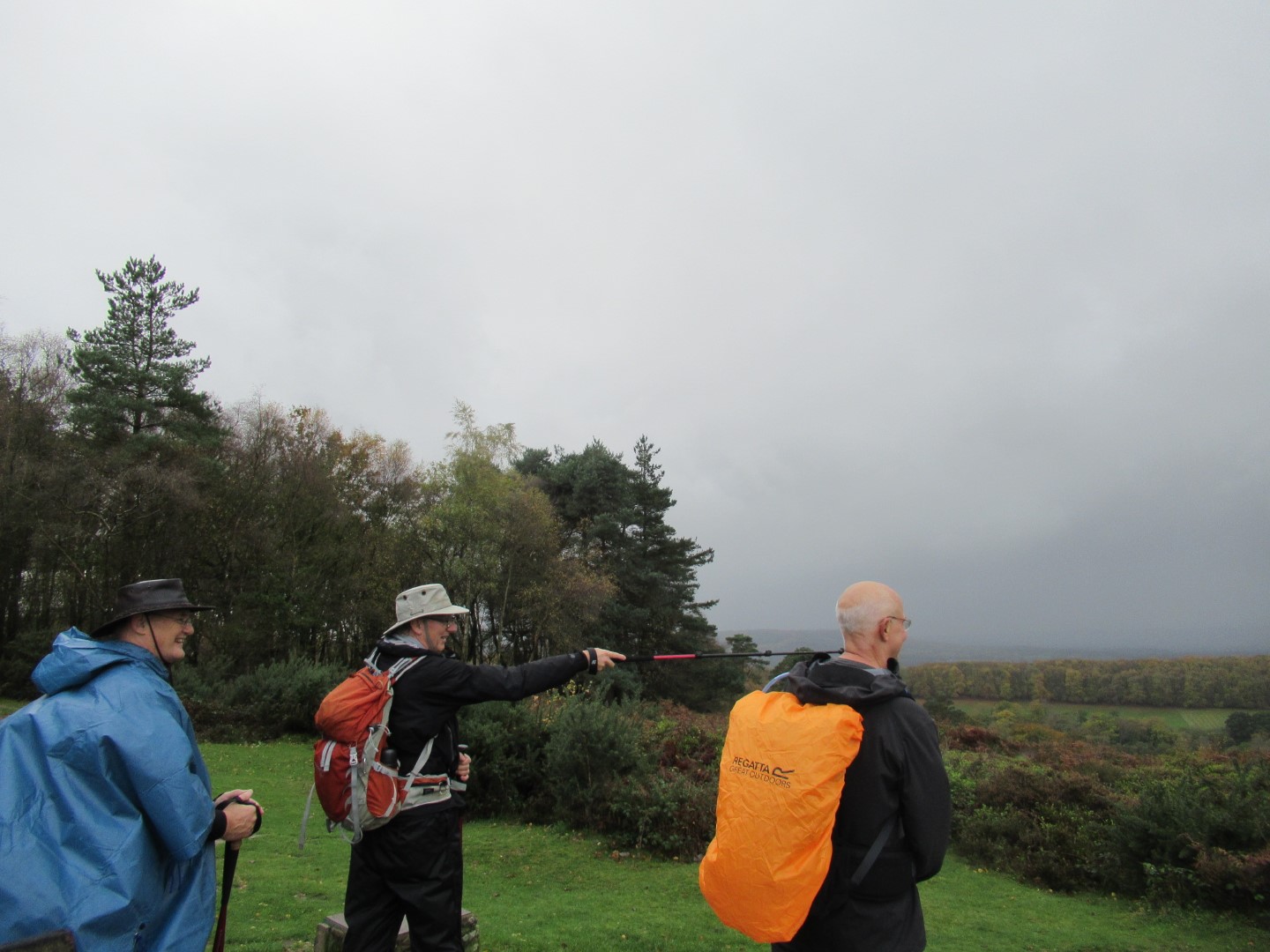
You see we started there, and we’ve been over all those hills, now for lunch
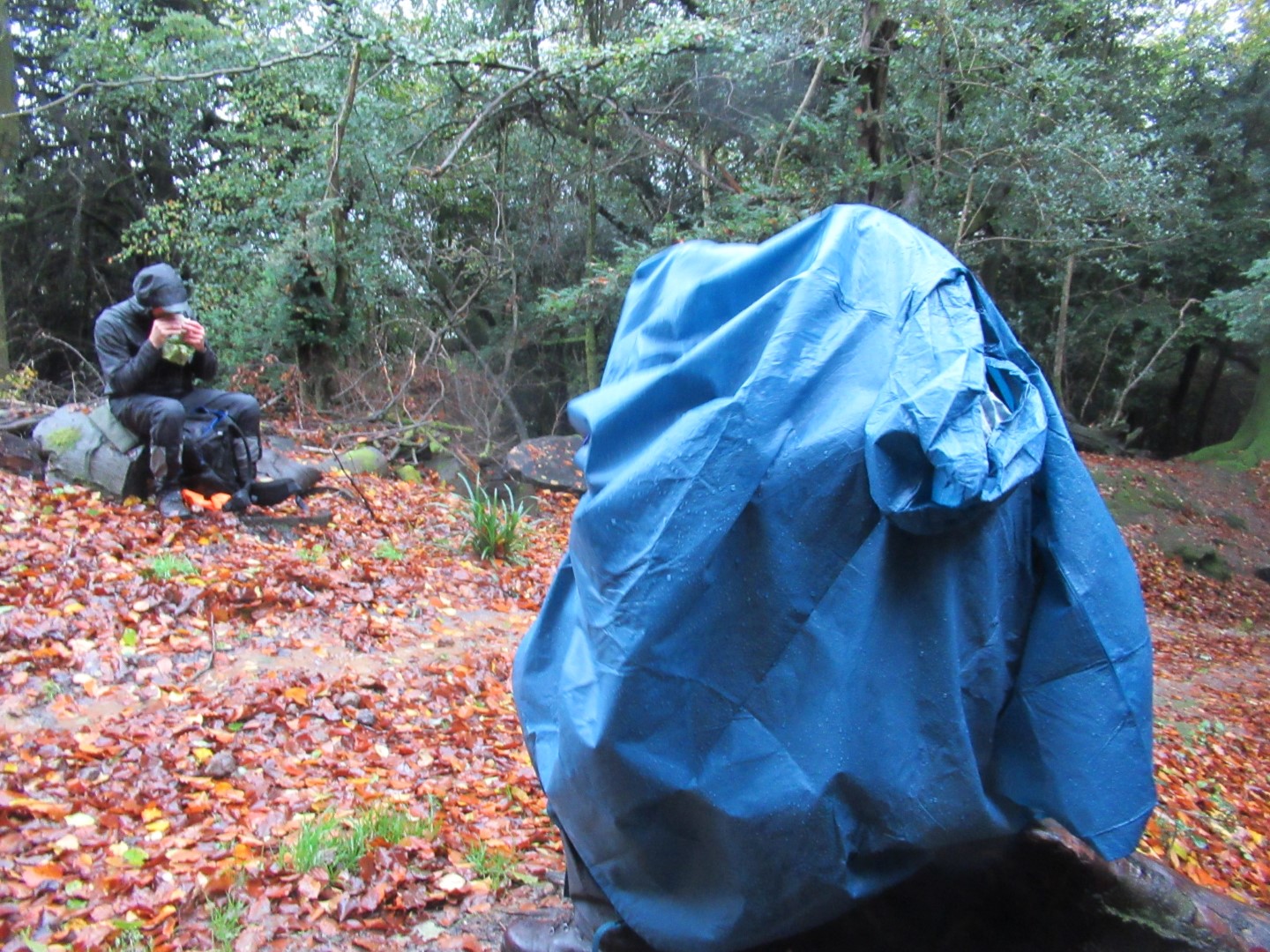
There’s a sandwich in here somewhere, I’m sure of it
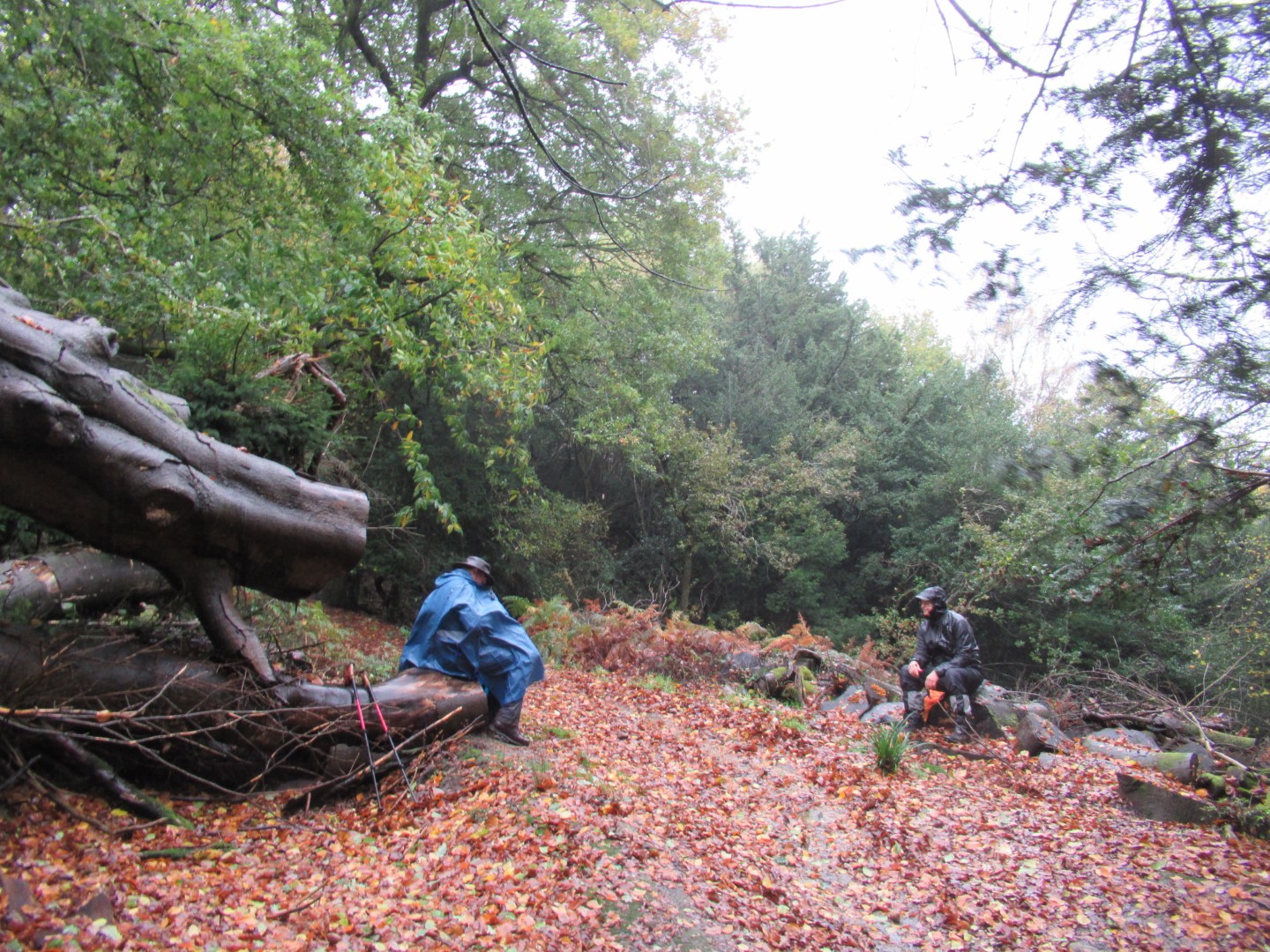
Just how wet can lunch get?
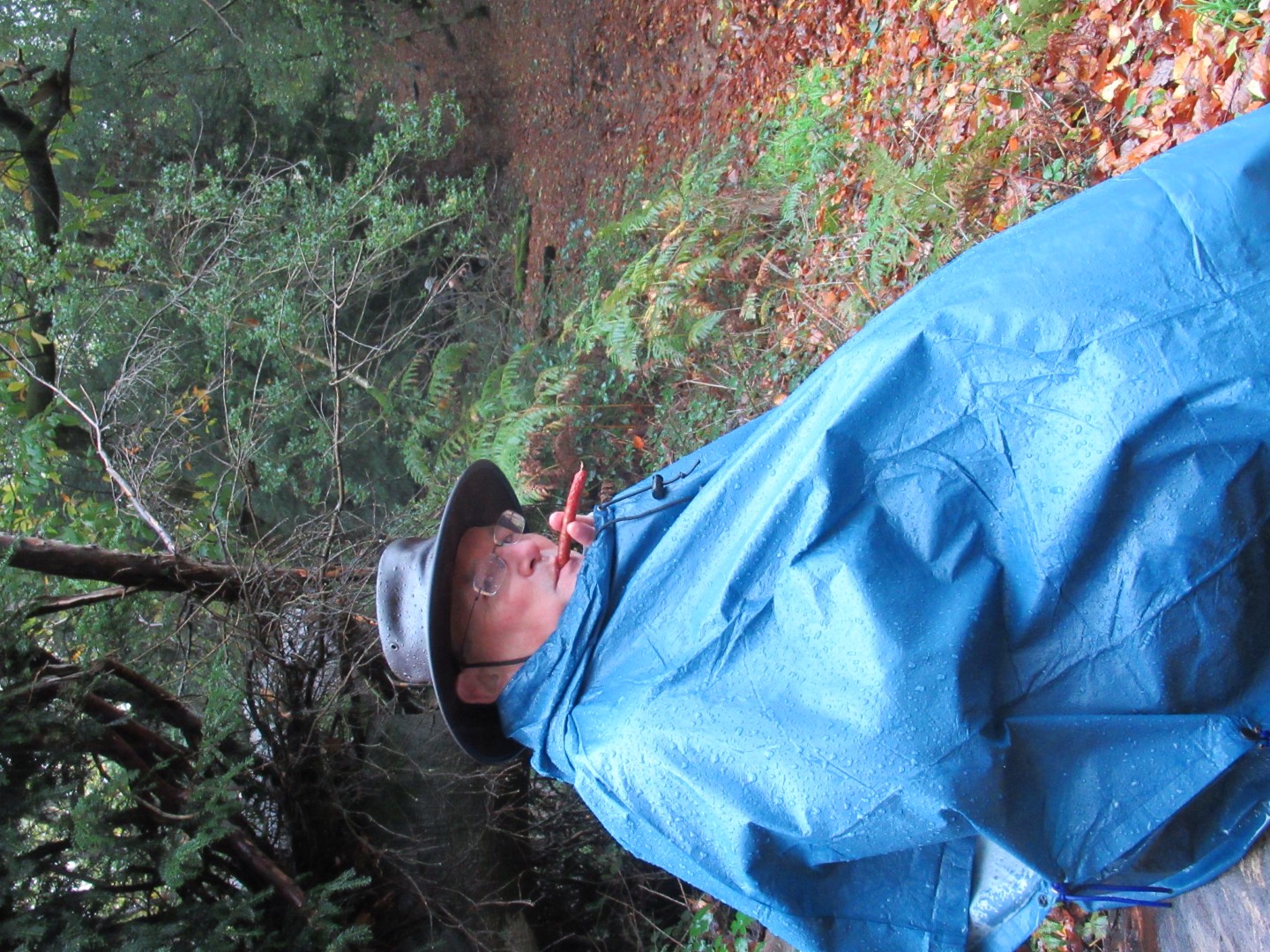
Polish Sausage: eat it or smoke it?
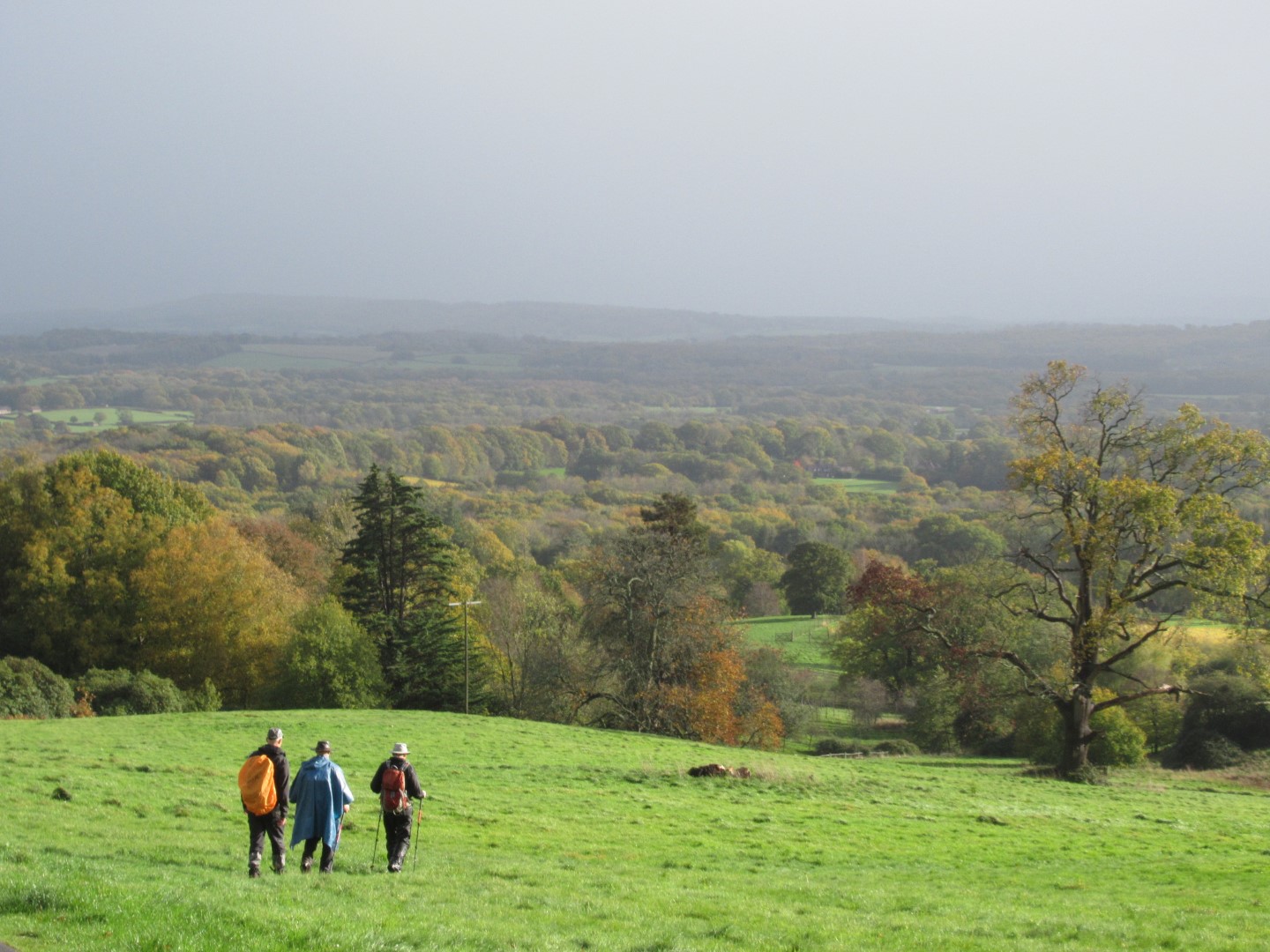
Walking in the sun at Blackdown Farm
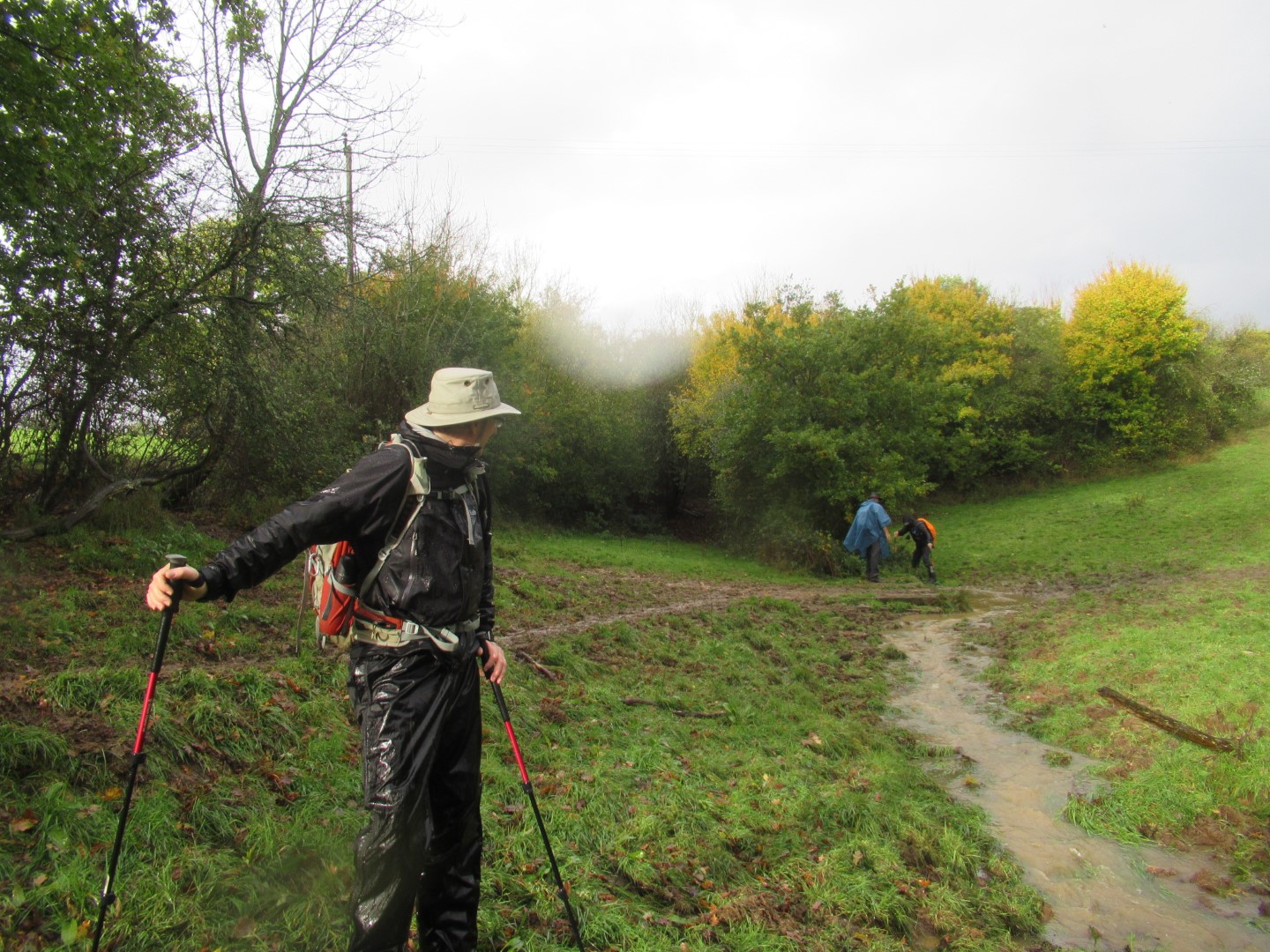
Mud, mud, glorious mud……
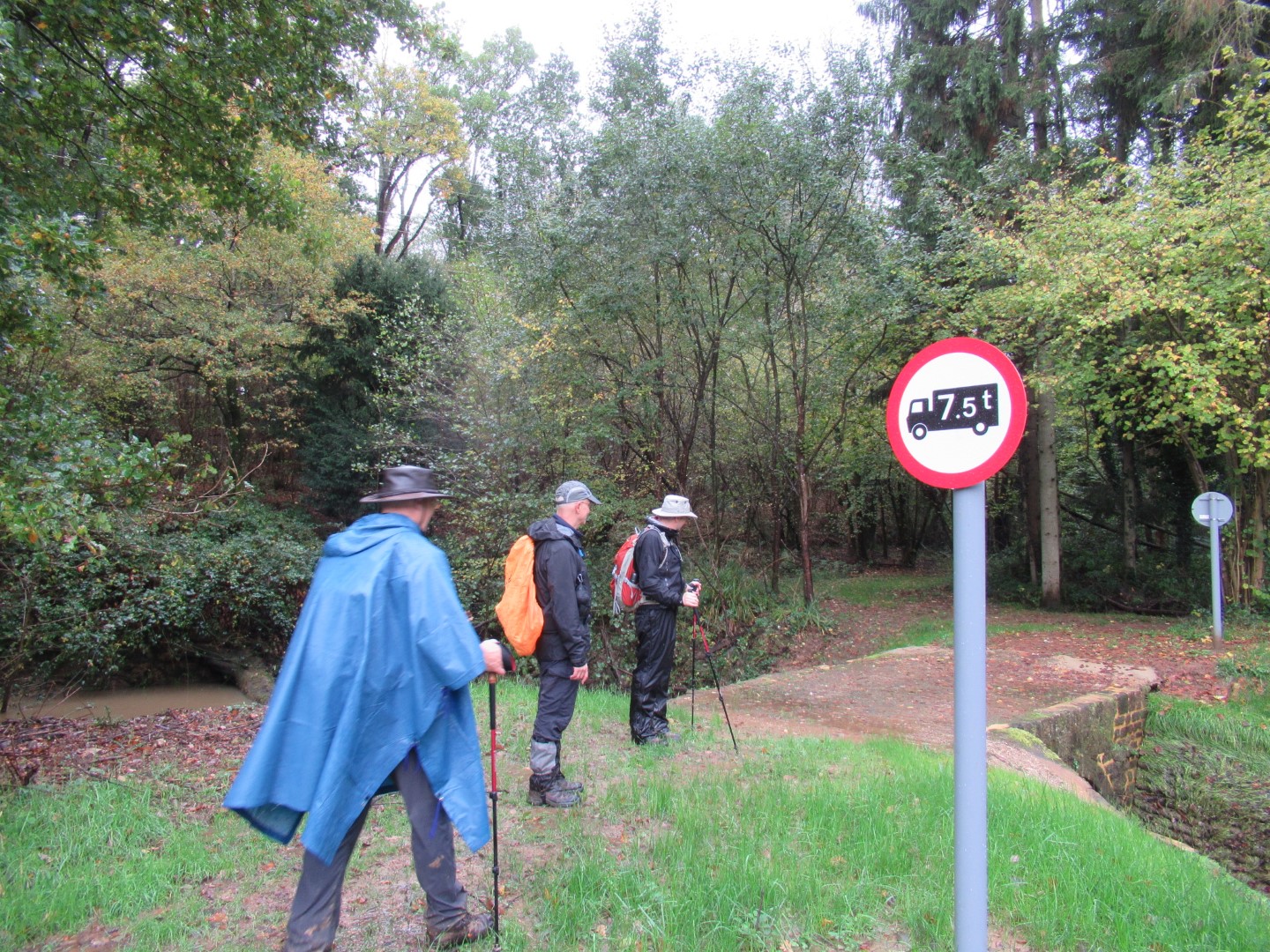
No road to this bridge, to be safe let’s go one at a time
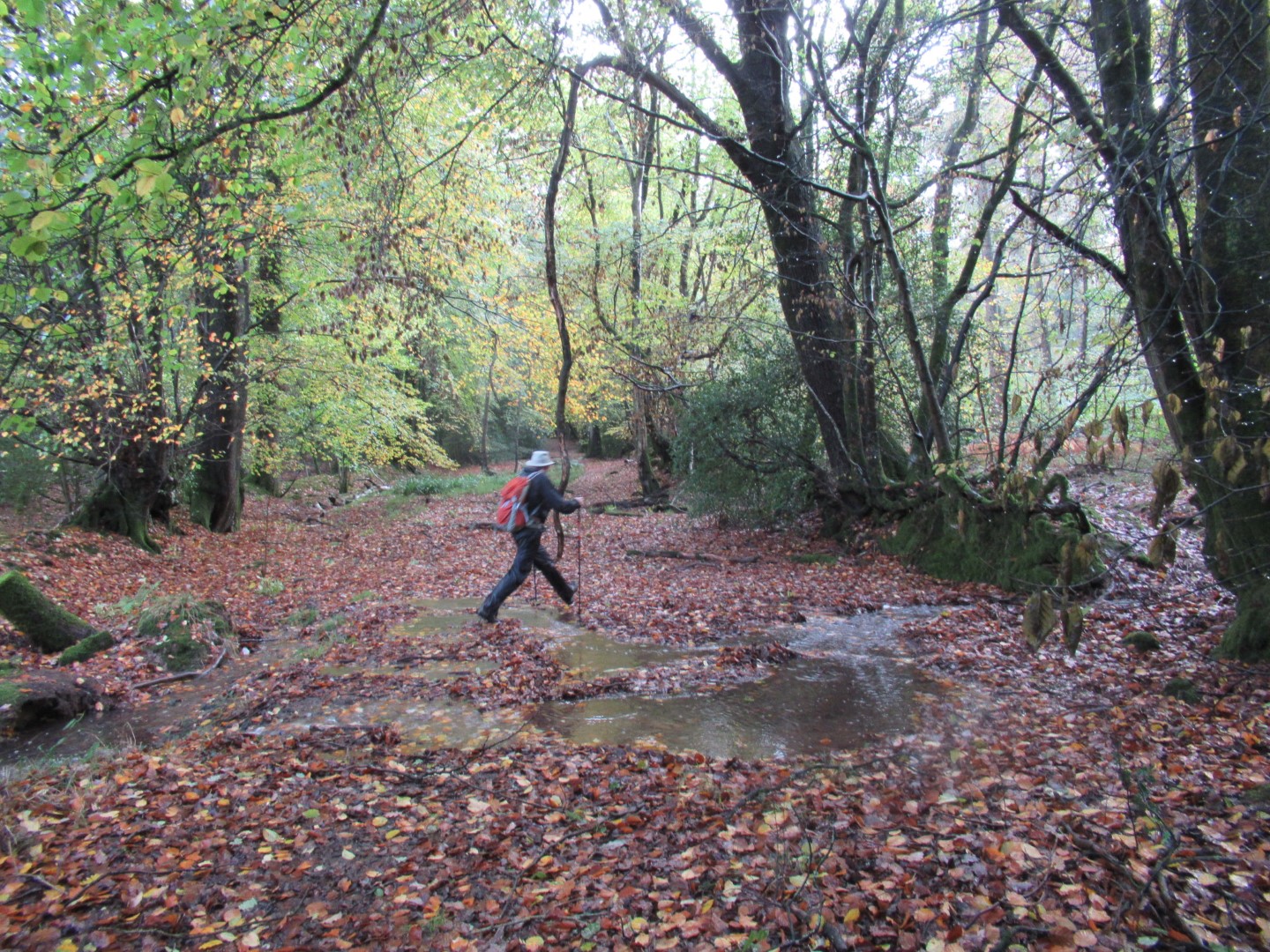
It’s one small step for man…..
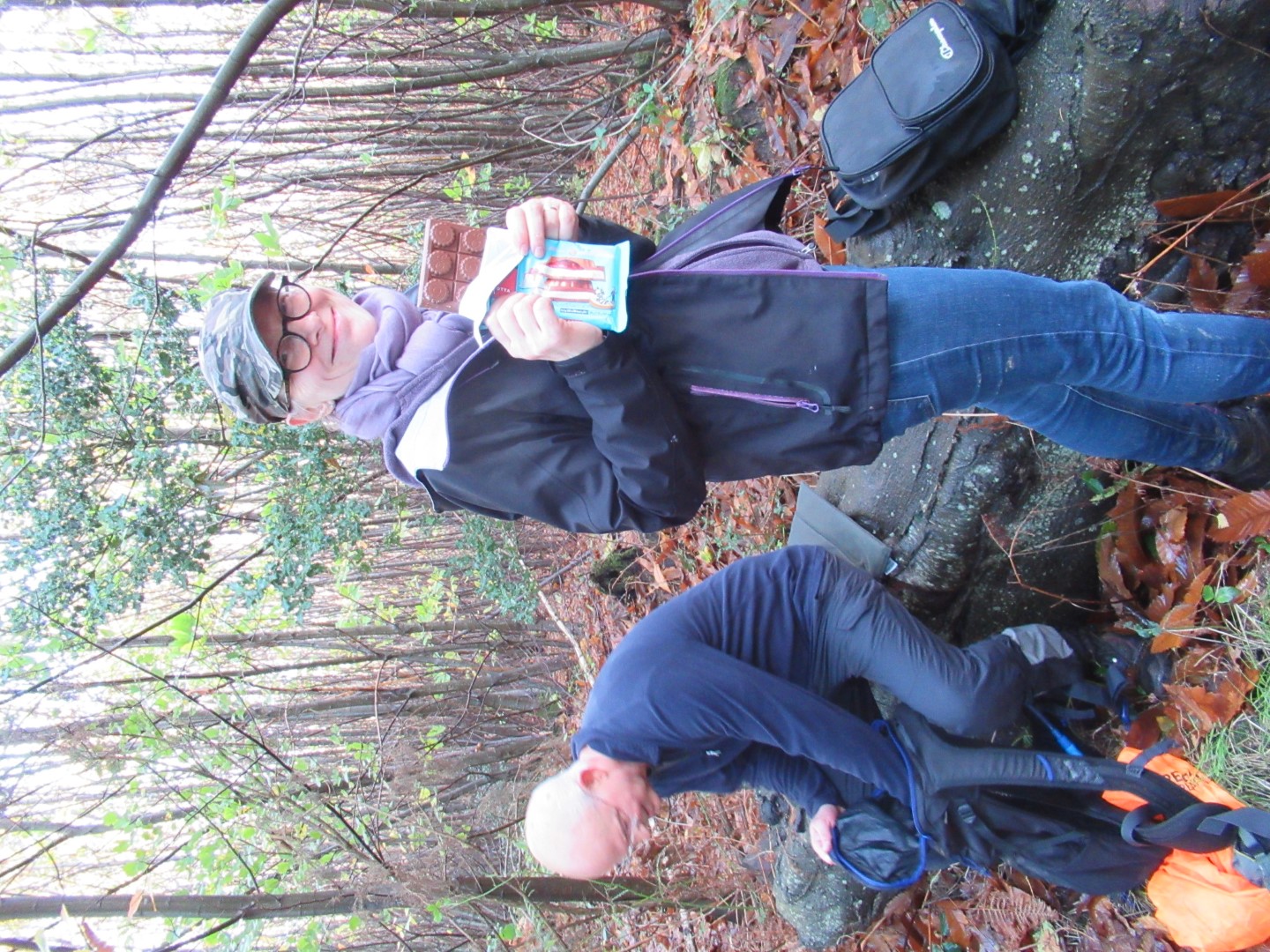
Time for tea and a small square of Polish chocolate
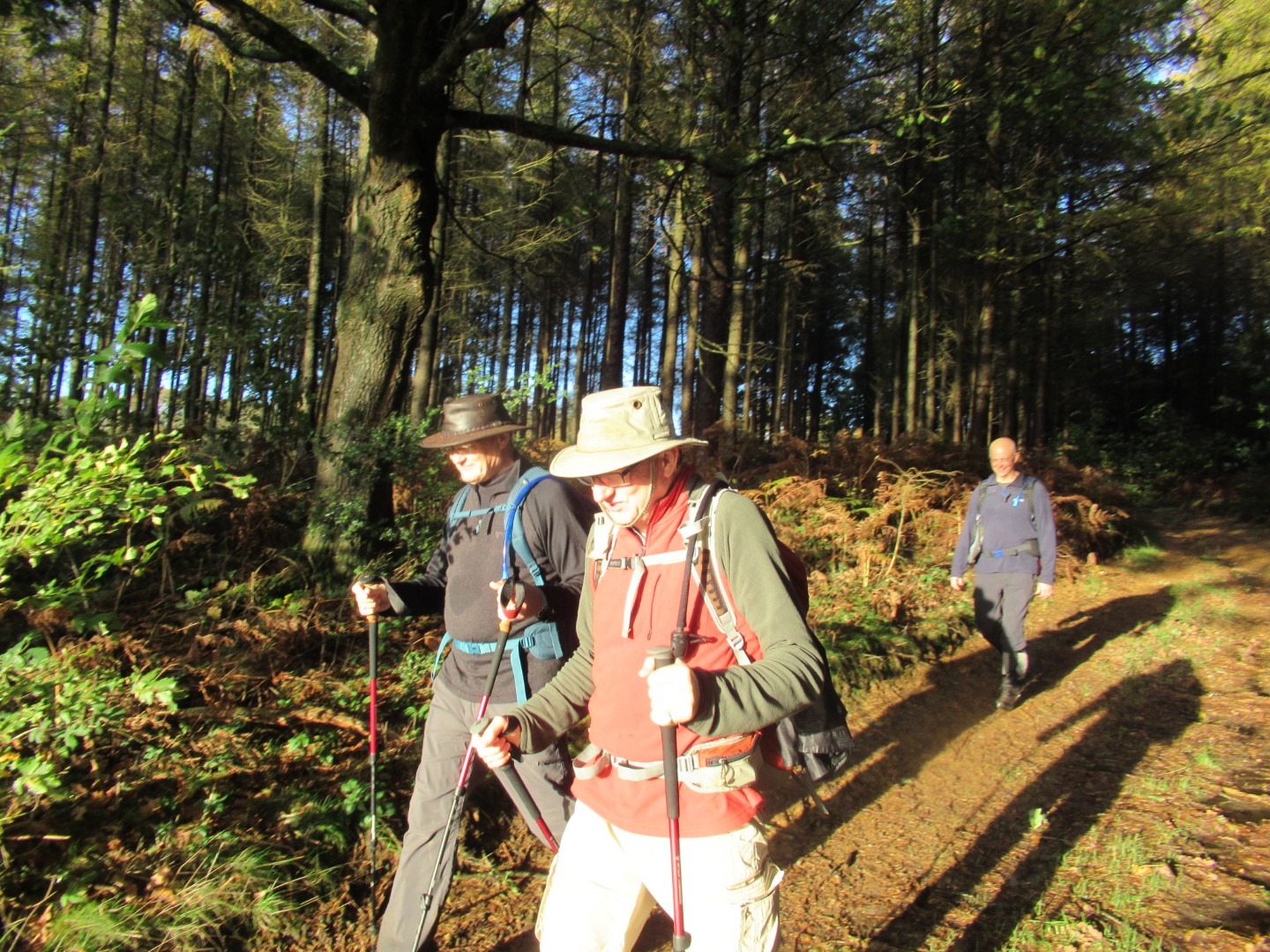
Almost there as the shadows lengthen
East Dean walk on 2nd November 2022
The weather forecast for the morning was not bad, but rain was forecast for the afternoon. In the event we did have a couple of showers but nothing to spoil the enjoyment of walking in the South Downs. Jennifer took us from the Star and Garter up the road to All Saints church. We paused briefly to find the grave of Christopher Fry, writer of the play The Lady's Not for Burning, his most successful work which gave employment to Richard Burton, Jack Hawkins, John Gielgud and Claire Bloom amongst others. Margaret Thatcher deliberately misquoted him with "You turn if you want to — the lady’s not for turning,"
We then tackled Court Hill and on into Wood Lea before turning to descend North Down and then up North Lane to find an excellent drink stop. Suitably refreshed we headed back up Wood Lea through the woods to the West Sussex Literary Trail. We had to dodge a few fallen trees but all survived to eventually descend into the village of East Dean. Lunch was at the Star and Garter.
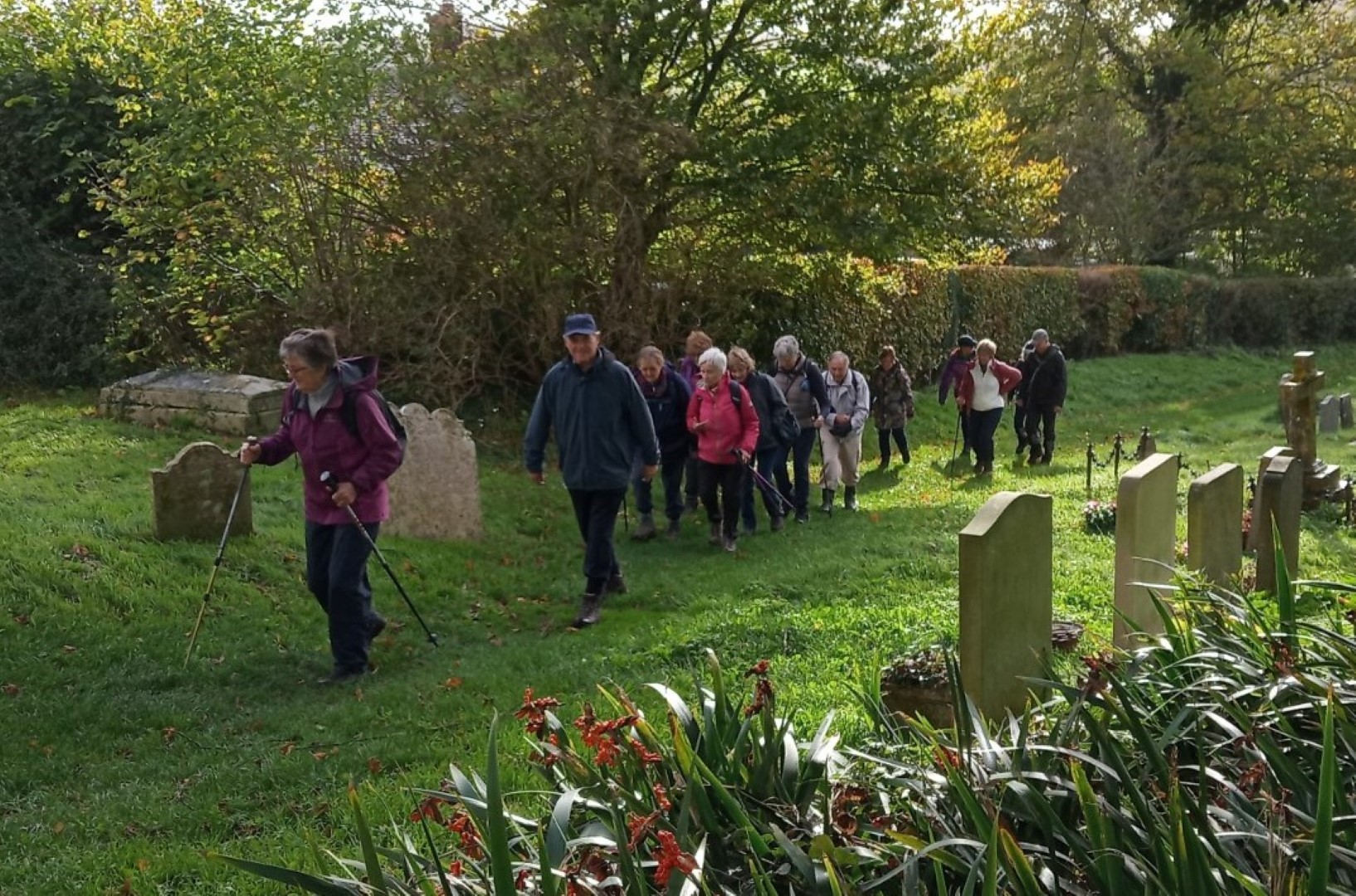
All Saints churchyard
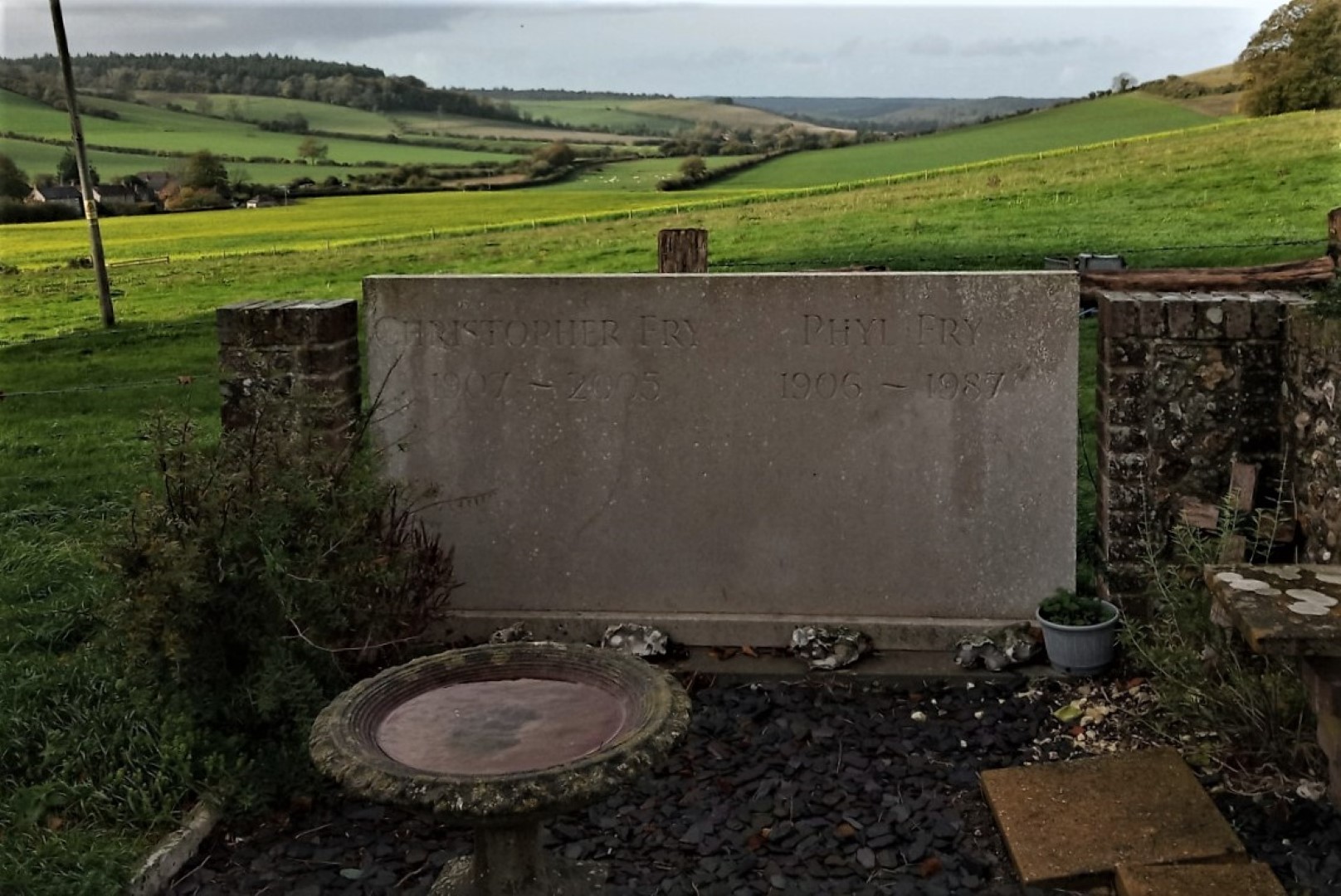
Last resting place of Christopher Fry
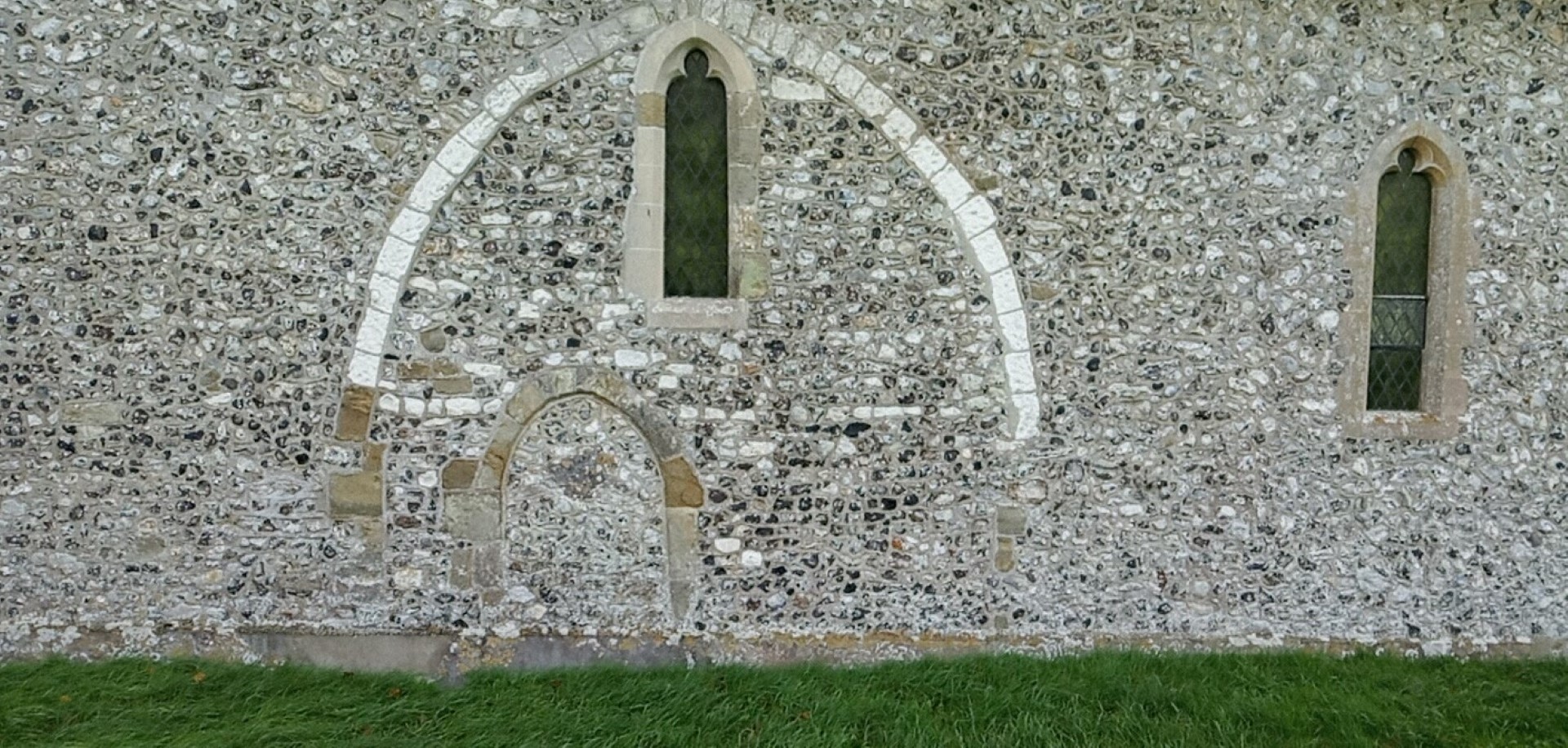
North wall of All Saints church. Builder on the left couldn't quite make his mind up, then thought "I'll just copy that window next door."
.jpg)
Storming up Court Hill
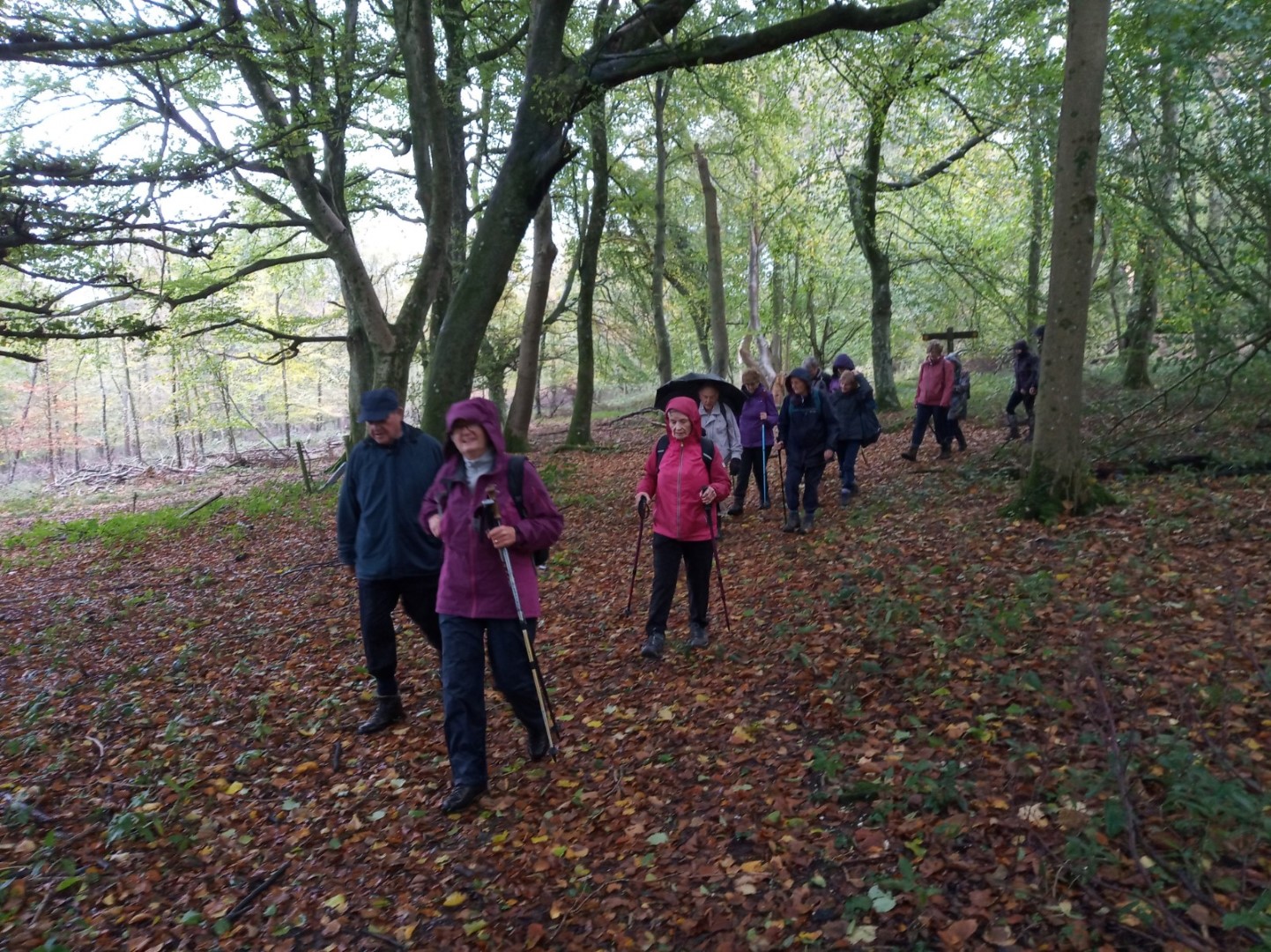
Rain in Wood Lea

Down towards North Lane
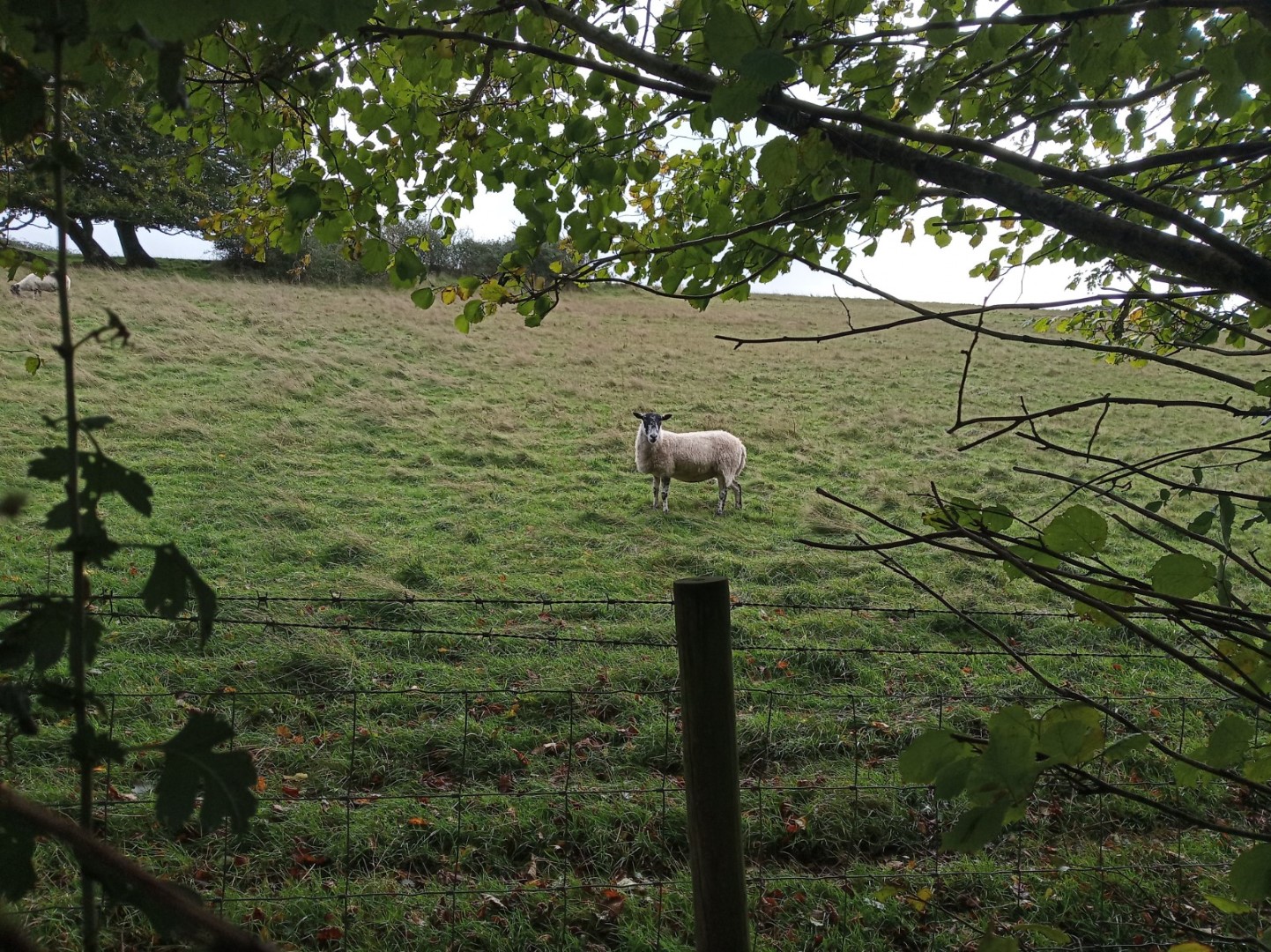
"Who are you looking at?"
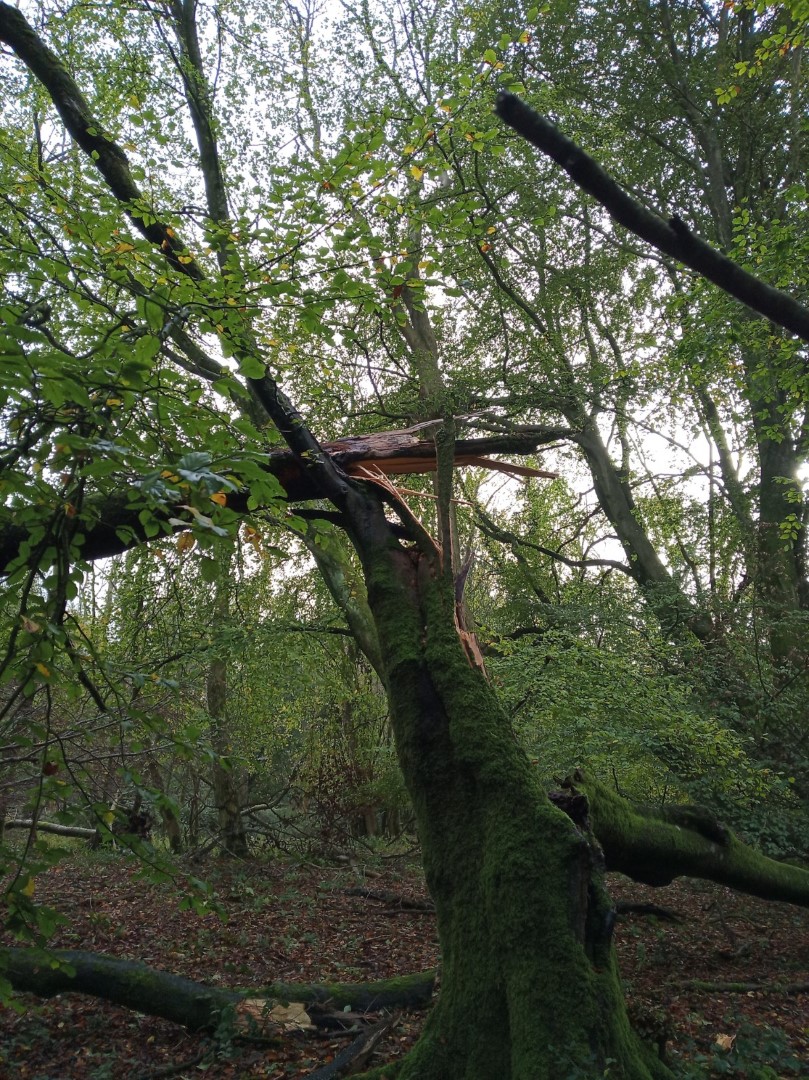
Recent winds have been very damaging
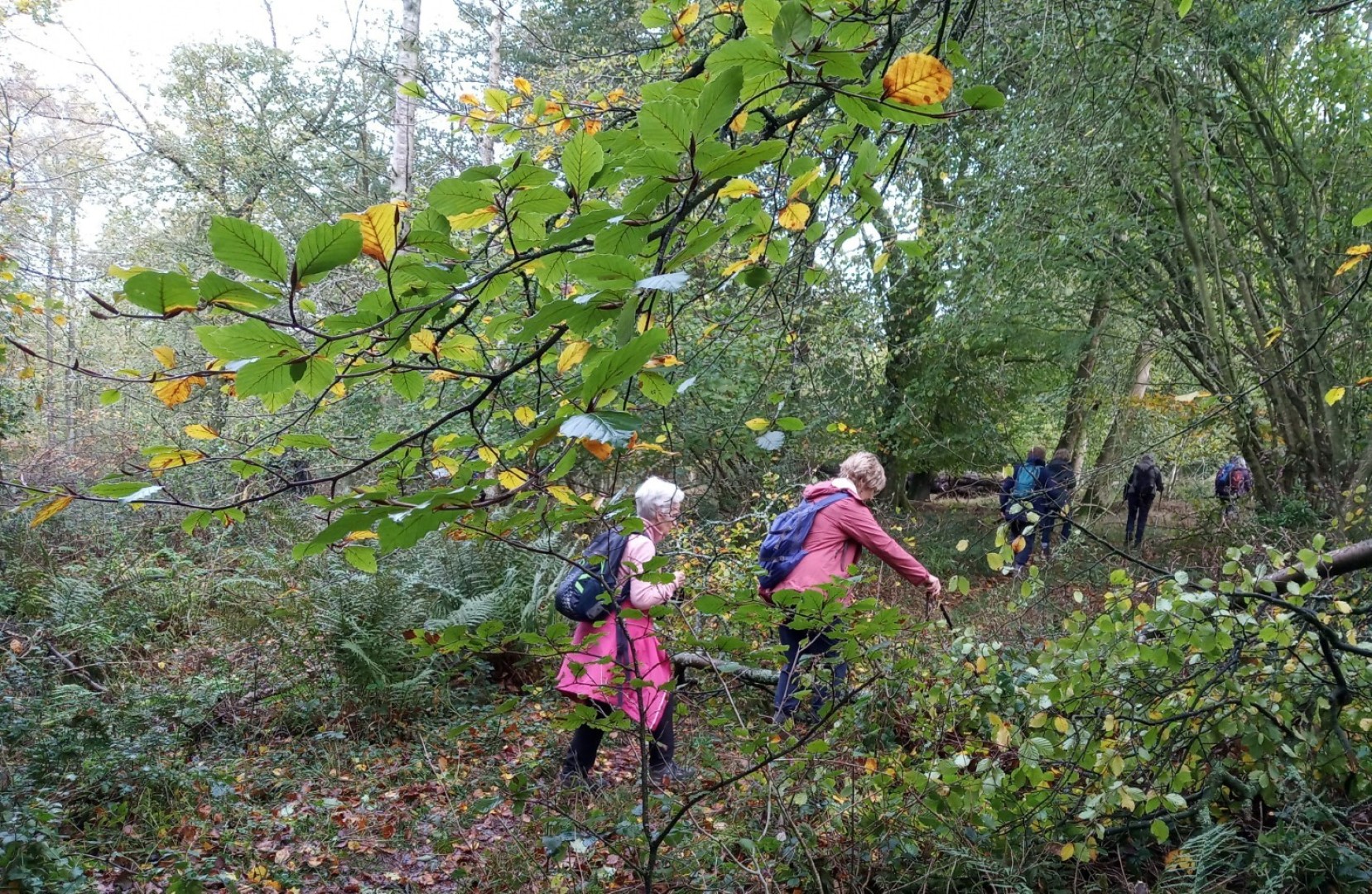
But we managed to find a way through
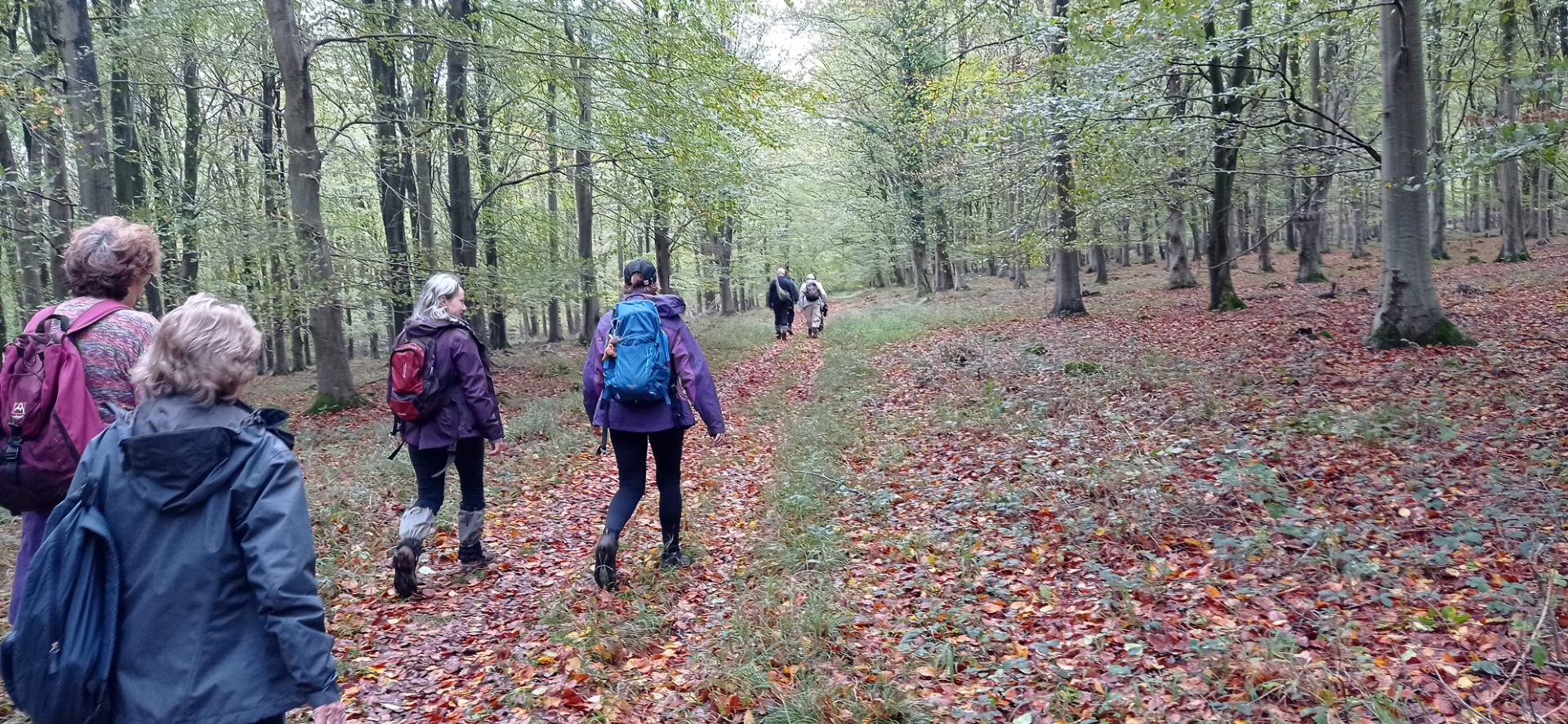
Luckily some parts of Wood Lea were not quite so difficult
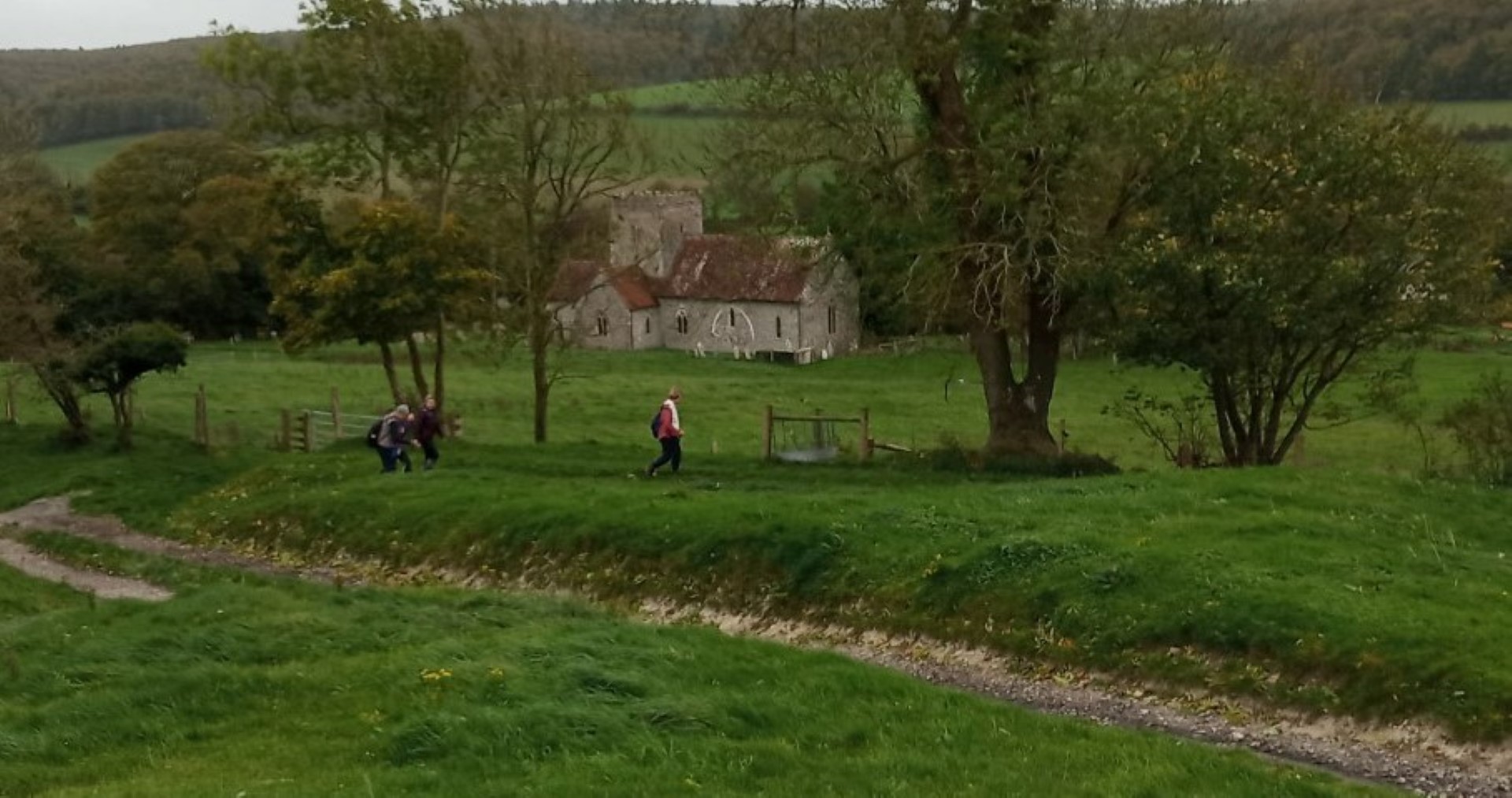
Back down into the village, taking a different path past All Saints
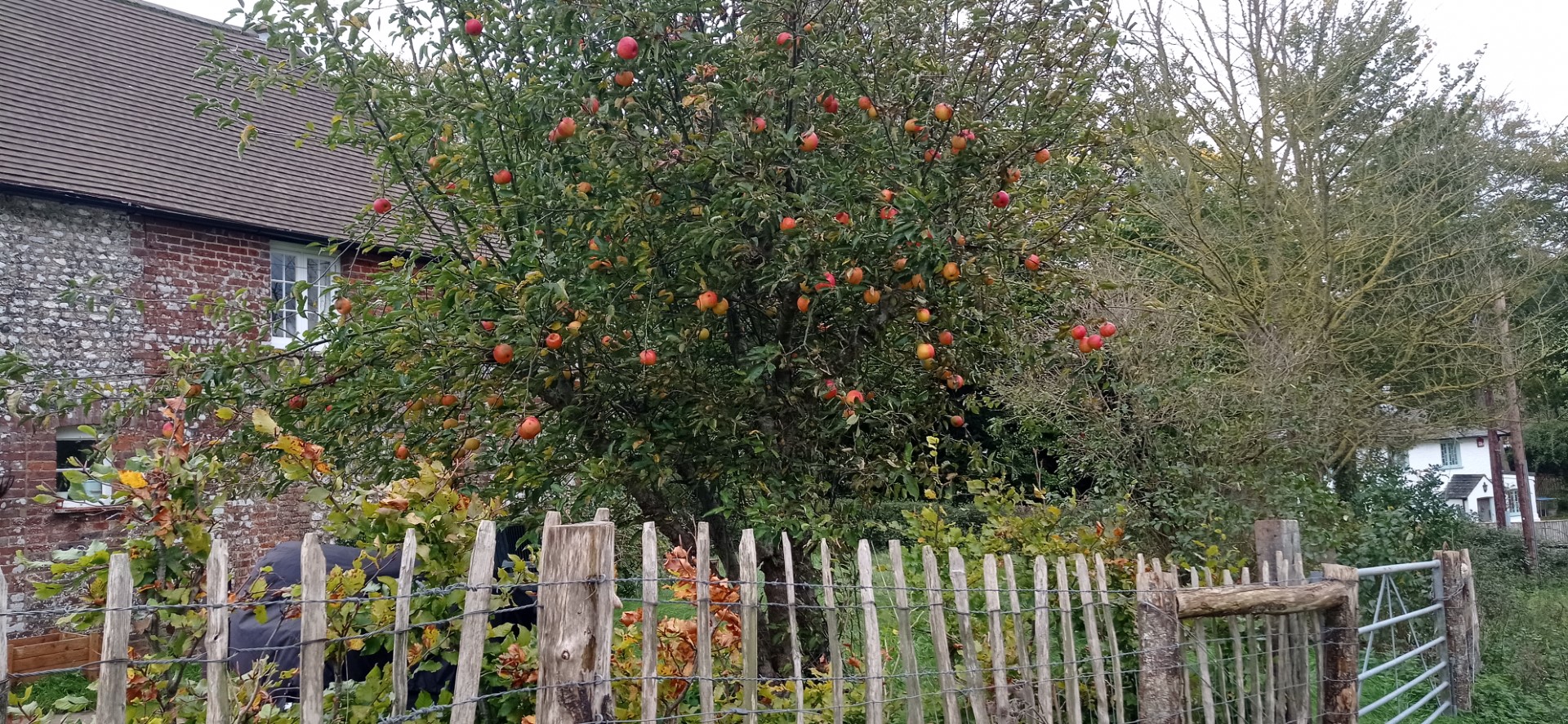
It's November, and still a tree full of apples
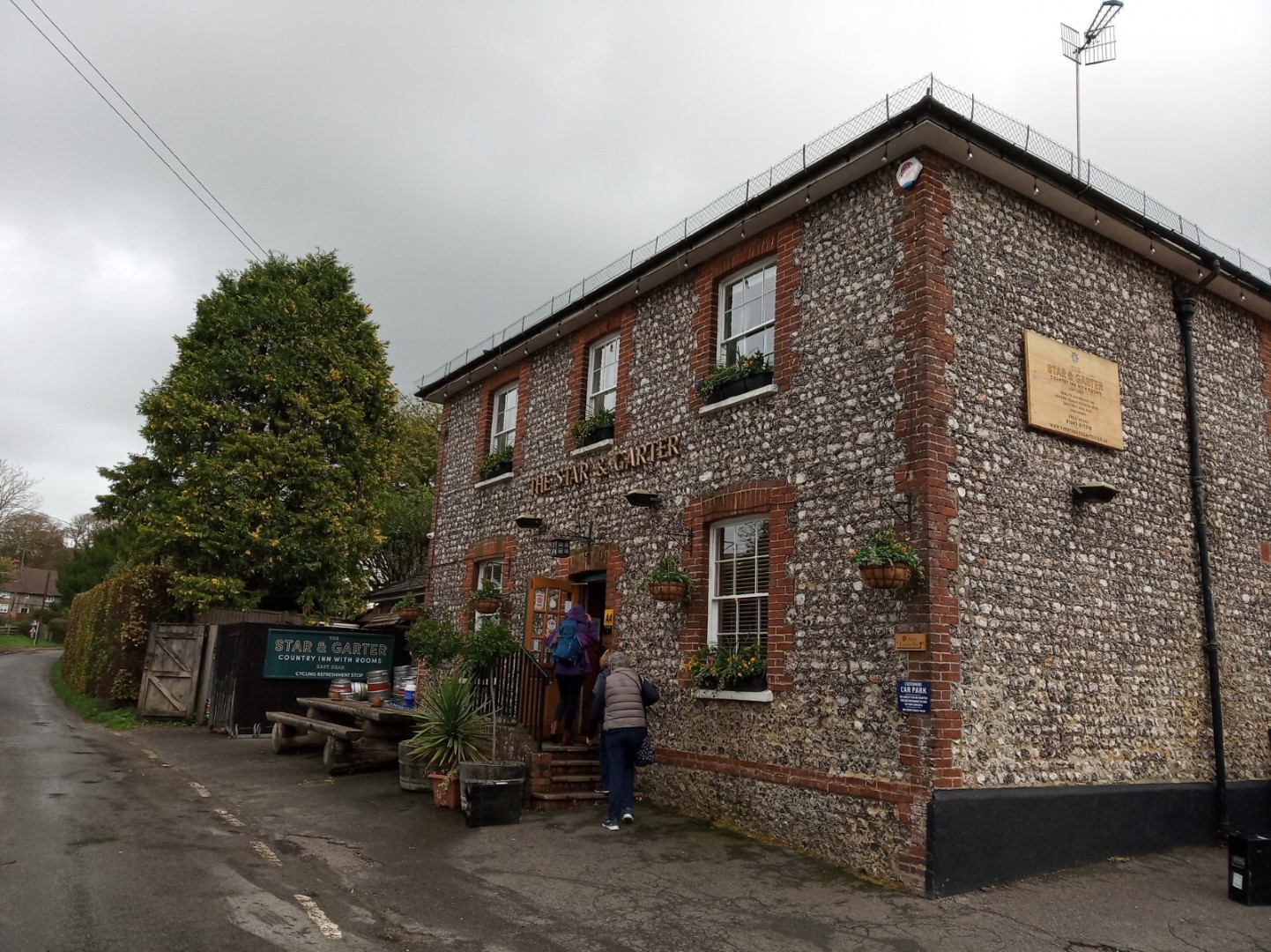
Star and Garter at last!
.jpg)
Happy walkers before their meal.
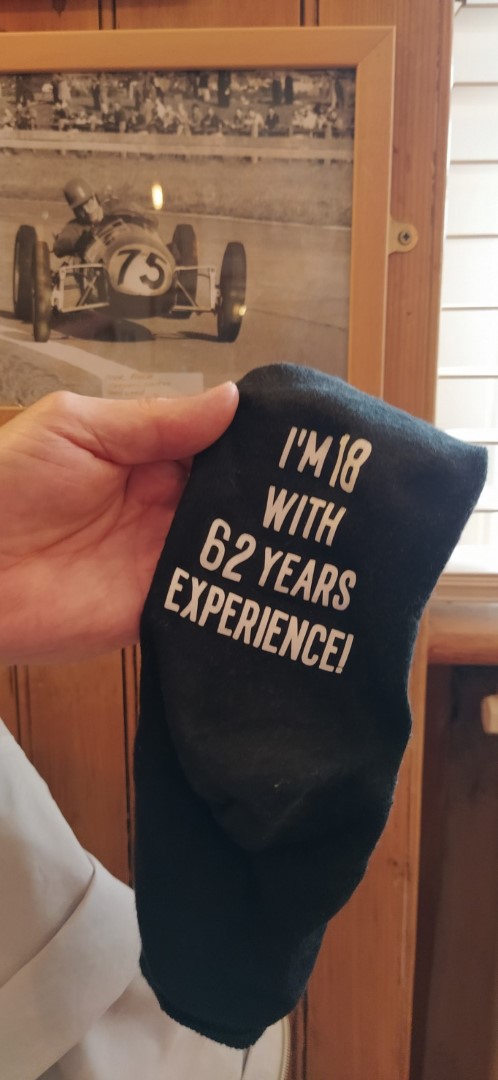
Can't think whose sock this could be?
.png)
About 5 miles
Recent galleries
- Amberley Walk on 5th November 2025
- Redford and AGM walk on 29th October 2025
- Chiddingfold walk on 22nd October 2025
- Petworth Park walk on 15th October 2025
- West Dean walk on 8th October 2025
History
2025
- November (1)
- October (5)
- September (4)
- August (4)
- July (5)
- June (4)
- May (5)
- April (4)
- March (5)
- February (3)
- January (4)
2024
- December (3)
- November (5)
- October (4)
- September (4)
- August (4)
- July (4)
- June (5)
- May (5)
- April (5)
- March (5)
- February (5)
- January (4)
2023
- December (3)
- November (6)
- October (5)
- September (5)
- August (3)
- July (4)
- June (6)
- May (5)
- April (4)
- March (5)
- February (4)
- January (4)
2022
- December (4)
- November (5)
- October (5)
- September (3)
- August (4)
- July (6)
- June (11)
- May (4)
- April (5)
- March (4)
- February (5)
- January (4)
2021
2020
- December (4)
- November (1)
- October (5)
- September (4)
- August (3)
- July (3)
- March (2)
- February (5)
- January (3)
2019
- December (2)
- November (5)
- October (4)
- September (3)
- August (4)
- July (4)
- June (11)
- May (5)
- April (4)
- March (3)
- February (5)
- January (5)
2018
- December (2)
- November (4)
- October (4)
- September (5)
- August (4)
- July (3)
- June (5)
- May (8)
- April (4)
- March (4)
- February (5)
- January (3)
2017
- December (3)
- November (5)
- October (3)
- September (4)
- August (4)
- July (4)
- June (11)
- May (4)
- April (4)
- March (3)
- February (4)
- January (5)
2016
- December (3)
- November (4)
- October (5)
- September (4)
- August (3)
- July (6)
- June (11)
- May (4)
- April (5)
- March (3)
- February (10)
- January (2)
2015
2014
- June (2)
1997
- February (1)